Charles Lindbergh
description: American aviator, author, inventor, explorer, and social activist
225 results
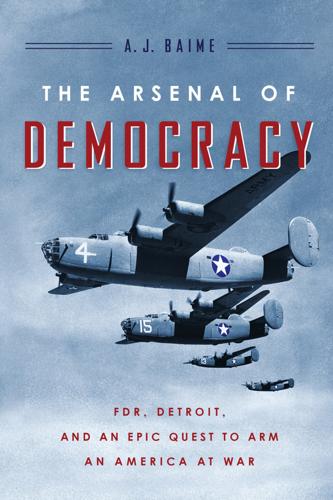
The Arsenal of Democracy: FDR, Detroit, and an Epic Quest to Arm an America at War
by
A. J. Baime
Published 2 Jun 2014
He had a health crisis brewing, and there seemed no way to stop it. 17 Will It Run? Spring to Fall 1942 I have seen the science I worshiped, and the aircraft I loved, destroying the civilization I expected them to serve. —CHARLES LINDBERGH AT 12:30 PM ON March 24, 1942, a train screeched into Michigan Central Station in Detroit, bound from Boston. From a Pullman car, Charles Lindbergh stepped onto the siding with a suitcase in his hand. The platform appeared crowded. All over the country, urban train stations were symbolic microcosms of America in wartime—everyone in a hurry to get somewhere, teeming crowds, a great migration, most notably fresh-faced boy-men in military uniform.
…
Willow Run was “not yet in production.” 20 A Dying Man Fall 1942 to Winter 1943 This hour I rode the sky like a god, but after it was over, how glad I would be to go back to earth and live among men, to feel the soil under my feet and to be smaller than the mountains and trees. —CHARLES LINDBERGH CIRCLING THE SKIES OVER Willow Run in the flight deck of a B-24, Charles Lindbergh worked through a series of maneuvers with a copilot beside him. He had probably piloted a wider array of flying machines than any American. But he’d never flown an airplane as uncomfortable—nor any that required as much pure arm strength—as a B-24 Liberator.
…
. [>] “picked a site for this”: Henry Ford, telegram to Franklin Roosevelt, May 19, 1942, file 3217, Franklin Roosevelt Papers, “Official File,” FDR Library, Hyde Park, NY. [>] Harry Bennett sent his men: Harry Bennett, as told to Paul Marcus, Ford: We Never Called Him Henry (New York: Tom Doherty Associates, 1987), p. 263. 17. Will It Run?: Spring to Fall 1942 [>] “I have seen the science”: Charles Lindbergh, Of Flight and Life (New York: Scribner’s, 1948), p. 51. [>] “I want to contribute”: Charles Lindbergh, The Wartime Journals of Charles A. Lindbergh (New York: Harcourt Brace Jovanovich, 1970), pp. 566–67. [>] “He is a ruthless and conscious”: A. Scott Berg, Lindbergh (New York: Berkley Books, 1999), p. 436. [>] “The plant has progressed”: Lindbergh, The Wartime Journals, p. 608. [>] “acres upon acres of machinery”: Ibid., p. 613. [>] “The Ford schedule calls”: Ibid., p. 609. [>] “The rest of the industry”: Ibid., p. 610. [>] “There is no question”: Charles Lindbergh, “The Future of the Large Bomber,” unpublished memo, April 10, 1942, Lindbergh Papers, Manuscripts and Archives Division, Yale University Library, New Haven, CT. [>] “the man who first put”: Ford Times, November 12, 1943. [>] “I am so anti-Hun and anti-Jap”: S.
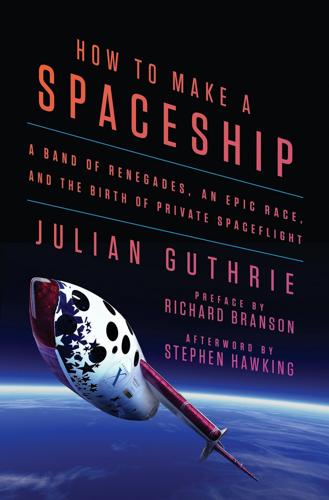
How to Make a Spaceship: A Band of Renegades, an Epic Race, and the Birth of Private Spaceflight
by
Julian Guthrie
Published 19 Sep 2016
.* Peter also read about Robert Goddard, the American physicist who built and launched the world’s first liquid-fueled rocket in 1926, an event likened in significance to the Wright brothers’ flight at Kitty Hawk. Goddard was ridiculed when he stated his belief that a big enough rocket could one day reach the Moon, but he drew support from aviator Charles Lindbergh. Peter appreciated how Goddard’s rocket experiments as an undergraduate at the Worcester Polytechnic Institute yielded explosions and smoke that sent professors running for fire extinguishers. Peter learned about German physicist Hermann Oberth, also a believer in liquid-fueled rockets over solid-fuel rockets, and another German, Wernher von Braun, father of the Saturn V, which came out of his work for Nazi Germany on the V-2 ballistic missile during World War II.* Peter knew that if it weren’t for von Braun and his group of German engineers, the United States would not have reached the Moon by the end of the 1960s.
…
Aviation experts gave the Voyager little chance of success, because of the compromises Burt had made in its design and construction, and because his aim was nothing less than to double an aviation record that had stood for almost a quarter century. There was every reason to believe the Voyager would land for no other reason than pilot exhaustion. This was a test of flying skill, physical endurance, and breakthrough design. Just as Charles Lindbergh had done with the Spirit of St. Louis in 1927, Burt had pared down the Voyager to its lightest possible weight. The in-flight tools, whether wrenches or screwdrivers, were hollowed out. The top of the plane got only a light coat of white paint, to keep the structure cool in the hot desert sun.
…
The twenty-one-year-old closed his eyes and inhaled the cold air, knowing the day ahead would be anything but calm. Erik’s goal on this early August morning in 1986 was to summit the 14,411-foot mountain, the highest peak in the Cascade Range. Climbing Rainier wouldn’t be a history-making event like his grandfather’s plane flight, the 1927 journey across the Atlantic to Paris that made Charles Lindbergh a hero and at the time arguably the most famous man on Earth. But—for now—scaling Rainier would be Erik’s Paris, his milestone. He was intent on staying clear of anything too predictably “Lindberghian.” A friend was trying to persuade him to get his pilot’s license, but Erik found it way too obvious.
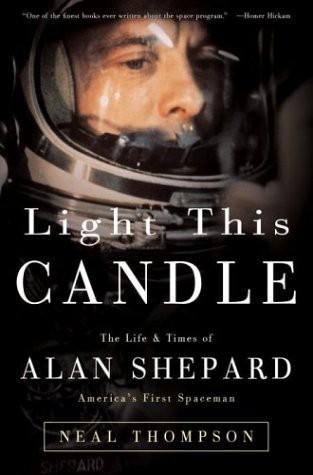
Light This Candle: The Life & Times of Alan Shepard--America's First Spaceman
by
Neal Thompson
Published 2 Jan 2004
8 - “That little rascal” Part II - INTO SPACE 9 - “We made them heroes, the first day they were picked” 10 - Eyeballs in, eyeballs out 11 - “A harlot of a town” 12 - “I think I got myself in trouble” 13 - “We had ’em by the short hairs, and we gave it away” 14 - “Light this candle!” 15 - “I believe we should go to the moon” 16 - “I’m sick . . . should I just hang it up?” 17 - How to succeed in business without really fllying—much 18 - “Captain Shepard? I’m Charles Lindbergh” 19 - “What’s wrong with this ship?” Part III - AFTER SPACE 20 - “When you’ve been to the moon, where else are you going to go?” 21 - “I saw a different Alan Shepard, completely different” 22 - “This is the toughest man I’ve ever met” NOTES BIBLIOGRAPHY Acknowledgments About the Author Copyright Page For Mary Man must rise above the Earth—to the top of the atmosphere and beyond—for only thus will he fully understand the world in which he lives.
…
So she often assigned him extra work: a paper on James Fenimore Cooper’s The Last of the Mohicans (on which he got an A), a report on the Middle Ages (B+), a stamp collection. When Shepard was eleven, Wiggins asked him to write and bind his own book, and he decided it was time to compose his autobiography. At the time, Alan had become enamored of Charles Lindbergh and kept on his bedside table a copy of Lindbergh’s autobiography, We. In a show of how strong Shepard’s ego had already become by age eleven, the book was titled “Me.” Later, as a test pilot and astronaut, Shepard would need to absorb huge amounts of highly technical information, and could often do so without needing to write things down—a capacity he credited to Mrs.
…
He even had a determined manner of walking—instead of following sidewalks, Shepard usually walked quickly and in a straight line, stepping over shrubs and across lawns to get where he was going. But as a boy, the most distinctive sign of that determination was his precocious fascination with—and pursuit of—flying airplanes, an interest that bordered on obsession. Even without his historic flight across the Atlantic in 1927, stories of Charles Lindbergh’s aerial daredevilry were enough to thrill a generation of boys like Shepard, who collected airplane magazines and read and reread Lindbergh’s autobiography, We. We recounted Lindbergh’s earlier adventures, such as barn-storming from town to town in his open-cockpit biplane, offering $5 sightseeing flights, dropping straw-filled dummies from his plane, or even standing on a wing while a copilot flew.
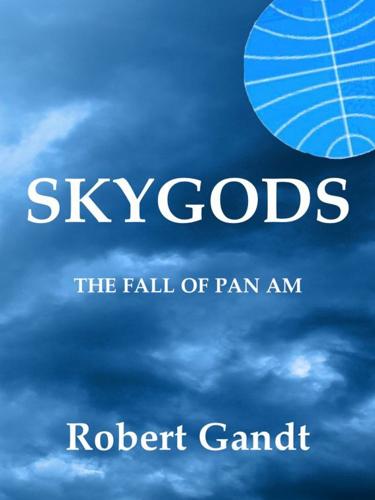
Skygods: The Fall of Pan Am
by
Robert Gandt
Published 1 Mar 1995
But he had reason to be optimistic. Things were happening in aviation. Whitney and Hambleton were ready to join him in a new venture called Aviation Corporation of America. They intended to bid on a proposed airmail route between Key West and Havana. Another young man, a lanky airmail pilot named Charles Lindbergh, had just proved the feasibility of transoceanic flight. And in Florida a new airline was being formed for the purpose of flying into Latin America. It was called Pan American Airways. Pan American was the dream child of Major Henry ”Hap” Arnold of the Army Air Corps. With his colleague Major Carl Spaatz, Arnold had raised an alarm in Washington about a German-operated airline in Central and South America called SCADTA (Sociedad Colombo Alemana de Transportes).
…
Flying the Atlantic in half the time of its propeller-driven predecessors meant the jet could transport many more passengers in the same time frame. To Juan Trippe, jets meant faster travel, lower fares, more passengers, expanding airlines—and thus profit. Why did the Primitives never understand that? Charles Lindbergh was Trippe’s advance scout. Even before the war was over, while he was still working for Pratt & Whitney, Lindbergh had entered collapsing Germany to sniff out secret new developments. He was looking primarily for jets, and he found them. He discovered advanced jet engine production. He found the startlingly advanced twin-engine Messerschmitt Me 262, the world’s first operational jet fighter.
…
He found the startlingly advanced twin-engine Messerschmitt Me 262, the world’s first operational jet fighter. He came upon a swept-wing aircraft, evidence that the Germans were already exploring the realms of transonic and supersonic flight. He even found Germany’s leading builder of exotic aircraft, Willy Messerschmitt, living in a cow barn next to his house in Munich. Charles Lindbergh had an association with Pan Am that went back almost as far as Juan Trippe’s. Lindbergh had served as the captain on the inaugural flight of the American Clipper, Pan Am’s first great Sikorsky flying boat. It was Lindbergh who surveyed the airmail routes across Latin America. When Trippe was thinking about the Pacific, he dispatched Lindbergh, with his young wife Anne flying as radio operator and navigator, on a survey mission.

Top 10 Maui, Molokai and Lanai
by
Bonnie Friedman
Published 16 Feb 2004
One of the Seven Pools Falls at Makahiku These magnificent 181ft falls are accessible from the Waimoku Falls Trail (half a mile up from ‘Ohe‘o Gulch ranger station). A beautiful pool at the top of the falls is great for a cooling dip. Waimoku Falls Haleakal… National Park ª TR A KAUP Ka up≥ Gap Hoku‘ula Ki Va p a h lle ul y u 4 2 0 31 Kipahulu 56 Mokulau 98 Puka‘auhuhu Kaup≥ 7 K…ki‘o Pu‘uiki Koali Charles Lindbergh’s Grave First to fly solo across the Atlantic, Charles Lindbergh (1902– 74), lived out his days amid the peaceful beauty of the H…na coast. He sketched the design for his grave, which lies behind the Palapala Ho‘omau Church in K≤pahulu. Maui’s Top 10 Farther up the trail, beyond a fantastic bamboo forest, Waimoku Falls spills 450 ft over the ledge of a high cliff, tumbling into a shallow pool.
…
As tempting as it may be, do not take any stones or other natural objects from Haleakal… National Park as souvenirs. • Map K5–J6 • K≤pahulu Ranger Station & Visitor Center: 248 7375 • Maui Visitors Bureau: 244 3530 24 1 2 3 4 5 6 7 8 9 0 ‘Ohe‘o Gulch Seven Pools Falls at Makahiku Waimoku Falls Charles Lindbergh’s Grave K≤pahulu Point Lighthouse County Park Hui Aloha Church, Kaup≥ Kaup≥ Store St. Joseph’s Church Kaup≥ Gap Waimoku Falls ‘Ohe‘o Gulch The K≤pahulu Valley, formed by the flowing waters of ‘Ohe‘o Gulch, drops steeply from the east rim of Haleakal… to the ocean. A rain forest wilderness, its fragile environment is mostly protected as a preserve and closed to the public.
…
Left Huialoha Church Right Cattle ranch Sights Wailua 6 7 8 9 Han… Cultural Center 0 Pi‘ilanihale Heiau Honoman« Bay Ke‘anae Peninsula Ke‘anae Garden of Eden Arboretum 2 3 Wailua Wailua Bay lle Wai’anapanapa State Park y ae ‘ an 4 H…na Hale ho H…moa ‘i Vall ey K…ki‘o M«‘olea lc h Gu Wailua 8 Waimoku Falls Palapala Ho‘omau Church Kipahulu 9 Kaup≥ Mamalu Bay 5 ai ‘o he p≥ Gap 31 H…na Cultural Center Kau‘iki Hill ‘O Kau A ª TR IL Nu‘u Kip a Va h ul lle u y KA U P a k a l… V a lley 6 7 W Haleakal… National Park Huakini Bay 92 Pi‘ilanihale Heiau Wai‘…napanapa State Park 5 K uhi Waimoku Falls Huialoha Church 360 wa Kau’iki Hill Palapala Ho‘omau Church (Charles Lindbergh’s grave) N…hiku H¡N A H IGH W AY Pua‘aka‘a State Wayside Park Va y 3 4 5 Kailua lle Garden of Eden Arboretum To Kahului Va The Road to H…na Ke 1 2 0 Mokulau Huialoha Church miles 0 km Previous pages Pu‘u ‘Ula‘ula summit, Haleakal… 5 The Road to H…na Famed as one of the world’s most scenic drives, H…na Highway follows the coastline from Kahului, winding through rain forests dotted with the bright orange blossoms of African tulip trees and huge bamboo thickets waving in the breeze.

Discover Maui
by
Lonely Planet
It’s hard to imagine, but this sedate community was once a bustling sugar-plantation town. After the mill shut down in 1922, most people left for jobs elsewhere. Today mixed among modest homes, organic farms and back-to-the-landers living off the grid are a scattering of exclusive estates, including the former home of famed aviator Charles Lindbergh. Sights & Activities CHARLES LINDBERGH’S GRAVE Gravesite Charles Lindbergh moved to remote Kipahulu in 1968. Although he relished the privacy he found here, he did occasionally emerge as a spokesperson for conservation issues. When he learned he had terminal cancer, he decided to forgo treatment on the mainland and came home to Maui to live out his final days.
…
Wailua Falls ( Click here ) This roadside cascade is a top contender for Maui’s most gorgeous waterfall. Haleakalā National Park ( Click here ) (Kipahulu area) The road continues to ʻOheʻo Gulch with its 24 pools, each backed by its own little waterfall. Make time to hike to the 200ft plunge of Makahiku Falls . Kipahulu ( Click here ) Seek out the grave of aviator Charles Lindbergh before heading off on the Piʻilani Hwy for a romp through cowboy country. Molokini Crater (Click here ) On day six, dive into the pristine waters of this sunken crater that harbors brilliant fish and coral. Maui Ocean Center ( Click here ) Right where the Molokini boat docks sits one of the finest tropical aquariums on the planet.
…
This chapter starts with time-honored Hana, where you’ll relearn the meaning of s-l-o-w and talk story with people who actually take the time. Beyond Hana lies Wailua Falls, the most stunning roadside waterfall on the entire island, and the cool forested trails of ʻOheʻo Gulch. In sleepy Kipahulu, discover the gravesite of famed aviator Charles Lindbergh and savor organic snacks at off-the-grid farms. A fitting finale to it all is the adventurous romp along the Piʻilani Hwy and through the cowboy village of Kaupo. Wailua Falls (Click here) PHOTOGRAPHER: DOUGLAS PEEBLES/PHOTOLIBRARY Top of chapter Hana & East Maui Itineraries One Day Hana Town Center (Click here ) If you’ve got one day it’s all about slowing down to experience Hana’s aloha.

Shoot for the Moon: The Space Race and the Extraordinary Voyage of Apollo 11
by
James Donovan
Published 12 Mar 2019
In May 1959, the astronauts visited the McDonnell plant in San Diego to inspect a mock-up Mercury capsule that was radically different from any craft they had ever flown. Deke Slayton stated the obvious: “The thing ain’t got no wings!” They were surprised to find that there was no front window, just two small portholes that were too far away from the astronaut to be useful. Pilots needed a front window—at least, they had since Charles Lindbergh crossed the Atlantic without one and had to use a periscope to see around his extra-large fuel tank—and after they insisted, one was added, though it wouldn’t be available for the first mission. Another problem was the door—there wasn’t one, or not one that could be opened from the inside, since the hatch would be welded shut after the astronaut wedged himself into the capsule.
…
He made the case that experimental test pilots were necessary in spaceflight, since the likelihood of a failure or an emergency would require their experience, knowledge, and quick reactions. The audience gave him a standing ovation. But the apes made everything worse. Other test pilots sneered at the primates preceding the astronauts in the capsule. If a monkey could do it, they opined, it couldn’t be much of a challenge. Did Charles Lindbergh have a monkey fly the Spirit of St. Louis first? The Mercury Seven were used to flying experimental planes before the kinks had been worked out. The increased hazards involved in a space venture made no difference to them—in their minds, they believed they had risked far greater dangers, not only during test flights but also in wartime combat missions.
…
On a cold March morning in New York, four million people turned out on what was officially declared John Glenn Day for a parade for all the astronauts—though it was Glenn they were really there for. The ticker tape and shredded paper fell thick as snow, and the New York sanitation department later measured the paper garbage at thirty-five hundred tons—more than Charles Lindbergh had received after his 1927 flight from New York to Paris. Glenn was the third American in space, but his fame had quickly eclipsed that of his predecessors. There would be longer Mercury flights and more complicated and more challenging ones. But Glenn would be the gold standard for astronauts.
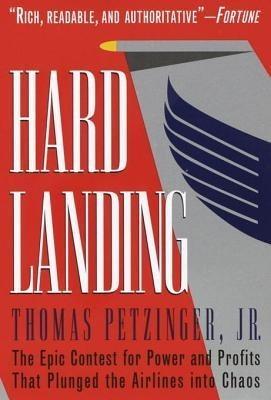
Hard Landing
by
Thomas Petzinger
and
Thomas Petzinger Jr.
Published 1 Jan 1995
HE9803.A4P48 1995 387.7′0973—dc20 95-13684 eISBN: 978-0-307-77449-1 v3.1 To Paulette And to Beatrice, Eva, and Janis It was a love of the air and sky and flying, the lure of adventure, the appreciation of beauty. It lay beyond the descriptive words of men—where immortality is touched through danger, where life meets death on an equal plane; where man is more than man. —CHARLES LINDBERGH, The Spirit of St. Louis, 1953 This is a nasty, rotten business. —ROBERT CRANDALL, American Airlines, 1994 ACKNOWLEDGMENTS I grew up around the airlines. As a teenager I handled baggage and freight for United Airlines. My late grandmother, Beatrice V. March, founded a travel agency in Ohio 40 years ago.
…
Boeing, bidding low because he built his own airplanes, won the line from Chicago to San Francisco, giving birth to what would become United Airlines. Florida Airways, created by World War I flying ace Eddie Rickenbacker, picked up the Atlanta-Miami run; it later became part of Eastern Air Lines. It was also thanks to Trippe’s action that a company called Robertson Aviation received the St. Louis-Chicago airmail route, on which Charles Lindbergh served as chief pilot. For Trippe himself, the airmail plan was fraught with unhappy irony. Though his company, Colonial Aviation, won the prized route between New York and Boston, Trippe wanted more: to bid for the route between New York and Chicago. But the cautious financiers on his board of directors feared overextension.
…
Roosevelt with great fanfare fired the private airlines and restored the mail routes to the army. Roosevelt’s move to embarrass the Republicans quickly turned into a bloody spectacle, for the military pilots no longer had the equipment or training to carry out the job. Within weeks 12 army fliers perished, five in the first week alone. The demure Charles Lindbergh took time from his trailblazing on behalf of Pan Am to harangue Roosevelt publicly, setting the nation’s two most beloved public figures against one another in a conflict that would last their lifetimes. An editorial cartoon showed FDR hiding from a dozen skeletons wearing goggles and flying caps.

The House of Morgan: An American Banking Dynasty and the Rise of Modern Finance
by
Ron Chernow
Published 1 Jan 1990
Then one day, I made a startling discovery: the papers of Thomas W. Lamont, senior partner of the Morgan bank during the inter-war years, resided at the Harvard Business School Library. During my first day of research there, I pored over correspondence between Lamont and Franklin Roosevelt, Benito Mussolini, Charles Lindbergh, and Nancy Astor. These papers threw open a window on the hermetically sealed world of Morgan partners. Aside from the grace and clarity of these letters—old-school bankers tended to be surprisingly literate—they were detailed and gripping beyond my wildest imaginings. When Lamont spoke on the telephone with President Herbert Hoover, for instance, a dutiful amanuensis took down a verbatim transcript.
…
During rallies at the Corner, agitators would point to 23 Wall and blame Morgan partners for killing thousands of innocents. Senator Robert La Follette echoed small-town sneers when he asked, “What do Morgan and Schwab [head of Bethlehem Steel] care for world peace, when there are big profits in world war?”21Minnesota congressman Charles Lindbergh, who had prompted the Pujo hearings, now condemned the “money interests” for trying to lure the country into war on the side of the Allies. A dual myth was being born—that the Morgans were stooges of the British crown and that their money was drenched in blood. The bank received a flood of hate mail.
…
In 1925, Daniel and Harry Guggenheim—old friends of Dwight’s from his Kennecott Copper days—set up a special $3-million fund to advance aviation. Through Morrow, they got Coolidge to accept the money on behalf of the government to speed up airplane development. Through his stint on the Aviation Board, Dwight Morrow became friends with the young Charles Lindbergh. In fact, Morrow’s files show that the Morgan partners ended up paying for Lindbergh’s historic flight to Paris aboard The Spirit of St. Louis. Under the original scheme, Lindbergh had planned to compete for the $25,000 Orteig Prize, set up to reward the first nonstop flight between New York and Paris.
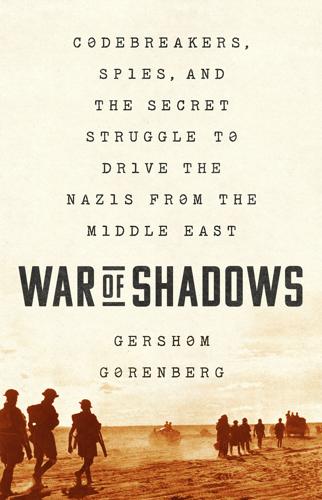
War of Shadows: Codebreakers, Spies, and the Secret Struggle to Drive the Nazis From the Middle East
by
Gershom Gorenberg
Published 19 Jan 2021
UNITED STATES Prescott Currier: officer and codebreaker in the US Navy’s OP-20-G signal intelligence agency Dwight Eisenhower: general, deputy chief, then chief of army planning; later commander of Operation Torch Bonner Frank Fellers: military attaché in Egypt William Friedman: codebreaker, director of the US Army’s Signal Intelligence Service James Fry: assistant military attaché in Egypt Genevieve Grotjan: codebreaker, Signal Intelligence Service Solomon Kullback: codebreaker, Signal Intelligence Service Alexander Kirk: ambassador to Egypt Charles Lindbergh: aviator and isolationist leader George Marshall: general, army chief of staff Russell Maxwell: general, commander of US military supply mission in Egypt William Phillips: ambassador to Italy Franklin Delano Roosevelt: president Leo Rosen: officer and engineer, Signal Intelligence Service Frank Rowlett: codebreaker, Signal Intelligence Service Henry Stimson: Republican politician, secretary of state under Herbert Hoover, secretary of war under Franklin Roosevelt Sumner Welles: undersecretary of state BRITAIN Jean Alington: Bletchley Park translator Claude Auchinleck: general, British commander in chief, Middle East Ralph Bagnold: army officer and explorer, founder and commander of the Long Range Desert Group Alan Brooke: general, chief of the Imperial General Staff Herbert Cecil Buck: army officer, commander of the Special Interrogation Group, SIG Neville Chamberlain: prime minister until May 1940 Winston Churchill: prime minister from May 1940 Joan Clarke: codebreaker at GC&CS Dorothy (“Peter”) Clayton: aviator and explorer, wife of Robert Clayton Pat Clayton: explorer, later officer in the Long Range Desert Group Robert Clayton: navy pilot and explorer, husband of Dorothy Clayton Alan Cunningham: general, commander of the Eighth Army in Libya, 1941 Andrew Cunningham: admiral, commander in chief, Mediterranean Fleet Alastair Denniston: naval officer, codebreaker, first director of GC&CS, Government Code and Cipher School, British signal intelligence John Dill: field marshal, chief of the Imperial General Staff, later British military’s representative in Washington Russell Dudley-Smith: naval officer, codebreaker at GC&CS Aubrey (Abba) Eban: army officer, Special Operations Executive liaison in Palestine Anthony Eden: Conservative politician, secretary of state for war, then foreign secretary Ian Fleming: assistant to the director of British naval intelligence, younger brother of Peter Fleming Peter Fleming: author and army officer Lord Halifax (Edward Frederick Lindley Wood): foreign secretary, afterward ambassador to the United States John Haselden: army intelligence officer John Herivel: codebreaker at GC&CS Harry Hinsley: codebreaker and traffic analyst, GC&CS Dillwyn (Dilly) Knox: codebreaker, original head of the Enigma section of GC&CS Jacqueline Lampson: half-Italian wife of Miles Lampson Miles Lampson: ambassador to Egypt Mavis Lever: codebreaker at GC&CS Percy Loraine: ambassador to Italy Harold MacMichael: high commissioner of Palestine Raymond Maunsell: army officer, head of Security Intelligence Middle East, SIME Stewart Menzies: director of MI6, alias “C,” after Hugh Sinclair Stuart Milner-Barry: codebreaker, GC&CS Alan Moorehead: war correspondent Philip Neame: general, commander of British forces in Palestine, later commander of British forces in Libya Francis D’Arcy Osborne: envoy to the Holy See Reg Parker: codebreaker at GC&CS Hubert Penderel: aviator and explorer George Pollock: director of Special Operation Executive’s Middle East office Guy Prendergast: explorer, Bagnold’s successor as commander of the Long Range Desert Group Hermione, Countess of Ranfurly Daniel Knox, Earl of Ranfurly: Hermione’s husband, army officer Neil Ritchie: general, commander of the Eighth Army Hugh Sinclair: admiral, director of MI6, alias “C,” until his death late in 1939.
…
“As long as it remains within my power to prevent, there will be no blackout of peace in the United States,” Roosevelt concluded.13 The president’s practical proposal for taking sides while staying out of war was to sell arms to Britain and France. That required Congress to repeal the 1935 Neutrality Act. The country’s best-known isolationist, aviator Charles Lindbergh, gave his own national radio broadcast to rally opposition. The speech was tinged with Nazi talking points on the injustice of the post–Great War borders. The only kind of war that America should enter, Lindbergh said, would be one to preserve white supremacy. “These wars in Europe are not wars in which our civilization is defending itself against some Asiatic intruder,” Lindbergh said.
…
“With deep-dyed anti–New Dealers turning into Third-Termers overnight,” an unsigned Life article said, “his chances of reelection rose rapidly.”25 In July, at a Democratic convention orchestrated to show that the party had risen as one to beg him to run again, he was nominated for another term. “We are all agreed that Roosevelt seems determined to get us into the war as soon as he can,” Charles Lindbergh wrote in his diary, after a meeting in Washington with isolationist members of Congress. At a rally in Chicago, Lindbergh was the headline speaker. The organizers were disappointed they’d only half-filled the seventy-five-thousand-seat Soldier Field stadium, but Lindbergh’s speech was broadcast on national radio.
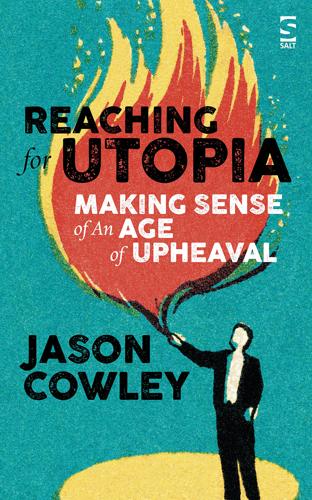
Reaching for Utopia: Making Sense of an Age of Upheaval
by
Jason Cowley
Published 15 Nov 2018
Roth is adept at simultaneously asserting the veracity of the stories he tells while seeking to undermine them by drawing attention to their artificiality. Roth’s strategy is one of complete disclosure interwoven with complete disavowal. Roth has said that there is at least one significant difference between Charles Lindbergh and Trump, whom he mocked as ‘the boastful buffoon’. ‘It’s the difference in stature between a President Lindbergh and a President Trump. Charles Lindbergh, in life as in my novel, may have been a genuine racist and an anti-Semite and a white supremacist sympathetic to fascism, but he was also – because of the extraordinary feat of his solo transatlantic flight at the age of twenty-five – an authentic American hero thirteen years before I have him winning the presidency.
…
The present as it is lived never feels like that; it is discontinuous, contingent. In truth, most of us live with a sense, even if only subconsciously, of the terror of the unforeseen, the event over which we have no control but which ineradicably alters the direction of our lives. In The Plot Against America, the unforeseen is the election of Charles Lindbergh as president after he defeats Roosevelt. In 1927 Lindbergh, a former airmail pilot, became at the age of twenty-five the first person to fly non-stop across the Atlantic, in his single-engine monoplane, the Spirit of St. Louis. He flew from New York to Paris without a radio or navigation aids, and his flight took him nearly thirty-four hours.
…
At an America First Committee rally in Des Moines in 1941 (Roth moves the speech to 1940), he spoke of American Jews as ‘other peoples’, and warned Americans not to allow the ‘natural passions and prejudices’ of Jews to lead ‘our country to destruction’. You will learn very little about the true history of Charles Lindbergh from Roth’s novel. To Roth, he is less a historical figure – the ‘last naive hero’, as Ballard calls him – than a convenient device, a figure through which Roth can invert the founding ideal of the United States, transforming this proud vessel of migrations and new beginnings into a dystopia, the worst possible world for Jews.
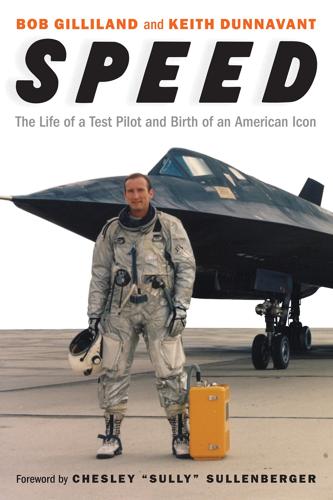
Speed
by
Bob Gilliland
and
Keith Dunnavant
Elizabeth was never one to let an arbitrary rule stand in her way, and this moment and others like it shaped Bob’s development. “I guess you could say I learned from my mother that not all rules carried the same weight,” he said. By this time, Bob had started to develop an interest in aviation. Three decades after the Wright brothers took flight on a windy day at Kitty Hawk and just a few years after Charles Lindbergh became the first man to fly solo and nonstop across the Atlantic—landing to a hero’s welcome in Paris on May 21, 1927, his Spirit of St. Louis surrounded by an ecstatic throng of 150,000—commercial air travel was still in its infancy. It was the age of the barnstormer, when daredevil pilots brought the romance of flight to wide-eyed patrons who gathered at county fairs and in random pastures and vacant lots across the land, often utilizing biplanes left over from World War I.
…
LeVier was nearing the end of his brilliant career, which included flying 260 different types of aircraft and logging more than ten thousand hours. He remained the standard by which all Lockheed test pilots were judged. “A lot of people think Chuck Yeager was the greatest American test pilot,” Gilliland said. “I say it was Tony LeVier.” Among his many aviation friends was Charles Lindbergh, who had inspired his career. When Lucky Lindy came west for a banquet, LeVier wrangled an invitation for Bob and introduced the men, who had a nice conversation that concluded with Lindbergh’s promise to send him a copy of his recently published autobiography. A year or two later, when the legendary aviator returned to Los Angeles and Gilliland once again made the guest list, Bob started peppering him with questions and marveling at his ability to stay awake for nearly thirty-four hours while crossing the Atlantic.
…
Not long after Gilliland began his new assignment, Cooper completed twenty-two orbits of the earth in his Faith 7 capsule, accumulating more time in space than all the previous five Mercury astronauts combined. He was paraded down Broadway amid a blur of confetti, cementing his legend in a tribute reserved for American heroes including Charles Lindbergh, Howard Hughes, and John Glenn. In time, the public would learn that the road to the moon began much earlier, with the accumulation of practical knowledge gained by the rocket-propelled aircraft and other high-altitude testing. Project Manhigh was the brainchild of Colonel John Paul Stapp, a physician whose pioneering research included inventing techniques to help pilots overcome decompression sickness.
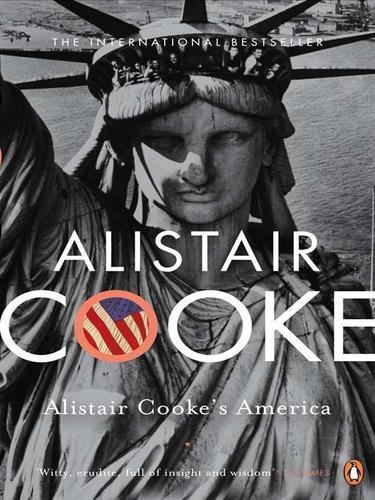
Alistair Cooke's America
by
Alistair Cooke
Published 1 Oct 2008
Abraham Lincoln. (The Meserve Collection, Courtesy of Philip B. Kunhardt, Jr) 15. Rockefeller et al. (Brown Bros) 16. Italian immigrant family, 1905. (George Eastman House) 17. Lynching, Indiana, 1930. (Lyon-Magnum) 18. Teddy Roosevelt. (Brown Bros) 19. Woodrow Wilson. (Library of Congress) 20. Charles Lindbergh with monoplane. (Brown Bros) 21. Franklin Roosevelt, 1939. (Wide World Photos) 22. The burning hulk of U.S.S. Arizona. (U.S. Navy) 23. D-Day landings. (U.S. Coast Guard) 24. John F. Kennedy in the Oval Office. (A. Rickerby / T. L. Picture Agency) 25. Two bored Marines, Vietnam. (David Douglas Dunn) 26.
…
Into it, thirty-three hours after just missing the telephone wires on Long Island, the strange plane trundled and stopped. It was engulfed by one hundred thousand Parisians. When they lifted the pilot out of the cockpit, if he had said he was Alexander the Great, they’d have believed him. He reportedly said simply: ‘I am Charles Lindbergh.’ He came home to naval salutes and a frenetic press, and a ticker-tape parade up Broadway. The ticker-tape parade was to become New York’s special accolade for a few carefully chosen national gods. Down the decades the biggest blizzards have been reserved for such returning heroes as General Eisenhower, General MacArthur, astronaut John Glenn, and, three years after Lindbergh, a sunny, firm-jawed, handsome lawyer from Atlanta, Georgia.
…
The country divided furiously and openly between those who were for intervention, or for the suspicious aim of ‘all aid short of war,’ and those America Firsters who quoted Jefferson’s warnings about ‘entangling alliances’ and urged isolation in what they called Fortress America. ‘We believe,’ said Charles Lindbergh, ‘that the security of our country lies in the strength and character of our own people, and not in fighting foreign wars.’ It had been almost exactly two years since the British people had heard over the radio the toneless voice of Neville Chamberlain, their Prime Minister, saying that Germany had been told to withdraw her troops from Poland; but ‘I have to tell you that no such understanding has been received and in consequence, this country is at war with Germany.’
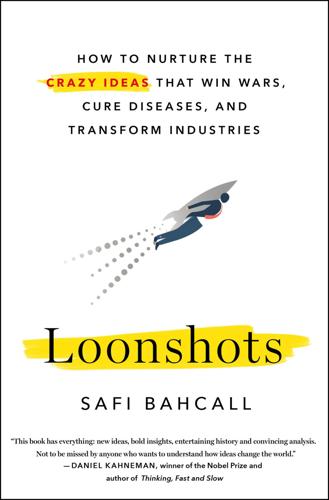
Loonshots: How to Nurture the Crazy Ideas That Win Wars, Cure Diseases, and Transform Industries
by
Safi Bahcall
Published 19 Mar 2019
… How you longed for the smooth, quick flight of the gulls.” Business grew, but slowly. Trippe needed some way to fire up the public about flying. Which is when Trippe got the luckiest break of his career. He met and recruited Lucky Lindy. At 7:51 a.m. on May 20, 1927, at Roosevelt Field, Long Island, Charles Lindbergh, age 25, eased back the stick on his single-engine plane, revving the engine, sending the heavily loaded plane wobbling down the runway. His plane, the Spirit of St. Louis, had never flown with this much weight. By the abort point on the runway, just past the halfway mark, the plane had not yet reached flying speed, but Lindbergh felt “the load shifting from wheels to wings.”
…
Imagine you are a career Post Office bureaucrat, and the most worshipped young man on the planet walks into your drab, ten-by-ten-foot office. Pan Am won every US postal contract to the region. Three round-trip mail runs to Buenos Aires alone paid for one Sikorsky S-38 flying boat. Without the airmail contracts, Trippe’s competitors—other startup airlines eyeing the same routes—folded. Charles Lindbergh and Juan Trippe plan Pan Am’s conquest of Latin America (1929) Trippe now had the routes and the planes. There was just one problem: navigation. Trippe’s pilots, like Lindbergh, flew by dead reckoning—compass, map, and eyeballs. Although the flight across the Straits of Florida was much shorter than Lindbergh’s transatlantic flight, it was still dangerous.
…
They began their program after reading his papers. Years later, a German officer being grilled by American officers about their V-2 rocket program exclaimed, “Why don’t you ask your own Dr. Goddard?” In the US, one well-known aviation expert had also taken the idea of rocket propulsion seriously. Charles Lindbergh had encouraged Goddard and introduced him to the donors who funded his research. Lindbergh was a full colonel in the Air Force. But he was unable to interest the military in Goddard’s rockets. Much of that was due to an unprecedented campaign of personal attacks against Lindbergh by President Roosevelt.
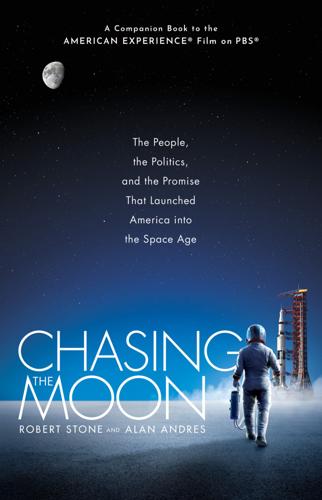
Chasing the Moon: The People, the Politics, and the Promise That Launched America Into the Space Age
by
Robert Stone
and
Alan Andres
Published 3 Jun 2019
By the time Ley had arrived in the United States, Robert Goddard had become increasingly reclusive, having moved all his research to a secluded desert testing facility in Roswell, New Mexico. Noted aviation philanthropist Harry Guggenheim had stepped in to provide funding for his rocket research, thanks to the intercession of famed airman Charles Lindbergh as well as one of Goddard’s former students at Clark University, an aviation pioneer named Edwin Aldrin. (Aldrin was to become famous a little more than three decades later as the father of astronaut Buzz Aldrin, one of the first two men to land on the Moon.) Goddard’s continued secrecy aroused the suspicions of Ley, who considered the professor’s reputation in America overrated and unequal to the stature of Oberth.
…
They saw themselves first and foremost as active pilots. However, neither they nor NASA were prepared for how their fairly routine press conference would become a pivotal moment in the marketing of the American space program and the transformation of modern celebrity. Preceded by stories of past air heroes like Charles Lindbergh and a decade of Hollywood science-fiction films, the seven pilots were thrust into starring roles in the television age’s first heroic real-life narrative. They and their families were abruptly placed under the modern media’s spotlight. Ghostwritten and sanitized versions of their lives appeared in heavily promoted issues of Life magazine, the result of a controversial NASA-approved contract that gave the magazine exclusive rights to the personal stories of the astronauts and their wives, even though the men were government employees.
…
The two men were then seen proceeding in a motorcade to a massive celebration in Red Square. The face of Russian cosmonaut Yuri Gagarin as reproduced on newspaper front pages around the world when he became the first human to travel into space on April 12, 1961. It was likely this photograph that caused Arthur C. Clarke to compare him to a modern-day Charles Lindbergh. In Washington, however, journalists were even more concerned with another subject: Cuba. Following the revolution two years earlier that had overthrown dictator Fulgencio Batista, American relations with the government of Fidel Castro had deteriorated badly. The United States broke off all diplomatic ties with Cuba only days before Kennedy was inaugurated.

Top 10 San Diego
by
Pamela Barrus
and
Dk Publishing
Published 2 Jan 2007
Wyatt Earp (1848–1929) The gunman (see p8) owned saloons and gambling halls in the Gaslamp Quarter. John D. Spreckels (1853–1926) A generous philanthropist, businessman (see p25), and owner of Hotel del Coronado. L. Frank Baum (1856–1919) Baum (see p24) lived in and considered Coronado an “earthly paradise.” Charles Lindbergh (1853–1926) The first to fly solo across the Atlantic in 1927 (see p25). Theodore Geisel (1904–91) Best known as Dr. Seuss, he lived and worked in La Jolla. The San Diego Chicken (b. 1953) The chicken-suited antics of Ted Giannoulas have brought international attention to San Diego sports and events.
…
Gaslamp Quarter Filled with late-19th century Victorian architecture, this premiere historic site was once the commercial heart of Alonzo Horton’s (see pp38–9) New Town. When development moved north to Broadway, the neighborhood succumbed to gambling halls and brothels. It was revitalized in the 1970s (see pp8–9). Lindbergh Field San Diego International Airport (see p85) is popularly called after Charles Lindbergh (see p39), who began the first leg of his trans-Atlantic crossing from here in 1927. The US Army Air Corps drained the surrounding marshland, took over the small airport, and enlarged the runways to accommodate the heavy bomber aircraft manufactured in San Diego during World War II. d Map C5 The Mexican-Californian ranchers were known as Californios.
…
San Diego International Airport No matter where you are in San Diego, look up and you’ll see a jet soaring dramatically past the downtown high-rises on its final approach to Lindbergh Field (see p40) as locals call the airport. A 100 years ago, this area was a muddy wasteland that proved to be an ideal spot for budding inventors and pilots to try out their latest machines. In 1927, Ryan Aviation (see p39) designed, produced, and tested on the beach the Spirit of St. Louis, the historic plane that Charles Lindbergh piloted solo across the Atlantic. d Map C5 Around Town – Southern San Diego In the 1880s, two wealthy businessmen, Elisha Babcock, Jr. and Hampton Story, purchased Coronado and set out to build a town. They sold lots, laid streets, and constructed the landmark Hotel del Coronado (see p115).
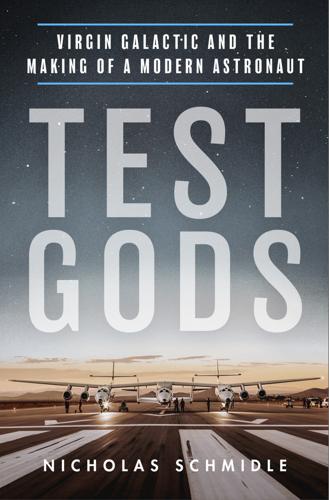
Test Gods: Virgin Galactic and the Making of a Modern Astronaut
by
Nicholas Schmidle
Published 3 May 2021
Twice, within two weeks. Without killing the pilot. Before the end of 2004. No governments allowed. Diamandis modeled the prize on the $25,000 award offered by a New York hotelier in 1919 for the first aviator to fly nonstop from New York to Paris. Four died trying and two disappeared before Charles Lindbergh crossed the Atlantic in the Spirit of St. Louis in May 1927. “Lindbergh changed the way people think about air travel,” said Diamandis. “Our goal is to change the way people think about space travel.” A dozen would enter with all varieties of funky designs. Tom Clancy, the novelist, gave $1 million to a team building a rocket-propelled helicopter that looked “more like a Midwestern grain silo that has sprouted a propeller than a spacecraft.”
…
But when Colby heard that Scaled was hiring a propulsion expert, he flew to Mojave to see what they were all about. He was met by a couple of senior engineers who showed him around the hangar. SpaceShipOne glistened under klieg lights, radiant with accomplishment. The Smithsonian had recently announced its intent to display the craft in the foyer of the Air and Space Museum, next to Charles Lindbergh’s Spirit of St. Louis and Chuck Yeager’s X-1. The engineers told Colby that they basically wanted to build a bigger version of the hybrid-fuel motor that they had put in SpaceShipOne. Generally, rockets are classified by fuel. Most rockets use a solid- or liquid-fuel system; both have advantages and disadvantages.
…
It had to be a private guide because my dad believed that you diluted an experience when you did it with a group; my earlier bid to join the Boy Scouts never stood a chance. The author. I think my dad assumed that I would arrive where he did, that I would see flight as the ultimate transcendent experience, this opportunity to shed what Charles Lindbergh described as “all conscious connection with the past,” to live “only in the moment … crowded with beauty, pierced with danger.” But I lost interest as I grew up. I no longer dreamed of becoming a fighter pilot. I can’t explain why. Maybe I knew how much my dad valued commitment, how he didn’t believe in accidental excellence, and perhaps I was scared—not of crashing and dying but that I might not make it as far as he did, that I would wash out of boot camp or flight school, or end up flying cargo planes or helicopters or anything other than fighter jets, because I grew up hearing him talk about the difference between fighter pilots and everybody else, and I didn’t want to be everybody else.
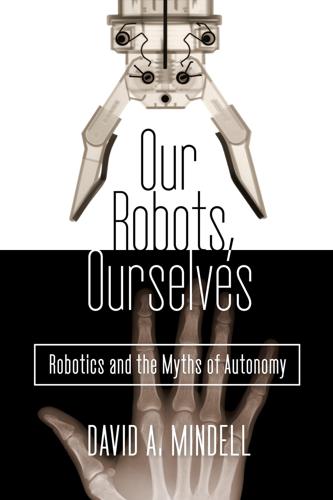
Our Robots, Ourselves: Robotics and the Myths of Autonomy
by
David A. Mindell
Published 12 Oct 2015
“The twentieth century was born yearning for a new type of hero,” writes aviation historian Robert Wohl, “someone able to master the cold, inhuman machines that the nineteenth century bequeathed and at the same type transforming them into resplendent art and myth.” From Charles Lindbergh to Neil Armstrong to “Sully” Sullenberger, the cultural icon of the pilot embodied the human on the cutting edge of technology and social change. Analogies flowed freely—the adventurer of the sky, the aerial artist, the athlete of the third dimension. World War I offered new identities, particularly the “knight of the air” flying fighter ace, reviving ancient mythologies to rescue heroism from an anonymous war of trenches and random death. Ironically, most pilots, including Wilbur Wright, Charles Lindbergh, and Neil Armstrong conformed to none of these archetypes so much as to that of the mechanic or engineer imbued with the middle-class virtues of temperance, deliberation, and focus.
…
In the late twentieth century, unmanned aircraft did find a niche as returnable target drones used as gunnery targets for training. These were either small, custom vehicles or manned aircraft with the pilots replaced by computers and guidance systems. The Ryan Firebee drone, for example (made by the same company that made Charles Lindbergh’s Spirit of St. Louis) could execute a preplanned route and return to a recovery point and land by parachute. Over four thousand Firebee drones flew prior to 1971, and the extensive experience spurred more operational uses. Firebee-derived vehicles saw combat in Vietnam, in a reconnaissance version known as Lightning Bug, launched from C-130 aircraft.

People Powered: How Communities Can Supercharge Your Business, Brand, and Teams
by
Jono Bacon
Published 12 Nov 2019
Shortly after finishing medical school at Harvard, I read about the twenty-five-thousand-dollar Orteig Prize in Charles Lindbergh’s autobiography, Spirit of St. Louis.1 The competition launched in 1919 and challenged intrepid aviators to fly an airplane nonstop between New York and Paris, a feat that at the time seemed nearly impossible. As history has continually taught us though, the human spirit has the courage to look adversity squarely in the eye. The prize was won in 1927 by Charles Lindbergh following his heroic 33.5-hour flight, and it significantly advanced aviation technology. I was enormously inspired by this story and the power of incentive prizes—so much so that I launched the first XPRIZE in 1996.
…
Let me know how you get on, and let me know if there is anything I can ever help with. I want you all to succeed and thrive, no matter what you are working on. Rock on! Notes ACKNOWLEDGMENTS 1. “Become a Member,” Jono Bacon, accessed January 9, 2019, https://www.jonobacon.com/join/. FOREWORD 1. Charles Lindbergh, Spirit of St. Louis (New York: Charles Scribner’s Sons, 1953), 25, 34, 77, 102. 2. Michelle Evans, “5 Stats You Need to Know About Connected Consumers,” Forbes, August 22, 2017, https://www.forbes.com/sites/michelleevans1/2017/08/22/5-stats-you-need-to-know-about-connected-consumers-in-2017/#7909aeec1962; Peter Diamandis, “4 Billion New Minds Online: The Coming Era of Connectivity,” Singularity, July 27, 2018, https://singularityhub.com/2018/07/27/4-billion-new-minds-online-the-coming-era-of-connectivity/#sm.000qnxowz119ye48z0y104iujpn9p. 3.

On Time and Water
by
Andri Snaer Magnason
Published 15 Sep 2021
My grandma’s brothers grew up dreaming of flight. They ran up and over the hill at Skólavörduholt to see the Graf Zeppelin aircraft soar over Reykjavík in 1930; in 1933 they watched in awe as the Italian pilot Italo Balbo and his squadron landed in the Reykjavík bay, twenty-four aircraft in total. Charles Lindbergh, the most famous aviator of his time, arrived later that summer; all these heroes were met with a royal reception and a brass band, and were invited to lunch with the prime minister. Helgi, my grandma’s brother, went to Germany just before the war to become a pilot. But he turned out to be colorblind and had to return home.
…
In 1903, the Wright brothers flew an airplane thirty meters, the longest distance an engine-driven vehicle had managed to glide. Two years later, they’d mastered the technology and were able to fly more than thirty kilometers. This achievement stampeded around the globe so that by 1917 the Red Baron was waging aerial battles in biplanes and triplanes all over Europe. In 1927, Charles Lindbergh was the first person to fly across the Atlantic, traveling from New York to Paris. There are currently about ten thousand airplanes simultaneously in the skies throughout the world, with about a million passengers on board. At the time my grandma was born, no one had crossed the Atlantic on a plane; forty years later, people had reached the moon.
…
pp. 310–311 Kristín and Gudrún Björnsdóttir’s tenth birthday at number 3 Selás, 1956. A still from a 16 mm film. Árni Kjartansson. Index Note: Most Icelandic names comprise a given name plus a patronymic (ending –son or –dóttir) that indicates family origin but usually changes with each generation. Inverting these seems unhelpful so, while Charles Lindbergh appears at “L,” John Thorbjarnarson will be found under “J” rather than “T.” Italic page references lead to full-page illustrations; “n” refers to one of the numbered endnotes (indexed only very selectively) after page 324. The index that appeared in the print version of this title was intentionally removed from the eBook.

Life on the Rocks: Building a Future for Coral Reefs
by
Juli Berwald
Published 4 Apr 2022
A hundred years ago, on May 22, 1919, a New York hotelier offered a $25,000 prize to the first person who could fly nonstop from New York to Paris. A number of pilots died attempting to win the purse until, eight years after the announcement, an unknown mail pilot from the Midwest took off from Roosevelt Field in Long Island. After thirty-three hours, Charles Lindbergh landed at Le Bourget Field in Paris. The barometer he carried proved that the flight was uninterrupted. Spurred by the cash prize—a substantial one—Charles Lindbergh birthed the age of transatlantic flight and the massive aviation industry that followed. The next slide wasn’t an underwater photo either. It was a spacecraft. On October 4, 2004, the first nongovernmental organization successfully launched a reusable spacecraft into space twice within two weeks.
…
GO TO NOTE REFERENCE IN TEXT half of the Great Barrier Reef: Andreas Dietzel et al., “Long-Term Shifts in the Colony Size Structure of Coral Populations along the Great Barrier Reef,” Proceedings of the Royal Society B, 287 (2020): 20201432, https://royalsocietypublishing.org/doi/10.1098/rspb.2020.1432. GO TO NOTE REFERENCE IN TEXT Charles Lindbergh landed: “Raymond Orteig–$25,000 Prize,” Charles Lindbergh: An American Aviator, 2014, http://charleslindbergh.com/plane/orteig.asp. GO TO NOTE REFERENCE IN TEXT Peter Diamandis: Raya Bidshahri, “5 Organizations Using Cool Tech Solutions and Research to Clean Up the Oceans,” Singularity Hub, May 20, 2018, https://singularityhub.com/2018/05/20/5-organizations-using-cool-tech-solutions-and-research-to-clean-up-the-oceans/.
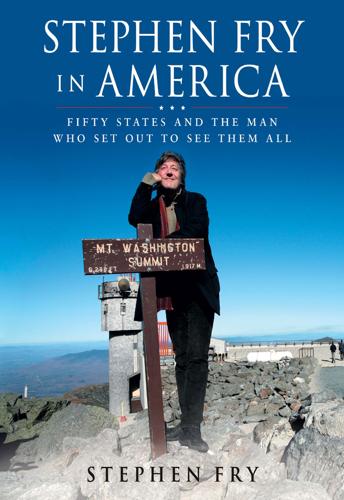
Stephen Fry in America
by
Stephen Fry
Published 1 Jan 2008
Truman (33rd President), Sen. Bill Bradley, John Ashcroft, General John Pershing, General Omar Bradley, Mark Twain, Laura Ingalls Wilders, T.S. Eliot, Marianne Moore, William Burroughs, Langston Hughes, Tennessee Williams, Maya Angelou, Frank and Jesse James, Calamity Jane, Dale Carnegie, Max Factor, Charles Lindbergh, Edwin Hubble, Joseph Pulitzer, Adolphus ‘Budweiser’ Busch, James ‘McDonnell Douglas’ McDonnell, Bill ‘Jet’ Lear, J.C. Penney, Kenneth ‘Enron’ Lay, Walter Cronkite, Rush Limbaugh, Bob Barker, Yogi Berra, Payne Stewart, Scott Joplin, Charlie Parker, Basil Poledouris, Chuck Berry, Grace Bumbry, Burt Bacharach, Sheryl Crow, Eminem, Josephine Baker, Wallace Beery, Robert Cummings, Jean Harlow, Walt Disney, Betty Grable.
…
* * * MICHIGAN KEY FACTS Abbreviation: MI Nickname: The Wolverine State, the Great Lakes State, the Automotive State, Water-Winter Wonderland, the Mitten State Capital: Lansing Flower: Apple Blossom Tree: White Pine Bird: American Robin Reptile: Painted turtle Motto: Si quaeris peninsulam amoenam circumspice (‘If it’s a pleasant peninsula you’re after, then look around you’) Well-known residents and natives: Pontiac (American Indian leader), Thomas Dewey, Charles Lindbergh, Betty Ford, Elijah ‘the real’ McCoy, Jimmy Hoffa, Aileen Wuornos, Ivan Boesky, Edna Ferber, Elmore Leonard, Joyce Carol Oates, Neil LaBute, Ring Lardner, Richard Ellmann, Theodore Roethke, Jim Bakker, Malcolm X, James (Barnum and Bailey) Bailey, W. K. Kellogg, C.W. ‘Grape Nuts’ Post, Henry Ford, Horace and John Dodge, David Buick, John De Lorean, William Boeing, Larry ‘Google’ Page, William ‘Packard’ Hewlett, Steve ‘Microsoft’ Ballmer, Edgar Bergen, Sandra Bernhard, Casey Kasem, James ‘Inside The Actors’ Studio’ Lipton, Jerry Bruckheimer, Francis Ford Coppola, John Hughes, Michael Moore, Sam Raimi, Paul Schrader, George C.
…
* * * MINNESOTA KEY FACTS Abbreviation: MN Nickname: North Star State, Land of 10,000 Lakes, The Gopher State Capital: St Paul Flower: Pink and White Lady Slipper Tree: Red Pine State muffin: Blueberry Bird: Common Loon Motto: L’Etoile Du Nord (‘The Star of the North’) Well-known residents and natives: Hubert Humphrey, Eugene McCarthy, Walter Mondale, Frank Kellogg, Charles ‘Clinic’ Mayo, John S. ‘Doughboy’ Pillsbury, Charles Lindbergh, Kofi Annan, J. Paul Getty, Billy Graham, Robert Mondavi, F. Scott Fitzgerald, Sinclair Lewis, Robert ‘Zen’ Pirsig, Robert Bly, Anne Tyler, August Wilson, Charles ‘Peanuts’ Schulz, Garrison Keillor, Terry Gilliam, Mike Todd, William Demarest, Gig Young, Jane Russell, Tippi Hedren, Richard Widmark, E.G.
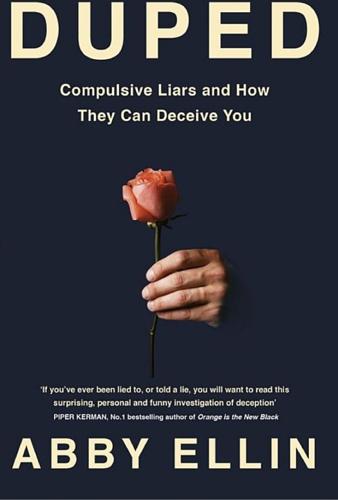
Duped: Double Lives, False Identities, and the Con Man I Almost Married
by
Abby Ellin
Published 15 Jan 2019
By way of explanation, Lyman says this: “A man can be faithful to himself or to other people, but not to both, at least not happily.”10 The Broadway darling Dear Evan Hansen focused on a morose teenager who pretends to be a close friend of a classmate who committed suicide, fooling his family. The audience was supposed to sympathize with the con man. Of course, there have also been real-world figures leading closeted lives, historical counterparts to our Bernie Madoffs: Thomas Jefferson (who fathered six children with his slave Sally Hemings). Charles Lindbergh (who had three separate families on two continents). J. Edgar Hoover (a racist, cross-dressing, anti-gay gay man). Lance Armstrong. Harvey Weinstein. Pop culture is littered with deceit: Hitchcock’s films are all about deception, from Suspicion to Vertigo to Rear Window. More recently there was The Departed, a fictionalized account of Boston mob boss Whitey Bulger and his Winter Hill Gang.
…
They, along with her adopted son, dined together every night before Shawn returned to his other family.29 That was public knowledge, at least in certain spheres. François Mitterrand’s two families grieved shoulder to shoulder at his funeral. Vive la France! Decidedly less open was the flying hero Charles Lindbergh, who had three families in Germany, a wife in the States, and a gaggle of offspring scattered on the two continents. He was married to Anne Morrow Lindbergh (they had six kids, one of whom, Charles Junior, the “Lindbergh Baby,” was snatched from his crib in 1932 and murdered), but he had a seventeen-year relationship with Brigitte Hesshaimer, a thirty-one-year-old German hatmaker whom he met through his private secretary, Valeska, with whom he was also involved.
…
Despite the fact that her parents had five more children, they led separate lives, and her father, she speculated, propelled himself into the arms of other women because of his inner tumult. (Some speculate that Anne Morrow Lindbergh had her share of lovers, too.) Lindbergh’s Pulitzer Prize–winning biographer, A. Scott Berg, was equally mystified by his subject’s double (triple? quadruple?) lives, which came to light in 2003, not long after Anne Morrow Lindbergh died. Charles Lindbergh, who hated people with disabilities, who was a devoted husband and father? None of this made sense. “He was the most celebrated living person to walk the earth, the first modern media superstar,” said Berg. “And yet there wasn’t a single clue.”31 MOST OF US don’t lead double lives to that extent, and so we can tell ourselves we’re completely different from the Lindberghs of the world.
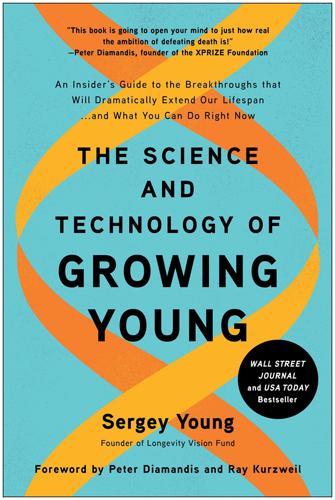
The Science and Technology of Growing Young: An Insider's Guide to the Breakthroughs That Will Dramatically Extend Our Lifespan . . . And What You Can Do Right Now
by
Sergey Young
Published 23 Aug 2021
id=4320; Science Museum Group, “Artificial eyes,” Brought to life, accessed July 20, 2020, http://broughttolife.sciencemuseum.org.uk/broughttolife/techniques/artificialeyes; Mara Mills, “Hearing Aids and the History of Electronics Miniaturization,” IEEE Annals of the History of Computing 33, no. 2 (2011), https://doi.org/10.1109/MAHC.2011.43; Emily Redman, “To Save His Dying Sister-In-Law, Charles Lindbergh Invented a Medical Device,” Smithsonian Magazine, last modified September 9, 2015, https://www.smithsonianmag.com/smithsonian-institution/save-his-dying-sister-law-charles-lindbergh-Invented-medical-device-180956526/. 22“The Gold Standard for the Bionic Eye,” John Hopkins Medicine, last modified July 1, 2019, https://www.hopkinsmedicine.org/news/articles/gold-standard-for-bionic-eye. 23Russ Juskalian, “A new implant for blind people jacks directly into the brain,” MIT Technology Review, last modified February 6, 2020, https://www.technologyreview.com/s/615148/a-new-implant-for-blind-people-jacks-directly-into-the-brain/. 24Sloan Churman, “29 years old and hearing myself for the 1st time!
…
There were molded wood and leather toes in bc-era Egypt and rudimentary dentures in ancient Tuscany. Enameled gold prosthetic eyes were in use in France in the sixteenth century, and the first electric hearing aid was invented in the 1800s. An early heart-lung machine called the perfusion pump was cocreated in the 1930s by none other than aviator Charles Lindbergh.21 And by the time Steve Austin, the Six-Million-Dollar Man of 1970s American television fame, was demonstrating his bionically augmented strength, speed, and vision on the small screen, modern knee replacement surgery was already in practice, while the Jarvik artificial heart was merely years away.
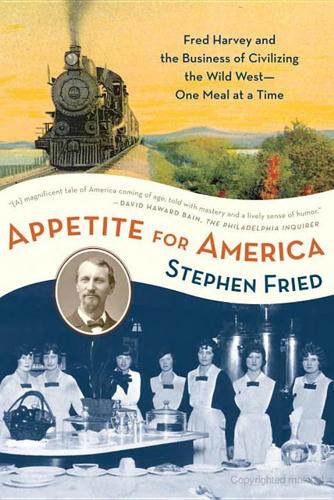
Appetite for America: Fred Harvey and the Business of Civilizing the Wild West--One Meal at a Time
by
Stephen Fried
Published 23 Mar 2010
Fred Harvey ran all the restaurants and hotels along the country’s largest railroad, the Santa Fe between Chicago and Los Angeles; went on to serve the nation’s cross-country drivers on Route 66, the first superhighway; and even played a vital role in the formative, thrilling, and scary years of the airline business—because Fred’s grandson Freddy was an original partner in TWA with Charles Lindbergh and Henry Ford. Fred Harvey’s “eating houses” were prototypes of the disparate dining experiences that characterize American eating: They had formal, sit-down dining rooms (in which even cowboys were expected to wear jackets), attached to large casual dining areas with long curved counters (the genesis of the classic American diner), attached to take-out coffee and sandwich stands (the original Starbucks).
…
A pair of flyers was poised to try the flight from France: socialite Captain Charles Nungesser, a highly decorated World War I flyer whose many broken bones were rumored to have been replaced with platinum, along with his one-eyed navigator, Lieutenant François Coli. There were three other American pilots jockeying for the prize. Two were similarly well-financed war heroes; the third was a bold young mail-plane pilot from St. Louis named Charles Lindbergh. Freddy knew Lindbergh from the air corps—the young flyer had attended a two-week reserve officers camp in Kansas City in 1925, where he impressed Harvey and his fellow aviators by flying brilliantly and single-mindedly, refusing to drink, smoke, or even joke around with the others. Freddy had also known Lindbergh’s backers for years—they were the wealthy members of the flying club in St.
…
Lindbergh, undeterred, waited only for the weather to clear, and at 7:52 on Friday morning, May 20, 1927, he took off. With nothing for company but four sandwiches and two canteens of water, he flew thirty-five hundred miles, without stopping, in just under thirty-four hours. When he touched down at Le Bourget field in Paris, more than a hundred thousand cheering people were waiting there to greet him. Charles Lindbergh became the biggest overnight celebrity the world had ever known. His fame literally redefined fame. Time magazine invented its “Man of the Year” cover feature just to honor him. To capitalize on that fame—and use it to further the cause of aviation—Lindbergh and his plane were immediately sent on a propeller-stop tour of every state in the Union, underwritten by Harry Guggenheim, the thirty-seven-year-old heir to the family mining and smelting fortune.

Beyond: Our Future in Space
by
Chris Impey
Published 12 Apr 2015
Launched from his Aunt Effie’s farm, it traveled for 184 feet in a flight that lasted less than three seconds, landing in a cabbage field (Figure 6). Over the years, he conducted more than three dozen test flights, refining his designs and techniques until he reached altitudes of several miles. In 1929, he began what became a lifelong friendship with Charles Lindbergh, who shared his vision.16 Figure 6. Robert Goddard is bundled against the cold of a New England winter in 1926 as he stands by the launching frame of his most notable invention. The liquid fuel of this rocket was gasoline and liquid oxygen, contained in the cylinder across from Goddard’s torso.
…
His early work was sponsored by a modest grant from the Smithsonian Institution. Then came Harry Guggenheim, son of Daniel Guggenheim, who owned mining companies and, by the end of the nineteenth century, had one of the largest fortunes in the world. Harry, a former Navy pilot and president of the family foundation, was a friend of Charles Lindbergh, who introduced him to Goddard. In 1930, Lindbergh received a Guggenheim Foundation grant of $100,000, which would be worth $4 million today.1 This support helped launch the Rocket Age. Goddard was so far ahead of his time that his work was unregulated. The Federal Aviation Administration (FAA) was formed in 1926, and it wasn’t until 1984 that the agency had a division to oversee rockets and commercial space travel.
…
He also started a company named International MicroSpace to launch microsatellites, winning a $100 million contract from the US Defense Department. But Diamandis was overstretched and the company couldn’t deliver on the contract, so he sold it (for a fat profit, naturally). In 1994, Diamandis read Charles Lindbergh’s memoir The Spirit of St. Louis and was inspired. He learned that a hotel owner named Raymond Orteig had put up a $25,000 prize in May 1919 for the first nonstop airplane flight between New York and Paris. Nine teams spent a total of $400,000 trying to win. Lindbergh was considered a dark horse, an outsider with no backing and little aviation experience.

Bold: How to Go Big, Create Wealth and Impact the World
by
Peter H. Diamandis
and
Steven Kotler
Published 3 Feb 2015
Doing something, doing anything, is always so much more important than just talking about doing it. The ratio of something to nothing is literally infinite. So make a plan. Set subgoals. Get busy. Even if the path is unclear, you’ll use what you’ve learned taking that first step to build toward the next, and the next after that. Results always follow. Charles Lindbergh was correct: “The important thing is to start; to lay a plan, and then follow it step by step no matter how small or large one by itself may seem.” #21: AN EXPERT IS SOMEONE WHO CAN TELL YOU EXACTLY HOW SOMETHING CAN’T BE DONE When I first dreamed up the XPRIZE, I went to all the major aerospace contractors looking for funding.
…
As I mentioned earlier, my original use of incentive competitions stemmed from my desire to figure out how to get myself into space. I had given up on NASA being my ticket, instead turning to commercial space flight as a way to develop both the technology and the wealth needed to get myself off-earth. But there was another impetus as well. In 1993, I received a copy of Charles Lindbergh’s 1954 Pulitzer Prize–winning book, The Spirit of St. Louis. This gift came from my dear friend Gregg Maryniak, who was then hoping to provide the inspiration needed for me to finish my pilot’s license (which I had started and stopped three times for lack of money and/or time). And it worked.
…
module=Static&d1=support&d2=ratings. 20 Carolyn Johnson, “Thorny research problems, solved by crowdsourcing,” Boston Globe, February 11, 2013, http://www.bostonglobe.com/business/2013/02/11crowdsourcing-innovation-harvard-study-suggests-prizes-can-spur-scientific-problem-solving/JxDkOkuIKboRjWAoJpM0OK/story.html. 21 AI with Narinder Singh, 2014. 22 AI with Chris Anderson, 2013. 23 Richard Millington, “7 Contrary Truths About Online Communities,” Feverbee.com, September 22, 2010, http://www.feverbee.com/2010/09/7truths.html. 24 AI with Jono Bacon, 2014. 25 Jolie O’Dell, “10 Fresh Tips for Community Managers,” Mashable, April 13, 2010, http://mashable.com/2010/04/13/community-manager-tips/. 26 Seth Godin, “Why You Need to Lead A Tribe,” Mixergy.com, January 13, 2009, http://mixergy.com/interviews/tribes-seth/. 27 AI with Better Blocks founder Jason Roberts, 2014. Also see his pretty amazing TEDx Talk: TEDxOU—Jason Roberts—How to Build a Better Block, https://www.youtube.com/watch?v=ntwqVDzdqAU. Chapter Ten: Incentive Competitions: Getting the Best and Brightest to Help Solve Your Challenges 1 Charles Lindbergh, The Spirit of St. Louis (New York: Scribner, 1953). 2 Stephen Schaber, “Why Napoleon Offered a Prize for Inventing Canned Food,” NPR, March 5, 2012, http://www.npr.org/blogs/money/2012/03/01/147751097/why-napoleon-offered-a-prize-for-inventing-canned-food. 3 Knowledge Ecology International, “Selected Innovation Prizes and Reward Programs,” KEI Research Note 2008:1, http://keionline.org/misc-docs/research_notes/kei_rn_2008_1.pdf. 4 All Marcus Shingles quotes come from an AI conducted 2014. 5 Burt Rutan, “The real future of space exploration,” TED, February 2006, https://www.ted.com/talks/burt_rutan_sees_the_future_of_space. 6 Statista, “Statistics and facts on Sports Sponsorship,” Sports sponsorship Statista Dossier 2013, March 2013. 7 Alice Roberts, “A true sea shanty: the story behind the Longitude prize,” The Observer, May 17, 2014, http://www.theguardian.com/science/2014/may/18/true-sea-shanty-story-behind-longitude-prize-john-harrison. 8 See http://www.interculturalstudies.org/faq.html#quote. 9 Dan Heath and Chip Heath, “Get Back in the Box: How Constraints Can Free Your Team’s Thinking,” Fast Company, December 1, 2007, http://www.fastcompany.com/61175/get-back-box. 10 For all things LunarX, see http://www.googlelunarxprize.org. 11 Campbell Robertson and Clifford Krauss, “Gulf Spill Is the Largest of Its Kind, Scientists Say,” New York Times, August 2, 2010, http://www.nytimes.com/2010/08/03/us/03spill.html?
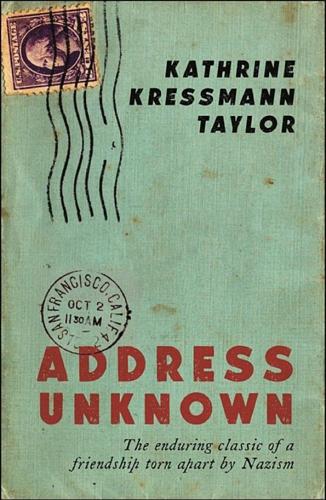
Address Unknown
by
Kressmann Taylor
Published 29 May 2016
What I discovered was terrifying. What worried me most was that no one in America was aware of what was happening in Germany and they also did not care. In 1938, the isolationist movement in America was strong; the politicians said that affairs in Europe were none of our business and that Germany was fine. Even Charles Lindbergh came back from Germany saying how wonderful the people were. But some students who had returned from studying in Germany told the truth about the Nazi atrocities. When their fraternity brothers thought it would be fun to send them letters making fun of Hitler, they wrote back and said, “Stop it.
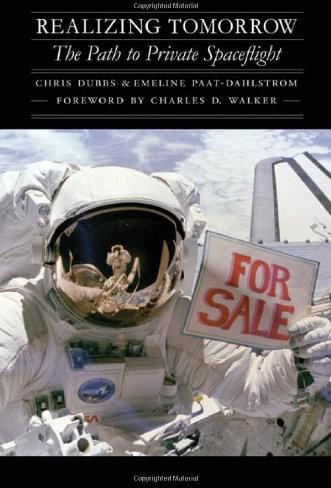
Realizing Tomorrow: The Path to Private Spaceflight
by
Chris Dubbs
,
Emeline Paat-dahlstrom
and
Charles D. Walker
Published 1 Jun 2011
With NASA's shuttle now on the drawing board, it seemed as though this vision would soon become reality. By routinely shuttling back and forth to space, the shuttle would "help transform the space frontier of the 1970's into familiar territory," as President Nixon described it when announcing the program. Less than thirty-five years had elapsed between Charles Lindbergh's solo flight across the forbidding Atlantic Ocean and men setting foot on the moon. For more than half that time, visionaries such as von Braun and Krafft Ehricke had touted the feasibility and inevitability of man's thrust into space. Along with popular writers and filmmakers, they had planted the idea that despite the obvious dangers and limitations of space travel, space was a viable, even desirable, place to be.
…
The faster you move, the slower time passes, the longer you live. zo. The best way to predict the future is to create it yourself! (Copyright 1986 by Peter H. Diamandis. All rights reserved. Laws 14 and i8 by Todd B. Hawley.) The idea for the x PRIZE competition took root in Diamandis's head in 1994 after reading Charles Lindbergh's book, The Spirit ofSt. Louis, which recounts Lindbergh's methodical strategy for winning the Ortieg Prize, awarded for the first nonstop flight from New York to Paris. The book was a present to Diamandis from Gregg Maryniak. Ever since their involvement with BEDS, the two had become good friends, fellow space advocates, and business partners.
…
Burt Rutan The X PRIZE launch day, i8 May 1996, began with a celebrity-packed press conference announcing the prize and ended with a gala black tie event at the St. Louis Science Center, at which the prize garnered its first publicly announced competitor. Amid the VIP crowd, which included NASA administrator Dan Goldin, moonwalker Buzz Aldrin, and some twenty astronauts, as well as two of Charles Lindbergh's grandson's, Morgan and Erik, Elbert L. "Burt" Rutan stood up and became the first to declare himself in the race for the x PRIZE. Burt Rutan had created headlines a decade earlier for building the Voyager, a spindly, twin-engine aircraft that touched down at Edwards Air Force Base on 23 December 1986 after becoming the first airplane to circumnavigate the globe without refueling.
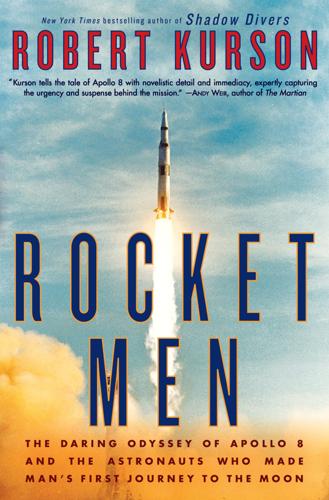
Rocket Men: The Daring Odyssey of Apollo 8 and the Astronauts Who Made Man's First Journey to the Moon
by
Robert Kurson
Published 2 Apr 2018
He’d been interested in astronauts since the Mercury 7, the United States’ first group of astronauts, had arrived on the scene four years earlier, but space travel had never seemed possible for mere fighter pilots. Now, things had changed. It would be his dream job in many ways. Joining NASA would give Anders the intellectual stimulation he craved, the chance to fly the most advanced machines ever built, and the opportunity to become an explorer, a space-age version of Charles Lindbergh or Vasco da Gama, the New World voyagers he’d always admired. And he could bring back unknown rocks from his journeys to the Moon. And there was another benefit, one that resonated with a man whose father had fought back against America’s attackers, even when the United States wasn’t formally at war: He could do more in space than anywhere else to help defeat the Soviet Union.
…
To Borman, Lovell, and Anders, that label better belonged to men like Pitts. Joining the crew of Apollo 8 and their wives at the black tie gala were twenty other astronauts, Chris Kraft and Wernher von Braun, and former NASA chief James Webb, who was to be awarded the Presidential Medal of Freedom later in the evening. Also present was Charles Lindbergh, who’d stunned the world when he flew nonstop from New York to Paris in 1927. To many at NASA, despite his controversial political views, Lindbergh was a pinnacle aviation hero, a man who had taken to the skies to do the impossible. Before dinner, a small concert was staged in the East Room.
…
“It is not important to mankind who will reach the Moon first and when he will reach it,” said cosmonaut Gherman Titov, the second man ever to orbit Earth. Not many in the Soviet Union were worried. Even with the American countdown clock at T minus 24 hours, few Soviets believed NASA would be crazy enough to launch. That afternoon, Charles Lindbergh and his wife, Anne Morrow, joined the astronauts in Florida for lunch. Anders suspected the visit to be a public relations stunt arranged by NASA, but he changed his mind after hearing the passion in Lindbergh’s questions about Apollo 8. After a few minutes, the four men—and Anne, also a pilot—were immersed in conversation about flying.

Failure Is Not an Option: Mission Control From Mercury to Apollo 13 and Beyond
by
Gene Kranz
Published 7 Jan 2000
I took it as a good omen that Cooper, taking pity on a befuddled stranger, offered me a lift to the base. He was one of the seven former test pilots selected for the first class of astronauts. They had been introduced, unveiled like sculptures, in April of 1959. Instantly the media compared them to Christopher Columbus and Charles Lindbergh. Today, I wonder how many of them the average American could name. They were John Glenn, Alan Shepard, Virgil I. (Gus) Grissom, Wally Schirra, Donald K. (Deke) Slayton, Scott Carpenter, and Cooper. They were similar in size and build, partly because the design of the capsule ruled out anyone over five-foot-eleven.
…
It had been named after Dr. Robert Goddard, the American pioneer in rocketry, who had developed rocket engine and guidance technology in the 1930s equal, if not superior in some respects, to what von Braun and his colleagues were working on as late as 1945. Goddard, one of my boyhood heroes, had had the backing of Charles Lindbergh, which enabled him to test his rockets in New Mexico, not far from the site where von Braun and his Germans would fire the first captured V-2 rockets in the late 1940s and test those that evolved from V-2 technology in the years that followed. The German scientists and technicians would come back to the Cape occasionally for selected launches (particularly high-profile manned missions), but they had their hands full at Marshall developing a new generation of rockets.
…
By the time NASA launch operations were forming up, American engineers were well acquainted with rockets, building on the experience of the Germans, as were the contractors producing the Redstone and Atlas missiles. While the new generation of American scientists and engineers was now doing the job, the first boosters in the manned spaceflight effort were barely adequate, as events would demonstrate. In many ways this technology was as “out on a limb” as Charles Lindbergh’s Ryan monoplane. He didn’t have any manuals either, and his facilities were primitive. Roosevelt Field in 1927 and Canaveral in 1960 had a few things in common. The massive Cape facility that would grow up in the next decade and soon become the Kennedy Space Center (which would include the largest enclosed space in the world, the vertical assembly building) was beyond our wildest dreams at the time.

Apollo 8: The Thrilling Story of the First Mission to the Moon
by
Jeffrey Kluger
Published 15 May 2017
Jim Webb and Wernher von Braun were also in attendance, as was Kurt Debus, the director of the Cape Kennedy launch facility. All three men were integral to the series of programs that had launched the astronauts into space, but they had never gone themselves and thus did not have the aura and never would. The only other person on the guest list who did have a bit of that special shimmer was Charles Lindbergh, the first man to fly solo across the Atlantic Ocean. Now sixty-six, Lindbergh had taken a keen interest in the Apollo 8 mission and planned to travel to the Cape to watch the launch. Even the spacemen showed a respectful deference in the presence of Lindbergh. The rest of the guests—Vice President Humphrey, cabinet members, senators and representatives—would be mere extras and supernumeraries in an event that would star the aviator and the astronauts.
…
The public affairs officer nodded a discreet thanks to the astronaut and ushered out the celebrity, who would go home with a “guess who I met” story to tell. Borman, had he been going home at the end of the day, would likely not have done the same. More important—and more complicated—was the visit by Charles Lindbergh, which came later. Lindbergh had shadowed the astronauts down to the Cape just as he’d said he would, but he didn’t come knocking until the day before the launch. Borman, for one, didn’t know quite what to make of him. Both he and Lovell had been born in 1928, just one year after Lindbergh’s flight, and they’d grown up adoring the great aviator.
…
With that, the tarnished old flier showed his respect, making it clear that he would accept no more diffidence from the three young men who were about to make their own historic marks as pilots. * * * Borman and Anders would have a bit of time to reflect on the singular experience of having spent an afternoon with Charles Lindbergh, but Lovell would have no such luxury. While his crewmates had only the imminent mission on their minds, Lovell had his entire family to attend to. Three days before the launch, Marilyn Lovell had flown to Florida with her two-year-old, Jeffrey, aboard a charter flight arranged by one of the aerospace companies that worked as an Apollo program contractor; such firms invariably scrambled for the goodwill and touch of celebrity that came with giving a lift to an astronaut’s family during a launch week.
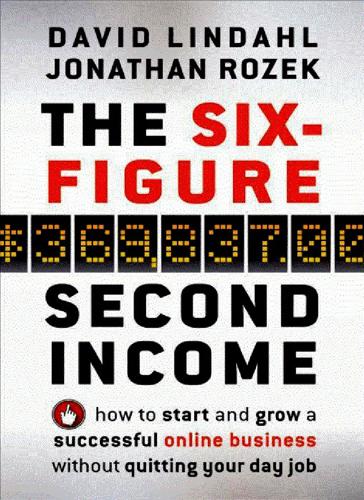
The Six-Figure Second Income: How to Start and Grow a Successful Online Business Without Quitting Your Day Job
by
David Lindahl
and
Jonathan Rozek
Published 4 Aug 2010
It’s much better to launch your product—even if it’s not perfect—and start to make money with it. Pop Quiz: Who was the first person to cross the Atlantic nonstop by airplane? If you answered Charles Lindbergh, that’s good. Now, who was the second person? If you know the answer to that—without looking it up—then you really do deserve congratulations. (It’s often credited to Amelia Earhart.) If you get your product out there first, you’ll be remembered as the Charles Lindbergh of that product. You won’t have to sweat who else comes out with one—you’ll always be able to tout yours as The Original and make fun of the imitators. Besides, Ray Kroc, Chairman of McDonald’s, was asked about all the other burger chains that sprang up after McDonald’s became popular.
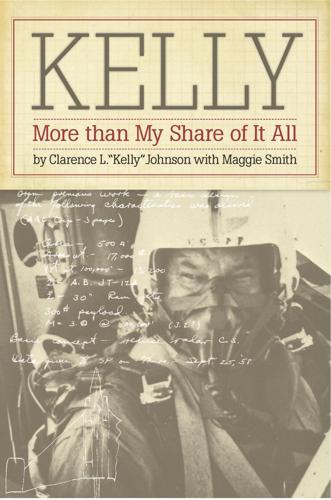
Kelly: More Than My Share of It All
by
Clarence L. Johnson
Published 1 Jan 1985
My goal remained to become like Tom Swift, and I studied toward that end. Flint had an excellent public school system, and, as before, I enjoyed very much attending classes. The city had an even larger library than Ishpeming’s, and I quickly became a regular visitor there, too. It was a year yet before Charles Lindbergh’s historic transatlantic solo crossing would awaken the world to the excitement and potential in the air, but in 1926 there was enough stirring of interest that the city’s Kiwanis Club sponsored a model airplane building contest for schoolchildren. I carved out a model of my Merlin battleplane, and it won second prize—$25.
…
According to newspaper reports, they had stopped for three hours at an Eskimo encampment to repair a faltering engine. The engine failed again on takeoff and they crashed on the frozen tundra. Wiley’s wristwatch stopped on impact: 8:18 p.m. An Eskimo ran the 15 miles to Point Barrow to report the tragedy. Famed bush pilot Joe Crosson flew the bodies to Fairbanks, where Col. Charles Lindbergh, as a director of Pan American Airways, personally directed their return home. Tragic headlines of another day—these in 1937—recounted the story of Amelia Earhart’s disappearance on an around-the-world flight. “MISS EARHART MISSING OVER PACIFIC: ONLY A HALF-HOUR’S FUEL, NO LAND IN SIGHT, SHE RADIOS—THEN SILENCE.”
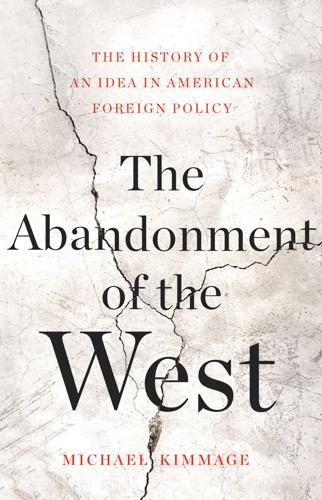
The Abandonment of the West
by
Michael Kimmage
Published 21 Apr 2020
It would take a lot to make this America and this West great again.48 For his campaign slogan, Trump selected a two-word commentary on American foreign policy. Though it goes back to President Harding, “America First” had been more memorably coined in opposition to American entry into World War II. It was the rallying cry of Charles Lindbergh and others who prioritized the defense of fortress America above the defense of liberty in Europe. In a 1939 Reader’s Digest article, Lindbergh explicated “America First” as a civilizational mission. To be against foreign-policy internationalism was to be in favor of the West as Lindbergh understood it, without using the word West.
…
By 1941, the likes of Lindbergh had lost out to the likes of Dwight Eisenhower and George Marshall, at least where party politics and electoral politics were concerned. (Eisenhower was no friend of the civil rights movement, but he did not base his idea of the West on racial panic; he based it on liberty and self-government.) By 2004, Charles Lindbergh was a figure so seemingly peripheral to the history of the United States that it was left to writers of fiction to imagine a world in which he was politically influential. In 2004, the writer Philip Roth released The Plot against America, a novel in which FDR loses the 1940 election and Lindbergh wins with a conspiratorial assist from Nazi Germany.
…
(New York: Thomas Dunne, 2011). 46. Pat Buchanan, The Death of the West: How Dying Populations and Immigrant Invasions Imperil Our Country and Civilization (New York: Thomas Dunne, 2002), 228, 6, 9, 150, 208, 223, 229. 47. Buchanan, Death of the West, 4, 209, 10, 163. 48. Buchanan, Death of the West, 240. 49. Charles Lindbergh, “another barrier,” quoted in Painter, History of White People, 349. CONCLUSION 1. Angela Merkel, “I offer the next President,” quoted in Carol Giacomo, “Angela Merkel’s Message to Trump,” New York Times, November 9, 2016, https://www.nytimes.com/interactive/projects/cp/opinion/election-night-2016/angela-merkels-warning-to-trump. 2.
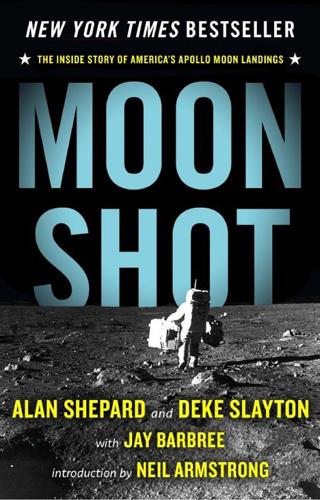
Moon Shot: The Inside Story of America's Apollo Moon Landings
by
Jay Barbree
,
Howard Benedict
,
Alan Shepard
,
Deke Slayton
and
Neil Armstrong
Published 1 Jan 1994
At fifty-five thousand feet he decided to override his automatics and deploy the drogue chute early to gain some stabilization. Glenn’s heartbeat was now at 134 beats a minute. The drogue chute came out. The auto sequences followed like clockwork, and Friendship Seven dropped into the water near the recovery destroyer Noa. John Glenn returned to Washington a hero of Charles Lindbergh’s stature. The nation flipped over the first American to race into earth orbit. The White House smiled, issued an invitation, and a quarter million people braved heavy rain to watch the astronaut pass. He was then hustled off to New York City, where four million screaming, cheering people greeted him with a tumultuous ovation and a ticker tape parade.
…
The defenders said the program would produce untold scientific and technological benefits and would demonstrate the nation’s ability to lead in an age of technology. Wernher von Braun entered the debate, arguing Apollo was not just a project to land two men on the moon but to open the new frontier of space. “When Charles Lindbergh made his famous first flight to Paris,” he said, “I do not think that anyone believed that his sole purpose was simply to get to Paris. His purpose was to demonstrate the feasibility of transoceanic air travel. He had the farsightedness to realize that the best way to demonstrate his point to the world was to select a target familiar to everyone.
…
He considered himself to have been blessed in many ways, not the least of which was having as a father a man with an innate ability to understand machinery. Making things work had been as commonplace to the young Alan Shepard as opening a book on flight, and he’d done that many a time. Even as far back as age four, when Charles Lindbergh had made his solo nonstop flight from New York to Paris. That’s when the love for aviation first had begun to grow inside him. And what had been given as this gift by his father began to reap rewards while still in his teen years. Alan Shepard became, in the classic sense, an airport bum. There is no deprecation in this term.
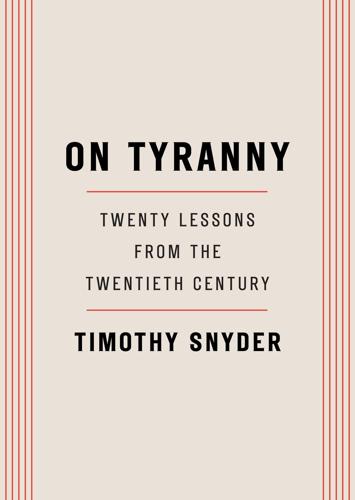
On Tyranny: Twenty Lessons From the Twentieth Century
by
Timothy Snyder
Published 14 Sep 2017
After the Second World War, Europeans, Americans, and others created myths of righteous resistance to Hitler. In the 1930s, however, the dominant attitudes had been accommodation and admiration. By 1940 most Europeans had made their peace with the seemingly irresistible power of Nazi Germany. Influential Americans such as Charles Lindbergh opposed war with the Nazis under the slogan “America First.” It is those who were considered exceptional, eccentric, or even insane in their own time—those who did not change when the world around them did—whom we remember and admire today. Well before the Second World War, numerous European states had abandoned democracy for some form of right-wing authoritarianism.
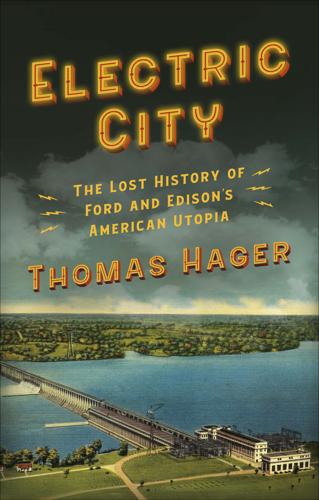
Electric City
by
Thomas Hager
Published 18 May 2021
Inventing for the Environment. Cambridge, MA: MIT Press, 2003: 107–29. Morgan, Arthur E. The Making of the TVA. Buffalo: Prometheus Books, 1974. Morris, Edmund. Edison. New York: Random House, 2019. Newton, James. Uncommon Friends: Life with Thomas Edison, Henry Ford, Harvey Firestone, Alexis Carre, and Charles Lindbergh. New York: Harcourt, 1987. Nevins, Allan, and Frank Ernest Hill. Ford: Expansion and Challenge. New York: Charles Scribner’s Sons, 1957. Norris, George W. Fighting Liberal: The Autobiography of George W. Norris (2nd. ed.). Lincoln: University of Nebraska Press, 1992. Pinci, A. R. “Woodrow Wilson’s Ford Boom.”
…
Berkeley: University of California Press, 1996. Vanderbilt, Byron M. Thomas Edison, Chemist. Washington, DC: American Chemical Society, 1971. Villard, Oswald Garrison. “Pillars of Government: George W. Norris.” Forum and Century 45, no. 4 (1936): 249–53. Wallace, Max. The American Axis: Henry Ford, Charles Lindbergh, and the Rise of the Third Reich. New York: St. Martin’s Press, 2003. Washburn, Frank. “The Power Resources of the South.” Annals of the American Academy of Political and Social Science 35, no. 1 (1910): 81–98. Watts, Steven. The People’s Tycoon: Henry Ford and the American Century. New York: Vintage Books, 2006.
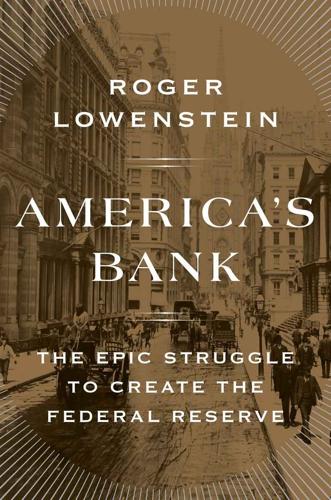
America's Bank: The Epic Struggle to Create the Federal Reserve
by
Roger Lowenstein
Published 19 Oct 2015
Meanwhile, he tended to his stock portfolio and to his now finished mansion, whose centerpiece was a grand marble stairway in the entrance hall. The exterior, a rather “grim granite and slate,” his descendant was to write, seemed to have been designed to withstand a “siege.” With public passions so inflamed against Wall Street, Representative Charles Lindbergh’s resolution for an inquest into the Money Trust obtained new urgency. Democrats in the House had opposed Lindbergh, on partisan grounds, but they needed some alternative to the Aldrich Plan—that is, they needed a banking program that was more than just oppositional. The Money Trust hearings would be their response.
…
Frank Mondell, a Republican from Wyoming, was more perceptive—or more candid—in recognizing the bill’s landmark character. “Not only is its power, authority, and control vast,” he warned of the prospective Fed, “but it is of a character which in practical operation would tend to increase and centralize.” Charles Lindbergh, another Republican opponent from the heartland, violently criticized the bill—among other reasons, for authorizing the Fed to operate overseas in support of foreign trade. Lindbergh’s nativism was striking, since his constituents in Minnesota depended on exports and the congressman himself was an immigrant.
…
Chandler, Benjamin Strong, Central Banker (Washington, D.C.: Brookings Institution, 1958), 11. “altruistic institution”: Richard H. Timberlake Jr., The Origins of Central Banking in the United States (Cambridge, Mass.: Harvard University Press, 1978), 192. “Not only is its power”: West, Banking Reform and the Federal Reserve, 118. Charles Lindbergh, another Republican opponent: Willis, The Federal Reserve System, 364–72. the debate in the House: Ibid., 125. For the gold standard debate, see Glass, An Adventure in Constructive Finance, 153; Coletta, William Jennings Bryan, 2:135; and Link, The New Freedom, 227. See also “Money Bill Passes House, 285 to 85,” The New York Times, September 19, 1913.
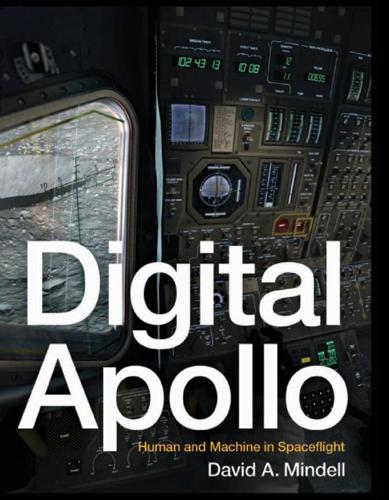
Digital Apollo: Human and Machine in Spaceflight
by
David A. Mindell
Published 3 Apr 2008
(NASA JSC photo S69-35097.) Human and Machine in the Race to the Moon 5 Human and machine: their relationship is not a new story. Indeed, it is one of the great narratives of the industrial world, from the mythical John Henry, who won a race with a steam drill at the cost of his life, to Charles Lindbergh, who used the word ‘‘we’’ to describe his partnership with his aircraft.2 Even during the 1960s, scholars and philosophers debated the appropriate trade-offs between automatic systems and human skills. Yet the many accounts of space travel have failed to explore this profound part of the venture.
…
The complexity of rendezvous operations, however, also called for computational aids, from paper charts to digital computers. The Apollo program began with the new Kennedy administration and its recognition of the public, political impact of human spaceflight. Kennedy’s speech launching the moon program came just weeks after the suborbital flight of Alan Shepard, who was hailed as a space-age Charles Lindbergh. Yet the first contract of the new moon program was let not for rocket engines or fuel tanks or launch pads, but for a computer, the subject of chapter 5. Engineers at MIT’s Instrumentation Laboratory, who would build that computer, in the 1930s had helped change the nature of flight from ‘‘seat of the pants’’ intuition to numerical, instrument-based tasks.
…
To bolster its reputation the SETP associated itself with great names in aviation. On this evening, the group awarded honorary fellowships to Air Force General James Doolittle, the Ph.D.-educated test pilot who led the famous raid over Japan, and to Howard Hughes, the eccentric aviator and manufacturer. Charles Lindbergh had been offered a similar honor, but declined it, perhaps because he had never heard of the society (he would eventually accept the award twelve years later).1 ‘‘Honored guests, ladies and gentleman,’’ the evening’s keynote speaker began, quieting the room. He was Richard Horner, assistant secretary of the air force for research and development.

In a Sunburned Country
by
Bill Bryson
Published 31 Aug 2000
I refer to the remains of a light aircraft known as the Kookaburra, which went down in the desert while searching for a lost pilot named Charles Kingsford Smith. Kingsford Smith was not only the greatest Australian aviator of his age but possibly the greatest aviator ever. He held more records than anyone else and tackled infinitely more daring challenges. Just a year after Charles Lindbergh made his historic solo flight across the Atlantic, Kingsford Smith became the first to cross the Pacific—a far more ambitious enterprise, not simply because the scale was greater but because flying conditions were much, much tougher and far less well understood. At the time of his Pacific attempt, only ten months had passed since the first airplane had successfully flown to Hawaii in a race sponsored by a Hawaiian pineapple magnate—and that event had claimed the lives of ten airmen.
…
This and a hundred other alarming obstacles Kingsford Smith tackled with courage, skill, resolution, and wit. Crossing the Pacific was possibly the most daring organized feat of aviation ever. Kingsford Smith always flew with a copilot, and generally with a navigator and radioman as well, so it is unfair to compare his achievements with the solitary heroics of Charles Lindbergh. Nonetheless it is fair to observe that Lindbergh never flew through anything as ferocious as Kingsford Smith’s Pacific storm. Indeed, after 1927, Lindbergh scarcely made another notable flight. Kingsford Smith, on the other hand, flew on and on, establishing records all over. He became the first to fly the Atlantic from east to west (again much tougher because it was against the jet stream), first to fly from Australia to New Zealand and back, and first to cross the Pacific in the other direction.
…
In 1935 while flying home from England, his plane crashed into the sea off Burma, taking him with it. Today he is fitfully remembered in Australia (Sydney’s airport is named after him) and not at all elsewhere. In 1998 the American writer Scott Berg produced a six-hundred-page doorstop biography of Charles Lindbergh, which naturally ranged over the whole story of aviation’s early days. Of Charles Kingsford Smith it contained not a mention. ALLAN AND I DINED THAT NIGHT on the patio of the Red Centre, where I told him in great detail about my many exciting discoveries of the day. As we sat enjoying the warm evening and lazily finding our way to the bottom of our second bottle of very nice Western Australia cabernet sauvignon, as if on cue a wallaby hopped up to the perimeter fence on the far side of the swimming pool, regarded us for a moment with a general air of unconcern, and began nibbling the shrubs that were planted there.

The Woman Who Smashed Codes: A True Story of Love, Spies, and the Unlikely Heroine Who Outwitted America's Enemies
by
Jason Fagone
Published 25 Sep 2017
Miller (New York: Simon & Schuster, 2001), 38–41. 213 telephones of Jewish families “Historical Background: The Jews of Hungary During the Holocaust,” Yad Vashem, http://www.yadvashem.org/yv/en/education/newsletter/31/jews_hungary.asp. America had no standing Charles Lindbergh, “We Will Never Accept a Philosophy of Calamity,” speech, Keep-America-Out-of-War rally, Chicago, August 4, 1940, http://www.ibiblio.org/pha/policy/1940/1940-08-04a.html. “danger to this country” Charles Lindbergh, “Who Are the War Agitators?” speech, Des Moines, Iowa, September 11, 1941, http://www.charleslindbergh.com/americanfirst/speech.asp. 214 British officers began to arrive British Security Coordination, The Secret History of British Intelligence in the Americas, 1940–1945 (New York: Fromm International, 1999), Introduction by Nigel West.
…
The Nazis confiscated the private radios and telephones of Jewish families and cordoned off the Warsaw Ghetto with barbed wire, trapping 400,000 adults and children, most of them Polish Jews. America didn’t want war. Both major political parties still supported neutrality. The aviation pioneer Charles Lindbergh argued in popular radio speeches that it would be foolish and hypocritical to fight Germany. He said America had no standing to accuse the Nazis of aggression and barbarism because America had sometimes been aggressive and barbaric itself. Later he argued that American Jews were a “danger to this country” on account of their “ownership and influence in our motion pictures, our press, our radio and our government.”

Capitalism in America: A History
by
Adrian Wooldridge
and
Alan Greenspan
Published 15 Oct 2018
No state was more assiduous in wooing corporations than Delaware. By 1930, the state had become home to more than a third of the industrial corporations on the New York Stock Exchange: twelve thousand companies claimed legal residence in a single office in downtown Wilmington. The most powerful of the trusts was “the money trust,” as Charles Lindbergh, father of the famed aviator and a congressman from Minnesota, dubbed Wall Street, and the most powerful money-truster by far was J. P. Morgan. Having demonstrated his prowess in consolidating railroads during the great shakeout produced by the depression of the 1890s, Morgan extended his skills to a wider range of industries as the economy recovered, but overcapacity remained.
…
In 1929, 286,000 workers (1.2 percent of the workforce) staged 900 strikes, compared with 4 million workers (21 percent of the workforce) staging 3,600 strikes in 1919. From 1921 through 1929, U.S. GDP grew by 5 percent a year in real terms—one of the best performances for an advanced country on record. America also witnessed one economic miracle after another. On May 20, 1927, Charles Lindbergh made the first solo flight across the Atlantic, signaling the arrival of a new age of globalization. (Calvin Coolidge dispatched a warship to collect both Lindbergh and his plane.) On October 6 of the same year, Al Jolson spoke the first words in the motion picture premiere of The Jazz Singer, signaling the arrival of modern mass entertainment.
…
The two most impressive laboratories of productivity were Henry Ford’s factory in Willow Run and Henry Kaiser’s shipyard in Richmond, California. Henry Ford built his gargantuan Willow Run plant thirty-five miles southwest of Detroit to produce B-24 bombers in less than a year. At its height, the Run employed more than forty thousand workers. Glendon Swarthout, a novelist, commented on the factory’s “insane, overpowering immensity.” Charles Lindbergh called it “a sort of Grand Canyon of the mechanized world.”54 The plant became more efficient as the war ground on, turning out 75 planes a month in February 1943, 150 a month in November 1943, and, at its peak, 432 a month in August 1944. Henry Kaiser was so obsessed with hitting the government’s targets that he revolutionized the entire shipbuilding business.
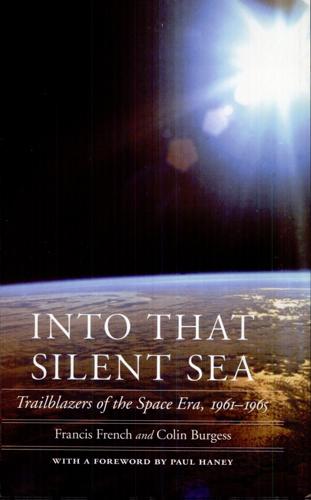
Into That Silent Sea: Trailblazers of the Space Era, 1961-1965
by
Francis O. French
,
Colin Burgess
and
Paul Haney
Published 2 Jan 2007
There were one or two that couldn't handle it, and obviously they dropped by the wayside. But that still sticks out in my mind. That's the lady that taught me how to study, and really provided that kind of discipline, which is essentially still with me." Shepard showed an early interest in airplanes and in the renowned exploits of his great boyhood hero, Charles Lindbergh. Over time, his bedroom became festooned with lovingly constructed balsa and tissue paper models, and his greatest problem was keeping his little sister Pauline (known as Polly) from playing with them. He and some friends formed Alan's Airplane Model Club, and they would meet in a shed connected to the barn to discuss their mutual interest.
…
But we were just utterly naive in the early days of Mercury. We were still carrying over some of the traditional ground role separate from the flight role we used in [airplane] flight test. Back home, the jubilation awaiting Glenn was overwhelming—national joy not seen since 1927, when America's "Lone Eagle," Charles Lindbergh, returned to the States after his solo flight across the Atlantic. Senators wept openly during Glenn's address to the U.S. Congress. A whistle-stop tour of several major U.S. cities culminated in a tumultuous parade through the packed streets of New York on 1 March 1962. In a powerful display of emerging "Astro Power," Glenn insisted on the presence of his six Project Mercury colleagues and their wives, prevailing over the objections of ansa administrator James Webb.
…
First, however, there was a small ceremony to perform. A beaming President Kennedy officially welcomed Cooper to the White House and presented him with nasa's Distinguished Service Medal, telling the astronaut, "You have given us a great day and a great lift." He also hailed Cooper as a worthy successor to Charles Lindbergh, who had flown solo across the Atlantic that same day thirty-six years before. In a speech later that day, Kennedy would publicly applaud the achievements of the last Mercury flight and nasa in general by stating: "I know there are lots of people who say, 'Why go any further in space?' When Columbus was halfway through his voyage, the same people said, 'Why go on any further?'

The Power of Glamour: Longing and the Art of Visual Persuasion
by
Virginia Postrel
Published 5 Nov 2013
After World War I, British fighter pilots were called “glamour boys.” The term was both admiring and pejorative, particularly among other military men. It drew a contrast between the celebrated knights of the air and the anonymous foot soldiers and support crews below.3 Charles Lindbergh: “You are that dream-self we all long to be,” wrote a fan. Library of Congress The twentieth century’s most glamorous aviator, however, was a civilian: Charles Lindbergh, whose allure after his 1927 solo flight from New York to Paris was as potent as any movie star’s. “You are that dream-self we all long to be,” declared a fan.4 What audiences saw in the young flier depended on their own ideals.
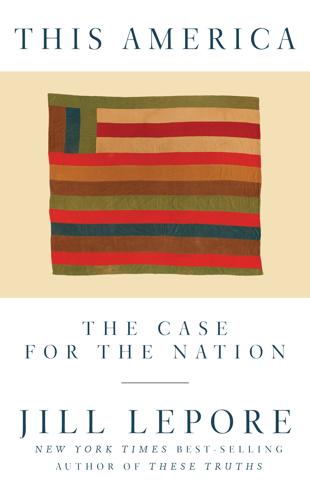
This America: The Case for the Nation
by
Jill Lepore
Published 27 May 2019
His audience heeded his call to form a new political party, the white nationalist Christian Front, in 1939, a year that twenty thousand Americans, some dressed in Nazi uniforms, gathered in Madison Square Garden, bedecked with swastikas and American flags, where they denounced the New Deal as the “Jew Deal” at a “Mass Demonstration for True Americanism.” America Firster Charles Lindbergh, who, not irrelevantly, had flown across the Atlantic, alone, based his nationalism in geography. “One need only glance at a map to see where our true frontiers lie,” he said in 1939. “What more could we ask than the Atlantic Ocean on the east and the Pacific on the west?” This FDR answered in 1940, declaring the dream that the United States is “a lone island” to be, in fact, a nightmare, “the nightmare of a people lodged in prison, handcuffed, hungry, and fed through the bars from day to day by the contemptuous, unpitying masters of other continents.”
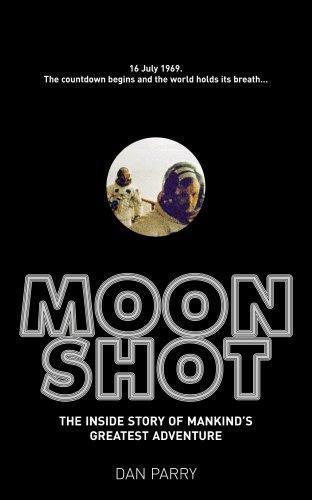
Moonshot: The Inside Story of Mankind's Greatest Adventure
by
Dan Parry
Published 22 Jun 2009
The commander of US troops in Vietnam, General Westmoreland, had however managed to overcome any similar worries about where he ought to be and was also watching the launch from the stands. He was joined by cabinet ministers, foreign dignitaries, businessmen and half the members of Congress, together with a scattering of stars including aviation pioneer Charles Lindbergh, comedian Jack Benny, and Johnny Carson, host of NBC's Tonight Show. Nearby around 3,500 reporters from 55 countries were gathered in the press enclosure, their numbers swollen by the throng that had witnessed the astronauts depart aboard the van. It was a moment some felt to be shaped by the hand of history, and venerable reporters like Eric Sevareid found themselves ascending into lofty rhetoric.
…
Taking a job with Standard Oil, he travelled the world in a style that for an oil executive managed to include a good deal of adventure. He was commended by Mussolini, flew himself over the Alps, and crossed the Atlantic aboard the Hindenburg zeppelin. Gene subsequently became an aviation consultant, making use of his connections with Charles Lindbergh, Howard Hughes and Jimmy Doolittle.15 When Edwin junior was born, his two older sisters, Madeline and Fay Ann, came to call him 'brother'. Fay Ann, who was just learning to speak, pronounced this as 'buzzer', which was later condensed to Buzz. He saw little of his adventurer father, and was largely brought up by his mother, his sisters, Anna the cook and Alice the housekeeper.
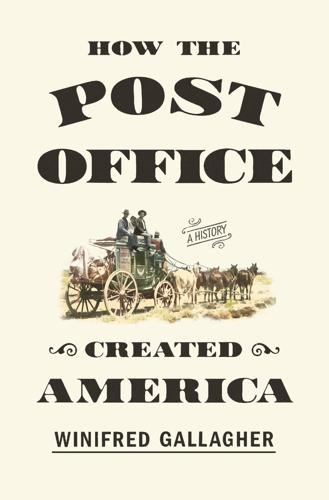
How the Post Office Created America: A History
by
Winifred Gallagher
Published 7 Jan 2016
Critics accused him of running his department like his legendary namesake department store in Philadelphia, but he used his business genius on behalf of average Americans to fight for Rural Free Delivery and broaden the meaning of “postal” to include parcel delivery and even savings banking. Despite the austerity imposed by two global wars and the Great Depression, the undernourished post nevertheless supported, for many years single-handedly, the infant aviation industry required for its Air Mail Service (an unknown Charles Lindbergh was among its pilots). It also linked citizens at home with their loved ones fighting abroad—in World War II with microfilmed Victory Mail letters (no lipstick kisses allowed). Deprived of funds and stuck with long-obsolete equipment and facilities, the post even managed to cope with the booming middle class’s quadrupling mail volume until 1966, when, amid riots, protests, and burning cities, the institution faced its second crisis, famously illustrated by the weeks-long shutdown of Chicago’s post office.
…
Although untrue, the legend persisted that Wild Bill had made off to Canada with the treasure. Postmaster General Harry New attributed at least part of the 20 percent increase in airmail volume in 1927 to an obscure twenty-five-year-old Army captain and former pilot for Robertson Aircraft, an Air Mail Service contractor. Charles Lindbergh had just become a worldwide celebrity when he flew the Ryan NYP single-engine Spirit of St. Louis on the first nonstop trip from New York to Paris in just thirty-three hours. Nevertheless, when asked about his future plans, he said, “I am an airmail pilot and expect to fly the mail again.” Indeed, “Lucky Lindy” had mastered his craft during his earlier days on the St.
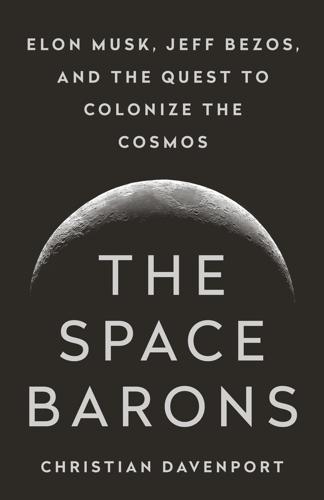
The Space Barons: Elon Musk, Jeff Bezos, and the Quest to Colonize the Cosmos
by
Christian Davenport
Published 20 Mar 2018
But he was ambitious and supersmart, and combined his aerospace experience with his engineering background to develop the simulator they were using for Rutan’s latest invention, a spaceplane called SpaceShipOne. “You could not get any more different,” Rutan recalled years later. “I wanted all three of these guys to be astronauts.” The curious-looking vehicle was Rutan’s entrant in the contest known as the Ansari X Prize, which was modeled after the $25,000 Orteig Prize that Charles Lindbergh won for his epic, across-the-Atlantic flight in 1927. Instead of crossing an ocean, the finish line of the X Prize would be reaching an altitude of 100 kilometers (62 miles), the barrier considered the edge of space. The winner of the $10 million contest would have to fly a manned spacecraft to that height, land it safely, and then do it again within two weeks.
…
SINCE ITS FOUNDING in 1904, the Explorers Club had been celebrating the truly adventurous, and have counted some of the world’s most courageous explorers as members, from Adm. Robert Peary and Matthew Henson, the first to reach the North Pole, to Ronald Amundsen, the first to reach the South. Charles Lindbergh was a member, as was Sir Edmund Hillary, the first to summit Mount Everest with his Sherpa, Tenzing Norgay. And, of course, it also celebrated those who pioneered space, including the crew of Apollo 11—Neil Armstrong, Buzz Aldrin, and Michael Collins. Every year, the club threw a lavish, black-tie awards banquet at the Waldorf Astoria in New York, where the cuisine was as adventurous as the expeditions its members routinely undertook.

The Long Weekend: Life in the English Country House, 1918-1939
by
Adrian Tinniswood
Published 2 May 2016
She puts down the receiver and says, ‘It is ours.’ We embrace warmly. I then go and get the plans and fiddle.”6 It would be another five months before the couple could even camp out at Sissinghurst. They moved in permanently in 1932, letting Long Barn to the producer Sidney Bernstein and then, in 1936, to Charles Lindbergh and his wife, Anne, who had left America in search of some privacy after the media frenzy that followed the kidnap and murder of their baby son. (“No, sir, we shall not stare at the poor people,” the village postmistress promised Harold when he told her the identities of Long Barn’s new tenants.7) Sissinghurst’s famous gardens were more or less complete by 1937.
…
When they toured the Royal Academy exhibition that afternoon, it was news. Three weeks later, at the end of May 1927, enormous crowds gathered in the Mall, far more than the usual handfuls of onlookers and tourists who habitually hung around the Victoria Memorial. They were there to catch a glimpse of a living legend. George V was presenting Charles Lindbergh with the Air Force Cross, “in recognition of the valuable and distinguished service rendered to aviation by his recent flight from New York to Paris.”11 So great was Lindbergh’s fame—the Spirit of St. Louis had been surrounded on the runway by thousands of cheering people when he landed at Croydon the previous day—that after his twenty minutes with the king and queen he disappeared into an equerry’s room to sign autographs.
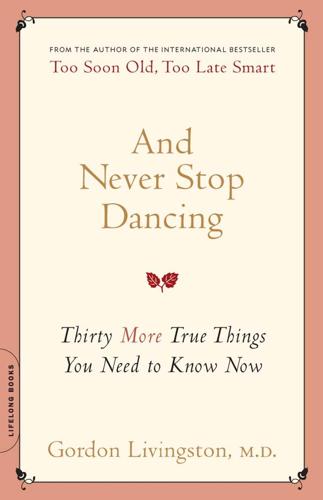
And Never Stop Dancing: Thirty More True Things You Need to Know Now
by
Gordon Livingston
Published 15 Feb 2006
If our heroes shrink, so does our sense of what it is to dare greatly, to truly achieve something. This is one reason I have a fondness for sports. While professional athletes are obscenely overcompensated and frequently flawed human beings, they at least provide us with images of competence and occasionally transcendence. You know I admire Charles Lindbergh. While it took considerable courage to take off in a single-engine plane across the Atlantic in 1927, the thing I really respect is that he reached the coast of Ireland only three miles off course after flying all night over 1,500 miles 43. 0738212494-text.qxd:0738212494-text.qxd 7/10/08 9:34 AM Page 44 And Never Stop Dancing of open ocean.
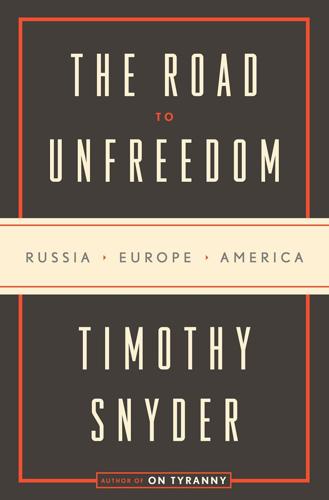
The Road to Unfreedom: Russia, Europe, America
by
Timothy Snyder
Published 2 Apr 2018
Whether or not it would become a democracy was an open question; many of its influential men thought not. George Kennan, an American diplomat who would become his country’s outstanding strategic thinker, proposed in 1938 that the United States should “go along the road which leads through constitutional change to the authoritarian state.” Using the slogan “America First,” the famous aviator Charles Lindbergh called for sympathy with Nazis. The Second World War also taught Europeans that the choice was between fascism and communism, empires of the far Right or far Left. It began with an unstoppable alliance of the two extremes, a German-Soviet offensive military pact of August 1939 that quickly destroyed the European system by eliminating whole states.
…
This was a reference to the 1930s, or rather to an alternative America of increasing racial and social inequality that was not met with public policy. In the 1930s, the phrase “America First” was used to oppose both the welfare state proposed by Franklin D. Roosevelt and the entrance of the United States into the Second World War. The public face of the America First movement, the pilot Charles Lindbergh, argued that the United States ought to make common cause with Nazis as fellow white Europeans. To say “America First” in the 2010s was to establish a point of mythical innocence in an American politics of eternity, to embrace inequality as natural, to deny that anything should have been done back then or could be done now.
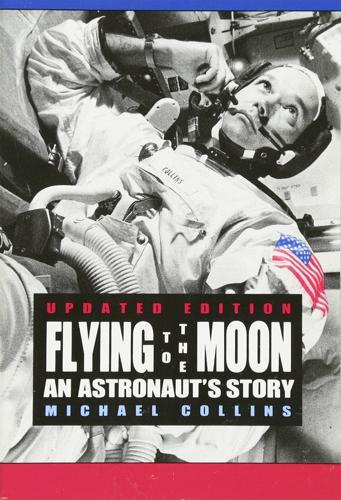
Flying to the Moon: An Astronaut's Story
by
Michael Collins
Published 1 Jan 1976
As the days passed and the mice stayed healthy, our spirits rose, and finally, on August 10, 1969, the flight of Apollo 11 ended and we were released to the world. 12 The flight of Apollo 11 ended a remarkable part of my life. For quite a while afterward, my life really was different than it had been before. I received mail from all over the world, from common people and from kings, from a few people I knew and from thousands I did not know. I got a nice letter from Charles Lindbergh, who thought that my flight around the moon by myself must have been similar to his solo flight across the Atlantic Ocean. I heard from the children of Phil Nowlan, the man who used to write the comic strip “Buck Rogers.” They said that when they were children growing up in a small Pennsylvania town, their father told them all about exploring the moon, thirty years before it actually happened.
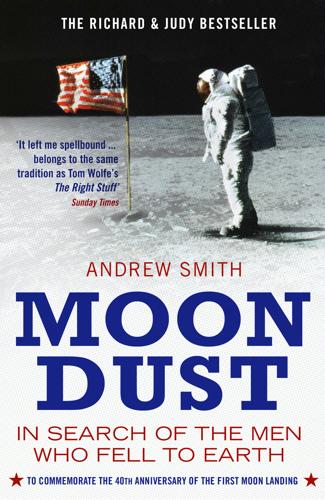
Moondust: In Search of the Men Who Fell to Earth
by
Andrew Smith
Published 3 Apr 2006
They were the ones who came nearest to the imaginings of popular culture at the time, as expressed in songs like Elton John and Bernie Taupin’s “Rocket Man” and David Bowie’s “Space Oddity,” or films like Tarkovsky’s Solaris (released in 1972 and since reimagined by Steven Soderbergh), where the gulf between terror and exultation collapses: a state best evoked on Earth either by drowning or going insane. Neither is this the fancy of a few artists: in his book Carrying the Fire, the Apollo 11 CM pilot Michael Collins reveals that his aviator hero, Charles Lindbergh, wrote to him, saying: “I watched every minute of the [first] walk-out, and certainly it was of indescribable interest. But it seems to me that you had an experience of in some ways greater profundity … you have experienced an aloneness unknown to man before.” In describing the experience of being on the far side, in the dark, facing out toward the impenetrable depths of the cosmos and separated from all humanity by the bulk of the Moon – out of sight and unreachable and utterly, utterly alone – Collins actually used the word “exultation.”
…
And I suspect that this is why the astronauts are shaping up to be more complex than expected: by the time I’d reached junior high, flying in the military meant dropping napalm on little girls – only an amoral fool would choose to do it – but to them, flying was about the daring pilots who saved the world from fascism. Charles Lindbergh was their Hendrix, Amelia Earhart their Grace Slick. Of course they wanted to fly. Of course they wanted to climb onto rockets and fling themselves at the heavens. Yet, as we’ve already heard, the astronaut thing was an accident. Here’s how Apollo happened. John F. Kennedy was a perfect expression of his time.
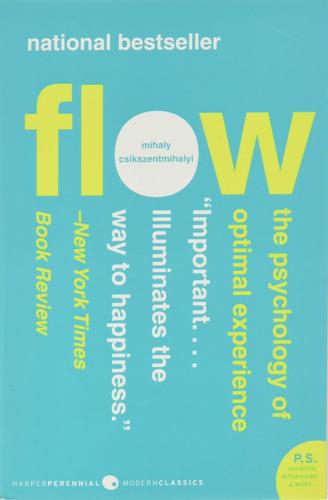
Flow: The Psychology of Optimal Experience
by
Mihaly Csikszentmihalyi
Published 1 Jul 2008
The head count of prisoners remained unchanged but I was actually away on a distant flight.” Not only prisoners report these strategies for wresting control back to their own consciousness. Explorers like Admiral Byrd, who once spent four cold and dark months by himself in a tiny hut near the South Pole, or Charles Lindbergh, facing hostile elements alone on his transatlantic flight, resorted to the same steps to keep the integrity of their selves. But what makes some people able to achieve this internal control, while most others are swept away by external hardships? Richard Logan proposes an answer based on the writings of many survivors, including those of Viktor Frankl and Bruno Bettelheim, who have reflected on the sources of strength under extreme adversity.
…
Then you are less likely to notice what the car is trying to tell you: that the engine is flooded or that the battery is dead. Similarly the pilot who spends too much energy contemplating what she wants the plane to do might miss the information that will enable her to navigate safely. A sense of complete openness to the environment is well described by Charles Lindbergh, who experienced it during his epoch-making solo crossing of the Atlantic: My cockpit is small, and its walls are thin: but inside this cocoon I feel secure, despite the speculations of my mind…. I become minutely conscious of details in my cockpit—of the instruments, the levers, the angles of construction.
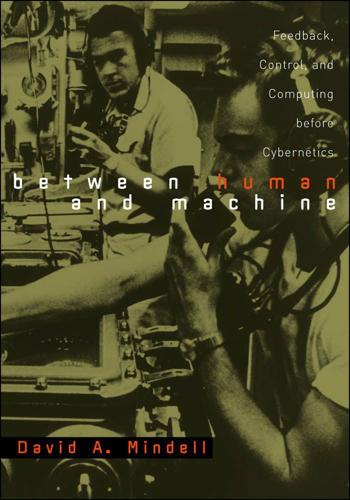
Between Human and Machine: Feedback, Control, and Computing Before Cybernetics
by
David A. Mindell
Published 10 Oct 2002
According to Mumford, when the neotechnic is fully realized, “automatism” in production progresses to the point where “in the really neotechnic industries and processes, the worker has been almost eliminated.” 2 In this vision people disappear from even the shiniest vehicles: for Mumford automobiles and airplanes were about gasoline and speed, not driving or piloting. However clean and electrical, machinery for Mumford remained inert and mechanistic, not actively involved with human beings. Yet even as Mumford wrote, people were entering into new, intimate couplings with machines, with dramatic effects. Just a few years before Mumford’s book, Charles Lindbergh flew across the Atlantic, blurring the boundary between pilot and machine. Lindbergh called his own account of the flight We to emphasize the collaborative nature of the feat—the hero was both the operator and the machine, their assemblage and their synthesis. “We shared our experiences together,” he wrote, “each feeling beauty, lift, and death as keenly, each dependent on the other’s loyalty.
…
After leaving the oil fields, Post found a job ferrying Lockheed Vega airplanes from the factory to customers. Here he gained experience with the problems of “blind flying” through clouds and bad weather, relying on early Sperry gyroscopic instruments to keep his bearings. In 1931 Post and his partner, Harold Gatty, who had trained Charles Lindbergh in navigation, made headlines by piloting a Vega named Winnie Mae around the world in record time (Fig. 3.3 ). 19 For the round-the-world flight Post grouped his instruments right in front of his one eye and modified the cockpit so that he could fly with one foot on the rudder pedals and one hand on the wheel.

Empire of the Scalpel: The History of Surgery
by
Ira Rutkow
Published 8 Mar 2022
Carrel was born in Lyon, but the majority of his experimental work was completed in the United States, where he was on the staff of the Rockefeller Institute for Medical Research in New York. Following World War I, Carrel’s experimental activities concerned the transplantation of organs. In 1935, in collaboration with famed aviator Charles Lindbergh, he devised a machine to supply oxygen to organs removed from the body, thus opening the way to organ transplantation. When World War II broke out, Carrel returned to France as a member of a special mission for the French Ministry of Health. In 1940, following the Nazi occupation, Carrel became director of the Carrel Foundation for the Study of Human Problems, which was established by the French Vichy government, a Nazi puppet regime.
…
Fischer as quoted by Howard Fabing, Fischerisms, 1930 The decade following World War I, the “Roaring Twenties,” was an exciting and prosperous time for the United States. In the wake of Henry Ford’s production of the Model T and the flourishing of oil companies, a web of highways spread across the nation as the automotive and energy industries took hold. In 1927, Charles Lindbergh’s flight over the Atlantic Ocean from New York to Paris roused the country and brought about the business of aviation. Bootleggers, flappers, and speakeasies thrived despite a constitutional ban on the manufacture and sale of intoxicating liquor. The American way of life appeared fundamentally secure when Herbert Hoover was inaugurated as president in March 1929.
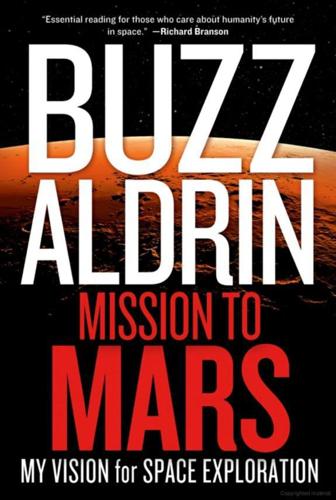
Mission to Mars: My Vision for Space Exploration
by
Buzz Aldrin
and
Leonard David
Published 1 Apr 2013
Over the centuries we have seen powerful reminders of those who explored beyond the boundaries of what they knew, from Copernicus and Galileo to Columbus. Jumping to the 20th century, it was on a windswept morning in 1903 at Kitty Hawk that the Wright brothers made the first powered flight. That same year, my mother, Marion Moon, was born. My father, Edwin Eugene Aldrin, was an engineer and an aviation pioneer—and a friend of Charles Lindbergh and Orville Wright. Taking a job with Standard Oil, my dad flew his own plane coast to coast. He later served in World War II in the Army Air Corps, coming home for visits. Born in 1930 and raised in Montclair, New Jersey, I finished high school there. Aviation was pretty much in the family.
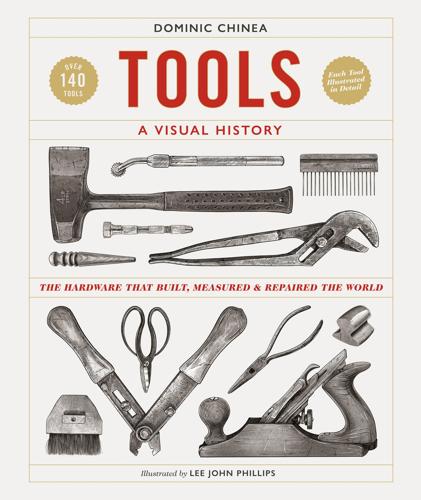
Tools a Visual History: The Hardware That Built, Measured and Repaired the World
by
Dominic Chinea
Published 5 Oct 2022
He definitely got something right because the next year, its Crescent adjustable spanner, or wrench, was being supplied along with each new Ford Model T, the first affordable assembly-line-produced car. The Model T car went on to become the biggest-selling car of all time, a record that stood until the 1970s. Nearly 20 years later, Charles Lindbergh gave Crescent a big helping hand by stating that on his famous solo non-stop transatlantic flight in 1927 from New York to Paris, all he took with him was “gasoline, sandwiches, a bottle of water and a Crescent wrench and pliers”. I’m not joking when I say I’ve got every size of adjustable spanner there is.

Hawaii
by
Jeff Campbell
Published 4 Nov 2009
Also noteworthy is the little cemetery at the side, where the graves are randomly laid out rather than lined up in rows. Even at rest, Hana folks like things casual. * * * THE ULTIMATE GETAWAY Hana may be a tight-knit Hawaiian community, but it’s certainly not a closed one. Over the years celebrities have fallen in love with Hana. Aviator Charles Lindbergh found his piece of paradise in nearby Kipahulu. Beatle George Harrison retreated to his estate in Nahiku when the world started pressing in. Woody Harrelson tucks himself back in the organic-gridless-communal Kipahulu area when he’s not busy acting. Singer Kris Kristofferson has long been active in the Hana community and actor Jim Nabors (aka Gomer Pyle) grows macadamia nuts nearby
…
It’s hard to imagine, but this quiet community was once a bustling sugar-plantation town. After the mill shut down in 1922, most people left for jobs elsewhere. Today mixed among modest homes, organic farms and back-to-the-landers living off the grid are a scattering of exclusive estates, including the former home of famed aviator Charles Lindbergh. * * * KILLER WEED According to legend, Hana folks once killed an evil shark-man who lived on a bluff near Mu′olea, the area between mile markers 46 and 47 north of Kipahulu. After burning the shark-man’s body, they dropped his ashes into a tide pool, but the shark man returned – this time in the form of limu make o Hana, the ‘deadly seaweed of Hana.’
…
It includes the ruins of a heiau that seems to be aligned with the Pleiades constellation, a summer residence of King David Kalakaua, and rare native plants. Hawaiian cultural organizations, including Kipahulu ′Ohana (Click here), are hoping to eventually restore the heiau and establish educational programs there. * * * SIGHTS Charles Lindbergh moved to remote Kipahulu in 1968. Although he relished the privacy he found here, he did occasionally emerge as a spokesperson for conservation issues. Following his death from cancer in 1974, Lindbergh was buried in the graveyard of Palapala Ho′omau Congregational Church. The church (c 1864) is also notable for its window painting of a Polynesian Christ draped in the red-and-yellow feather capes that were reserved for Hawaii’s highest chiefs.
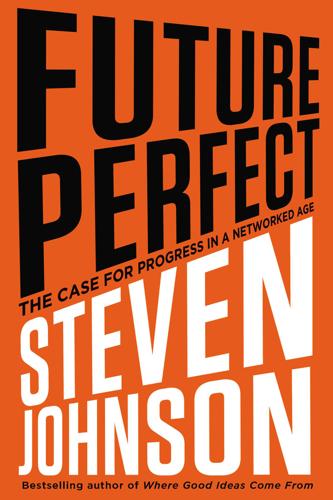
Future Perfect: The Case for Progress in a Networked Age
by
Steven Johnson
Published 14 Jul 2012
Those problems disappear, however, if the goals are defined by a peer network as well. That’s exactly the approach taken by the most celebrated sponsor of prize-backed challenges in the modern age: the X Prize Foundation. Now the source of dozens of million-dollar prizes in a wide range of fields, the organization took its original inspiration from the Orteig Prize won by Charles Lindbergh in 1927 for the first successful transatlantic flight. The X Prizes began in the mid-1990s, when the aerospace engineer and entrepreneur Peter H. Diamandis announced a competition that would spur innovation in the then nonexistent private-spaceflight industry. Ten million dollars would be awarded to any group that could carry three people beyond the earth’s atmosphere, approximately sixty-two miles above the surface of the planet.
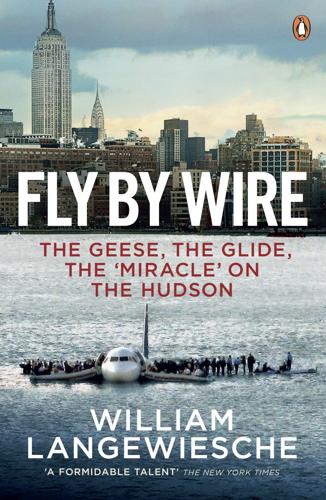
Fly by Wire: The Geese, the Glide, the Miracle on the Hudson
by
William Langewiesche
Published 10 Nov 2009
His performance was a work of extraordinary concentration, which the public misread as coolness under fire. Some soldiers will recognize the distinction. Sullenberger maintained his concentration through the water landing, the evacuation of the airplane, and the brief boat ride to shore. Then a strange thing happened to him. He was no Charles Lindbergh seeking to make history, no Chuck Yeager breaking the speed of sound. The Übermensch era of aviation had long since faded. But he crashed during a slump in the American mood, and overnight he was transformed into a national hero, at a time when people were hungry for one. At that point he began to concentrate again.
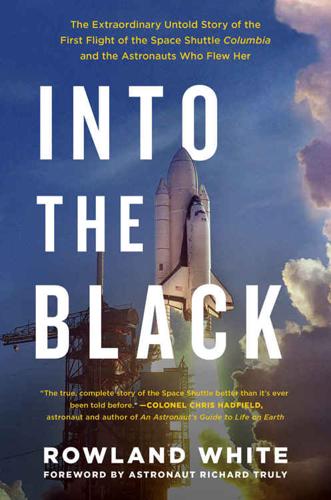
Into the Black: The Extraordinary Untold Story of the First Flight of the Space Shuttle Columbia and the Astronauts Who Flew Her
by
Rowland White
and
Richard Truly
Published 18 Apr 2016
Halfway through his first school year in Florida, John’s mother, suffering from schizophrenia, was taken away in a straitjacket to Florida State Hospital in Chattahoochee. He hadn’t even known she was unwell, but she never returned from the asylum. Yet despite permanently losing his mother to illness, Young prospered, inheriting an intuitive talent for engineering from his father. And he lived and breathed airplanes, reading obsessively about heroes like Charles Lindbergh, Eddie Rickenbacker and Jimmy Doolittle, augmented by science fiction such as Flash Gordon, Buck Rogers and Edgar Rice Burroughs’s influential John Carter of Mars. A straight-A student at Orlando High School, Young seemed to excel in whatever he put his mind to, from athletics to physics. It was to take him to Georgia Tech on an ROTC scholarship and a BSc in aeronautical engineering, before he joined the Navy, which, in its wisdom, instead of sending him to flight training, informed him he’d be joining the crew of the destroyer USS Laws as a gunnery officer.
…
It was a combination that might have been designed to provoke PIO, and yet, while Joe Engle was aware that the STA might have a tendency toward it, it never caused him any trouble. In fact he was convinced it was an issue with the simulation, not with the Shuttle’s own flight control software. In the ground-based sims in Building 5, which after all were using exactly the same software as the orbiter, he’d simply never provoked it. Engle was a low-gain pilot. Like Charles Lindbergh or Chuck Yeager, he barely moved the stick, anticipating the need to do so and making small, necessary corrections in plenty of time. His inputs were smooth and progressive, never snatching at the controls. And in the relaxed environment of the simulator it was even less likely he would do that.
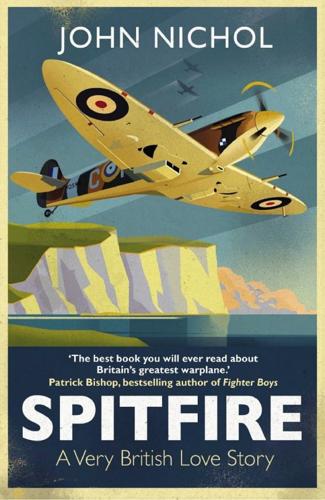
Spitfire: A Very British Love Story
by
John Nichol
Published 16 May 2018
Under the muddled leadership of motoring magnate Lord Nuffield, the Castle Bromwich factory set up in 1936 to turn out 100 Spitfires a month was experiencing major delays. The First World War plant in Eastleigh, near Southampton, Hampshire, had to step up to the plate. But, as the American millionaire flier Charles Lindbergh, famous for his solo non-stop transatlantic flight in 1927, could not fail to notice on a visit in 1939, it lacked the chromium-plated modernity of Germany’s Regensburg production line.17 Lindbergh had been invited to Europe by Goering for a red-carpet tour of the ultra-modern Messerschmitt factories, where 2,000 fighters had already been assembled.
…
* * * America’s support for Britain, vital in terms of materiel, was being openly questioned by Joseph Kennedy, the US Ambassador to London. If it continued, would it not be harmful to Washington’s future relationship with Germany? His views were gaining support. They were certainly backed by Charles Lindbergh, the millionaire American aviator whose caustic views on Spitfire production had already been expressed. It had been foolish to think the RAF, with little over 300 frontline fighters, could hold off the mighty Luftwaffe. Britain’s show of defiance was coming to a humiliating end. Hundreds were dying needlessly.
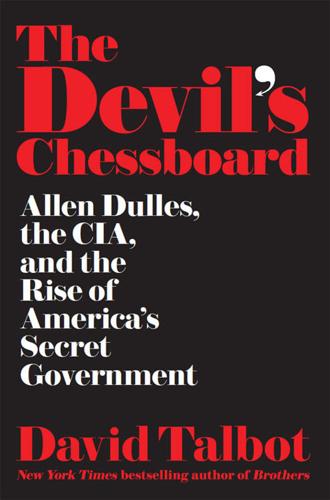
The Devil's Chessboard: Allen Dulles, the CIA, and the Rise of America's Secret Government
by
David Talbot
Published 5 Sep 2016
Foster continued to represent German cartels like IG Farben as they were integrated into the Nazis’ growing war machine, helping the industrial giants secure access to key war materials. He donated money to America First, the campaign to keep the United States out of the gathering tempest in Europe, and helped sponsor a rally honoring Charles Lindbergh, the fair-haired aviation hero who had become enchanted by Hitler’s miraculous revival of Germany. Foster refused to shut down the Berlin office of Sullivan and Cromwell—whose attorneys were forced to sign their correspondence “Heil Hitler”—until his partners (including Allen), fearful of a public relations disaster, insisted he do so.
…
This became particularly urgent as the 1940 presidential election neared, with FDR aiming for an unprecedented third term. In the final analysis, the president believed that the only way that the people facing Nazi persecution might be saved was through U.S. military intervention against Hitler. And with prominent isolationist crusaders like Charles Lindbergh labeling the looming European conflict a Jewish war, FDR realized that this was another reason not to appear too impassioned about the refugee crisis. As the debate raged within the administration, millions of lives hung in the balance, including those on board the St. Louis. If Henry Morgenthau was the voice of moral imperative in Roosevelt’s government, then Breckinridge Long, the assistant secretary of state in charge of immigration, was its avatar of cynicism.
…
“sincerity and frankness”: Ibid., 116. 20“Juden” scrawled crudely on the door: Harold Bartlett Whiteman Jr., “Norman H. Davis and the Search for International Peace and Security” (unpublished dissertation, Sterling Library, Yale University, 1958). 20“those mad people in control in Germany”: Lisagor and Lipsius, A Law Unto Itself, 138. 21“somewhat similar views”: Charles Lindbergh, The Wartime Journals of Charles A. Lindbergh (New York: Harcourt Brace Jovanovich, 1970), 283. 21Monitoring Dulles proved an easy task: Srodes, Allen Dulles: Master of Spies, 200–201. 22Stephenson was also willing to do the dirty work of espionage: See H. Montgomery Hyde, Room 3603: The Incredible True Story of Secret Intelligence Operations During World War II (New York: The Lyons Press, 1962). 22Stephenson was even authorized to kill: John Loftus, America’s Nazi Secret (Walterville, OR: Trine Day, 2010), 5; and author interview with Loftus. 22they sought advice from a British colleague named Peter Wright: Peter Wright, Spycatcher: The Candid Autobiography of a Senior Intelligence Officer (New York: Dell, 1988), 204. 23Douglas’s hatred for the “unctuous and self-righteous” senior Dulles: William O.
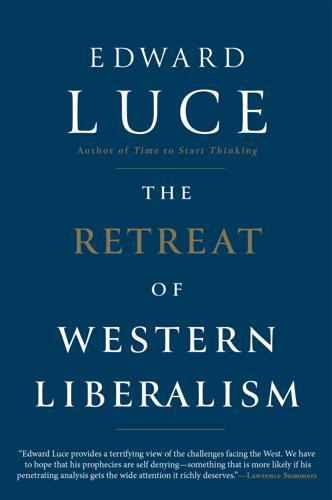
The Retreat of Western Liberalism
by
Edward Luce
Published 20 Apr 2017
France’s semi-civil war paralysed its politics and fatally divided the country in the lead-up to the Second World War. Of the main Western democracies, only the US and Britain had managed to keep the extremists at bay. Even then, however, the mob was influential. The popularity of the America First movement led by the aviation celebrity Charles Lindbergh, who admired Nazi Germany – and whose rallying cry was lifted by Trump – contributed to America’s near-fatal delay in entering into the Second World War. Britain’s 1930s Conservative governments were hopelessly divided in their response to the rise of Nazi Germany. Some wished to avoid conflict at all costs after the carnage of the Great War.
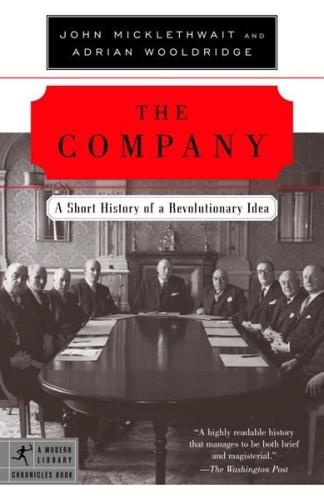
Company: A Short History of a Revolutionary Idea
by
John Micklethwait
and
Adrian Wooldridge
Published 4 Mar 2003
By the time the Great Depression struck, the state had become home to more than a third of the industrial corporations on the New York Stock Exchange: twelve thousand companies claimed legal residence in a single office in downtown Wilmington.21 Most of the other industrial trusts converted to holding companies, too. They, unlike Rockefeller, often did so at the instigation of the most powerful trust of them all, the “money trust,” as Congressman Charles Lindbergh dubbed the masters of Wall Street. Since the United States had no central bank, J. P. Morgan and a few other bankers wielded enormous power. The bankers made use of the new holding companies themselves to get around rules preventing them from investing in shares (Morgan, for instance, controlled a Philadelphia broker, Drexel and Company).
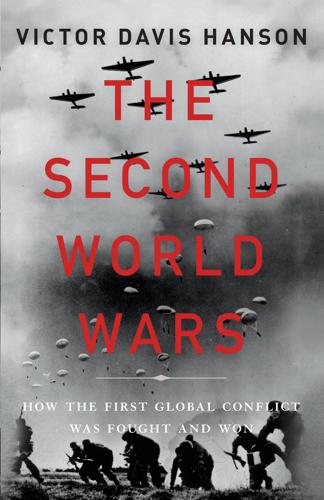
The Second World Wars: How the First Global Conflict Was Fought and Won
by
Victor Davis Hanson
Published 16 Oct 2017
In truth, America, for all its economic follies, had probably done as well as Germany in combatting the Depression, even though Hitler’s showy public works projects received far more attention. Confident Axis powers boasted of a new motorized war to come on the ground and above. This gospel seemed confirmed by a parade to Berlin of visiting American and British military “experts,” from aviator Charles Lindbergh to British tank guru J.F.C. Fuller. Most were hypnotized by Nazi braggadocio and pageantry rather than examination of precise armament output and relative quality of weapons. Few guessed that the hugely costly Nazi rearmament between 1934 and 1939 had nearly bankrupted the Third Reich but still had not given it parity in heavy bombers or capital ships with its likely enemies.
…
Between five hundred and one thousand Luftwaffe light and medium bombers ruined about 40 percent of Warsaw’s mostly undefended urban center, resulting in some twenty-five to forty thousand civilian deaths. In the generalized dread of German air power that followed, few speculated whether the Luftwaffe would have had such an easy time had Poland had flak batteries, barrage balloons, and fighter squadrons, or late-model radar stations. The American aviation hero Charles Lindbergh—himself accorded occasional choreographed visits to the Luftwaffe from 1936 to 1938—had warned the military establishments of Britain and America of the excellence and diversity of the new German aircraft models, supposed reflections of the vitality of Nazism itself. In a personal letter to General “Hap” Arnold written in November 1938, Lindbergh implied wrongly that the Luftwaffe had become nearly invincible: “Germany is undoubtedly the most powerful nation in the world in military aviation and her margin of leadership is increasing with each month that passes.
…
Coox, “The Effectiveness of the Japanese Military Establishment in the Second World War,” in Millett and Murray, eds., Military Effectiveness, Vol. 3, 4–5. Exaggerated Luftwaffe power: Murray, Luftwaffe, 60–61. 3. Murray, Luftwaffe, 28–38. Germany’s medium bombers: Murray, Change in the European Balance of Power, 44. 4. Yenne, Hap Arnold, 301–303 (Appendix 4: Charles Lindbergh Letter to Hap Arnold, 1938). Cf. also Lindbergh, Autobiography of Values, 180–182. See Olson, Those Angry Days, 14–18, 25–27; also Smith, Berlin Alert. 5. Re-creation of the Luftwaffe: Buckley, Air Power, 118–121; and see 126–128 on the air campaign in Poland. 6. Murray, Luftwaffe, 38–39. 7.

Slouching Towards Bethlehem
by
Joan Didion
Published 1 Jan 1968
Why have we made a folk hero of a man who is the antithesis of all our official heroes, a haunted millionaire out of the West, trailing a legend of desperation and power and white sneakers? But then we have always done that. Our favorite people and our favorite stories become so not by any inherent virtue, but because they illustrate something deep in the grain, something unadmitted. Shoeless Joe Jackson, Warren Gamaliel Harding, the Titanic: how the mighty are fallen. Charles Lindbergh, Scott and Zelda Fitzgerald, Marilyn Monroe: the beautiful and damned. And Howard Hughes. That we have made a hero of Howard Hughes tells us something interesting about ourselves, something only dimly remembered, tells us that the secret point of money and power in America is neither the things that money can buy nor power for power’s sake (Americans are uneasy with their possessions, guilty about power, all of which is difficult for Europeans to perceive because they are themselves so truly materialistic, so versed in the uses of power), but absolute personal freedom, mobility, privacy.

In the Shadow of the Moon: A Challenging Journey to Tranquility, 1965-1969
by
Francis French
,
Colin Burgess
and
Walter Cunningham
Published 1 Jun 2010
Edwin Eugene “Buzz” Aldrin Jr. was born on 30 January 1930 on the border of Glen Ridge and Montclair, New Jersey. His father, an aviation manager in the oil industry, had previously served in the Army Air Corps as a pilot and was one of commercial aviation’s pioneers. Edwin Aldrin Sr. had worked with aerospace pioneers such as Orville Wright, Robert Goddard, Howard Hughes, and Charles Lindbergh, and took his son for his first airplane ride when Buzz was two years old. Aldrin remembers both of his parents as strong willed, his father as being away most of the time, and, when he was home, as being “rather remote . . . an extremely intense person.” By the age of seventeen Aldrin was at West Point, from which he went on to graduate with a bachelor of science degree in 1951, placing third in a class of 435.
…
Almost everyone she knew had symptoms of the virus that month, and most of her close friends ended up following the flight on television while confined to their beds. Political showmanship had won out over a sensible medical precaution, and Valerie could only hope that Bill and his two colleagues would not get sick during the mission. As if to underscore the historic nature of the journey they were about to undertake, Charles Lindbergh visited the crew two days before the launch. Anders greatly enjoyed the meeting, but with the mission so close there was little time to appreciate it. “He was really a fine guy, one of my heroes. Now that I am into old airplanes I would have enjoyed it even more. But we were so busy training, getting ready, that I won’t say Lindbergh was a distraction, but it wasn’t the event that it could have been if it had been later.”
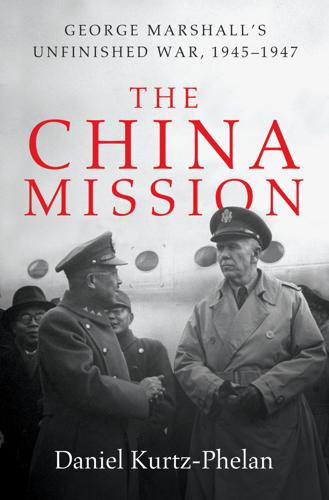
The China Mission: George Marshall's Unfinished War, 1945-1947
by
Daniel Kurtz-Phelan
Published 9 Apr 2018
Wedemeyer had always concealed an element of perfidy beneath a surface of polished assurance. He had earned Marshall’s regard by brilliance as a planner and tactician in the opening stretch of World War II. Even then, however, he held the America First view that the United States had been tricked into World War I and counted the pilot-turned-arch-isolationist Charles Lindbergh as a close friend. Before that, Wedemeyer had been posted to Nazi Germany and come away persuaded that “however much one disapproved of Hitler’s methods, the feeling of the German people that he had raised them out of the abyss was real.” After the war, he remained fixated on the dangerous influence of Jews, especially in the “money-making areas”—part of a “planned penetration by certain exponents of contrary ideologies.”
…
Soong Papers, Hoover; The enclosed letter pronounced AW to CKS, 2 August 1946, AW Papers 81/2, Hoover. 251 reaction in key quarters AW to CKS, 25 April 1946, AW Papers 81/2, Hoover. 251 “I shall accept as gospel” AW to GCM, 4 May 1946, GCM Papers 124/8, GCMRL; Marshall’s folly AW to Hurley, 31 December 1946, AW Papers 93/6, Hoover; asking the Chinese embassy AW to Counselor, Chinese Embassy, 24 April 1946, AW Papers 92/28, Hoover; “Marshall’s own statements” AW memo on “Chinese problem,” 10 August 1946, AW Papers 90/6, Hoover; to Chiang AW to CKS, 2 August 1946, AW Papers 81/2, Hoover; “so long as our policy” AW to Yeaton, 8 August 1946, AW Papers 83/36, Hoover; he blamed traitorous State Department AW to Caraway, 24 October 1946, AW Papers 80/19, Hoover. 251 “Exactly what happened” AW to Wei, 9 August 1946, AW Papers 83/30, Hoover; “Apparently there was opposition” AW to Chen, 13 August 1946, AW Papers 80/22, Hoover; “all of Asia” AW memo on “Chinese problem,” 10 August 1946, AW Papers 90/6, Hoover. 251–252 America First view Pogue, Ordeal, 141; Charles Lindbergh AW to CKS/Madame CKS, 15 December 1947, AW Papers 98/17, Hoover; “Hitler’s methods” Spence, To Change, 266; “money-making areas,” “planned penetration” AW to Hurley, 2 December 1947, AW Papers 98/41, Hoover. 252 “I am so sorry” Keith E. Eiler in Bland, George C. Marshall’s, 106; Marshall despised Bullitt Pogue, Organizer, 476; Marshall read it GCM to AW, 28 August 1946, GCM Papers 124, GCMRL. 252 “death struggle” Papers Vol. 5, 645; He reiterated to Chiang the risks GCM-CKS meeting notes, 16 August 1946, Marshall Mission Records 4, NARA. 252 strafed Yenan History of the Executive Headquarters, Alvan Gillem Papers, MHI. 252 An order was broadcast New York Times 20 August 1946; American intelligence judged Military intelligence review, 22 August 1946, Naval Aide Files 18/3, HST Papers, HSTL; Party spokesmen called the Nationalists New York Times 17 August 1946. 253 “Chiang cannot be counted on” Summary of telegrams, 19 August 1946, Naval Aide Files 22/2, HST Papers, HSTL. 253 Truce teams History of the Executive Headquarters, Alvan Gillem Papers, MHI. 253 subtropical summer GCM to Spencer, 14 August 1946, GCM Papers 123/41, GCMRL; 90 degrees Papers Vol. 5, 650; only slightly cooler JHC to Betty Caughey, 23 August 1946, JHC Papers 2/10, GCMRL; malaria JM to Hellman, 29 September 1946, JM Papers 36, HSTL; “In the heat” JM to Hellman, 6 August 1946, JM Papers 36, HSTL. 253 “The old man” Carter to Davis, 13 August 1946, Marshall Carter Papers, GCMRL. 253 “policy of force” GCM to HST, 17 August 1946, Secretary’s Files 160/10, HST Papers, HSTL; He saw both sides Beal, Marshall, 164; “tornado of propaganda” FRUS 1946 Vol. 10, 249. 253 “The Generalissimo is leading” Papers Vol. 5, 663; He warned Zhou, “I am sitting” GCM-Zhou meeting notes, 29 August 1946, Marshall Mission Records 4, NARA. 254 “We felt there was nothing else” GCM-Yu meeting notes, 30 August 1946, Marshall Mission Records 4, NARA; He refused to return FRUS 1946 Vol. 10, 255. 254 admitted to being confused GCM-Zhou meeting notes, 11 September 1946, Marshall Mission Records 4, NARA; as did Zhou FRUS 1946 Vol. 10, 145; and Madame Chiang FRUS 1946 Vol. 10, 172; “dizzy merry-go-round” Melby, Mandate, 190–191. 254 fireworks displays were canceled Jeans, Marshall Mission, 148; “put down rebellions” New York Times 14 August 1946. 254 Marshall wrote back Papers Vol. 5, 661. 255 slacks, blazer Beal, Marshall, 163. 255 “The military situation” GCM to HST, 30 August 1946, Secretary’s Files 160/10, HST Papers, HSTL. 255 “some elixir” FRUS 1946 Vol. 10, 152; embassy’s contribution FRUS 1946 Vol. 10, 148. 255 parallel inquiry in the State Department FRUS 1946 Vol. 10, 58. 256 “encouraged by feeling dead certain” Beal, Marshall, 198; wanted it stalled FRUS 1946 Vol. 10, 753; wanted most of it still withheld FRUS 1946 Vol. 10, 996; shipments of airplanes Carter to Deputy Chief of Staff, 13 August 1946, GCM Papers 124/25, GCMRL; ammunition FRUS 1946 Vol. 10, 757; Nationalist officials GCM-Yu meeting notes, 5 September 1946, Marshall Mission Records 4, NARA; “It was just a matter” GCM-Yu meeting notes, 30 August 1946, Marshall Mission Records 4, NARA; slowdown would hardly cripple Westad, Decisive, 49; $800 million Chinese Embassy analysis, 2 March 1948, AW Papers 99/11, Hoover. 256 “surplus property” Military intelligence review, 5 September 1946, Naval Aide Files 18/4, HST Papers, HSTL. 256 “adding fuel” FRUS 1946 Vol. 10, 1053; press conference New York Times 2 September 1946; “You are confusing” GCM-Zhou meeting notes, 29 August 1946, Marshall Mission Records 4, NARA. 257 “are seeking by intense” GCM to HST, 30 August 1946, Secretary’s Files 160/10, HST Papers, HSTL. 257 “significant pressure” FRUS 1946 Vol. 10, 873; Much of Truman’s cabinet Wallace, Price, 608; even Forrestal was recommending Forrestal to HST, 15 August 1946, Secretary’s Files 151/9, HST Papers, HSTL; “Those who have anything” Lynch to GCM, 2 August 1946, GCM Papers 123/15, GCMRL; “It may have been right” Torkel to GCM, 30 July 1946, GCM Papers 124/2, GCMRL. 257 “It is anticipated” Timberman to McConnell, 23 August 1946, Timberman-Fiske Papers, MHI. 258 armies to wage war in places like Manchuria GCM to Acheson, 28 August 1946, Marshall Mission Records 2, NARA. 258 Marshall saw the ambush GCM-Zhou meeting notes, 15 August 1946, Marshall Mission Records 4, NARA; “it would be a victory” FRUS 1946 Vol. 10, 874. 258 “there is no reason” Chang to GCM, 10 August 1946, GCM Papers 122/13, GCMRL; a force capable of balancing FRUS 1946 Vol. 10, 830. 258 “advocate discussion groups” JM to Hellman, 16 November 1945, JM Papers 36, HSTL; “stand between the two primitive giants” Melby, Mandate, 200; “They are learning” JM to Hellman, 6 August 1946, JM Papers 36, HSTL. 259 walking with Katherine in the moonlight JM to Hellman, 29 September 1946, JM Papers 36, HSTL. 259 “formal invitation to Russia” Papers Vol. 5, 663; “false power” FRUS 1946 Vol. 10, 170. 259 “pressure does not work” Qin, Chronicles, Vol. 6.1, 2990; Chiang simply refused CKS diary, 19 August 1946, Hoover; major push in Rehe Military intelligence review, 5 September 1946, Naval Aide Files 18/4, HST Papers, HSTL; evaded conversation CKS diary, 25 August 1946, Hoover; “He can use the sale of goods” CKS diary, 2 September 1946, Hoover; “to install a totalitarian” FRUS 1946 Vol. 10, 92; Truman promptly wrote back FRUS 1946 Vol. 10, 147; “We can get along” Beal, Marshall, 181. 260 “I am not” GCM-Zhou meeting notes, 5 September1946, Marshall Mission Records 4, NARA; sincerely FRUS 1946 Vol. 10, 89; his last trump card GCM to HST, 6 September 1946, Secretary’s Files 160/10, HST Papers, HSTL; National Assembly on his terms CKS diary, 9 September 1946, Hoover; Only military defeat GCM to HST, 13 September 1946, Secretary’s Files 160/10, HST Papers, HSTL. 260 by October GCM-Zhou meeting notes, 4 September1946, Marshall Mission Records 4, NARA; “a somewhat Chinese view” GCM to HST, 30 August 1946, Secretary’s Files 160/10, HST Papers, HSTL; he conceded to Truman GCM to HST, 13 September 1946, Secretary’s Files 160/10, HST Papers, HSTL. 260 sat Katherine down, “Only he” Bland, George C.
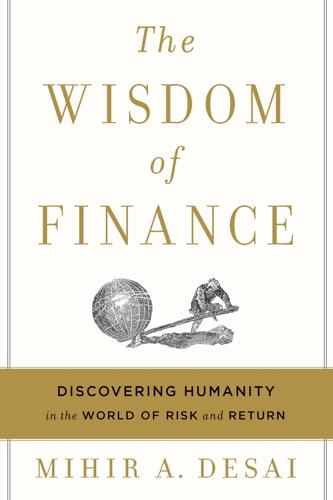
The Wisdom of Finance: Discovering Humanity in the World of Risk and Return
by
Mihir Desai
Published 22 May 2017
Markets and Hierarchies: Analysis and Antitrust Implications: A Study in the Economics of Internal Organization. New York: Free Press, 1983. The account of the Ford-Firestone partnership and breakup is based on Newton, James. Uncommon Friends: Life with Thomas Edison, Henry Ford, Harvey Firestone, Alexis Carrel, and Charles Lindbergh. New York: Mariner Books, 1989; Aeppel, Timothy, Joseph B. White, and Stephen Power. “Bridgestone’s Firestone Quits Relationship of 95 Years as Supplier of Tires to Ford.” Wall Street Journal, May 21, 2001; “Firestone Ends Ties with Ford.” Digital Journal, May 22, 2001. http://www.digitaljournal.com/article/32720; Lampe, John T.
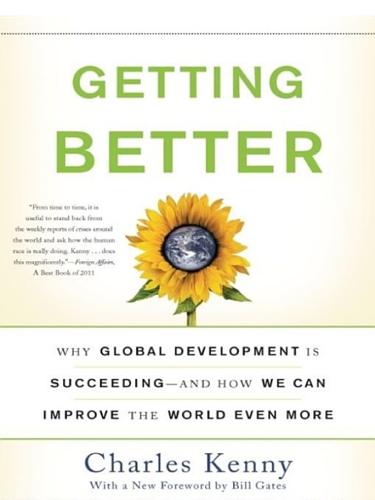
Getting Better: Why Global Development Is Succeeding--And How We Can Improve the World Even More
by
Charles Kenny
Published 31 Jan 2011
The advance purchase model might also be used to purchase new seed varieties with particular attributes designed to increase yields in Africa, for example, or to buy off-grid renewable power sources that could work reliably and cheaply in developing country settings. Another approach is that of using prizes to provide an incentive to research. Prizes played a role in the development of accurate timepieces required to measure longitude at sea; they also provided the incentive for Charles Lindbergh to fly across the Atlantic nonstop. More recently the model has been exploited by the X-Prize Foundation, which offered $10 million to the first company to launch a reusable three-passenger vehicle one hundred kilometers into space twice within two weeks. The foundation is already working to develop a prize based around the creation of a cheap and effective diagnostic tool for tuberculosis and is considering a range of prizes in education.
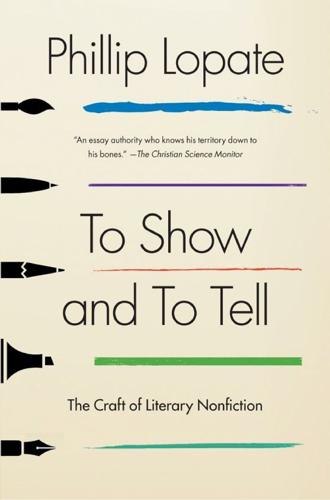
To Show and to Tell: The Craft of Literary Nonfiction
by
Phillip Lopate
Published 12 Feb 2013
What struck me most was this great writer saying that every night he would go to bed reminding himself, “Don’t invent, remember.” Sure enough, the first two-thirds of that novel are remarkable for the plausible way that everyday events come across, seeming so close to remembered fact; it’s only in the last third, when the plot gets all speeded up and absurd, and Charles Lindbergh becomes the right-wing president, that the book loses its poise and turns overly gimmicky. We should not be so in awe of invention; it can be a fairly cheap knack. We also need to recognize that some of our best recent writers were arguably better at nonfiction than fiction. Though they usually preferred to think of themselves as novelists, none of them ever created a character as vibrant as his/her nonfiction narrator, be it Mary McCarthy, George Orwell, James Baldwin, Gore Vidal, Norman Mailer (“Aquarius”), Susan Sontag, or Joan Didion.
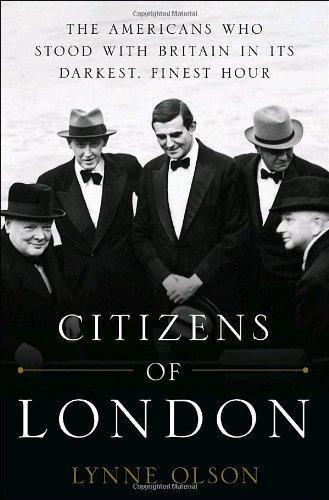
Citizens of London: The Americans Who Stood With Britain in Its Darkest, Finest Hour
by
Lynne Olson
Published 2 Feb 2010
Not yet aware of how serious their offense was regarded by the U.S. powers-that-be, three of the earliest volunteers checked in at the American embassy in London in June 1940, only to be attacked by Kennedy for “jeopardizing U.S. neutrality” and ordered back to the United States on the next ship. Instead, they headed straight for the British Air Ministry, enlisting in time to fly in the Battle of Britain. The Americans who joined the RAF had grown up in the age of Charles Lindbergh, when the mere idea of aviation captivated young people all over the world. Most of them already were experienced fliers. Some had dusted crops for a living; some were barnstormers and stunt pilots; one was a pilot for the Metro-Goldwyn-Mayer studio in Los Angeles, whose job had been to ferry movie stars and other Hollywood VIPs around California.
…
Everywhere he went in New York over the next few weeks, he was followed by autograph seekers, photographers, and newspaper and magazine writers begging for interviews. As unsettling as this celebrity was for Murrow, he had even more difficulty coming to grips with America’s continued refusal to commit itself to war. When he arrived, he found the isolationists in full cry—an “America First” rally at Madison Square Garden, Senator Burton Wheeler and Charles Lindbergh escalating their demands that Roosevelt keep the country at peace. Although isolationist leaders were gradually losing support in the country, they had become considerably more strident and aggressive in their attacks on the president and his administration. The interventionist movement was equally outspoken in firing back.

Aerotropolis
by
John D. Kasarda
and
Greg Lindsay
Published 2 Jan 2009
The aim of this book is to tell the story of how these things went from being impossible to inevitable. 1 A TALE OF THREE CITIES Los Angeles, Washington, and Chicago are the sum of their airports. Without room to expand them, they face limits to growth. Los Angeles: Neighbors, Noise, and NIMBY In 1926, a year before Charles Lindbergh flew solo across the Atlantic and two years before the first Academy Awards, the burghers of Los Angeles were worried they didn’t have an airport. In fact, they had too many. There were fifty-two landing strips in LA County that year— mostly dirt, with a windsock and maybe a barn doubling as a hangar.
…
Needing someone to buy his planes and somewhere to fly them, he launched Ford Airlines, also a first. His fleet of Tri-Motors ferried passengers, auto parts, and airmail between Dearborn and Chicago until 1933, when he closed both the airline and the factory. (Always a trailblazer, he’d never turned a profit.) Charles Lindbergh and Amelia Earhart were customers, while TWA started cross-country service using Tri-Motors in 1929. The airport was later paved over for an automobile test track and proving grounds; drivers still swerve around traces of the runways. But Ford wasn’t finished. He never mass-produced the Tin Goose the way he had the Model T.
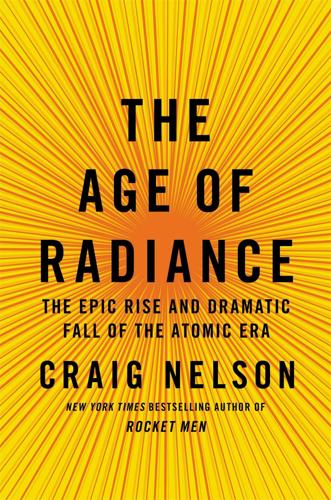
The Age of Radiance: The Epic Rise and Dramatic Fall of the Atomic Era
by
Craig Nelson
Published 25 Mar 2014
Janet thought Leo was a crackpot, and she would continue to think this until 1945, when she learned of Hiroshima and Nagasaki. At war’s end, Einstein insisted that, with his letter to FDR, “he really only acted as a mailbox” for Leo Szilard. Szilard and Einstein then thought they might ask Charles Lindbergh to discuss the matter with FDR, but learned soon enough that the president and the aviator were politically opposed and thus returned to Sachs, who met with the president on October 11 and 12, bringing Einstein’s letter for FDR to read directly: Albert Einstein Old Grove Rd. Nassau Point Peconic, Long Island August 2nd 1939 F.D.
…
On September 3, 1939, news arrived that a Nazi submarine had torpedoed the ocean liner Athenia, which was sinking off the shores of Scotland. John Lawrence, Ernest’s brother, had been in Britain lecturing on the Rad Lab’s medical achievements. He was on that ship and it took two days to learn that he was safe. Previously, Ernest was a die-hard midwestern noninterventionist firmly in the camp of Charles Lindbergh, who believed Europe’s troubles were none of America’s business. Nearly losing his brother made Ernest fervently change course. Then, on November 9, he won his Nobel for inventing the cyclotron. In December 1940, Segrè and Lawrence met with Fermi and Columbia’s Pegram to mull over the cyclotron’s recent breakthrough of forcing U-238 to capture a neutron and produce a new element—#93, neptunium.
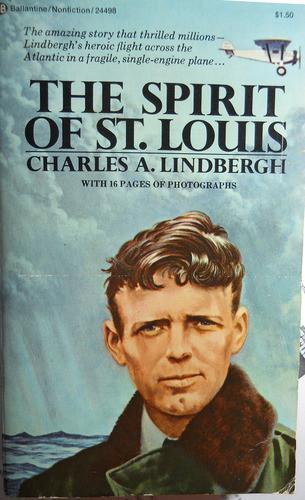
The Spirit of ST Louis
by
Charles A. Lindbergh
Published 2 Jan 1953
"I am calling on long distance from St. Louis, Missouri. I want to talk to one of the Wright Corporation's executive officers—on business." I say it slowly and firmly to impress her. Apparently it does. "Hold on a minute, please." The next voice is a man's. "I'm calling from St. Louis," I repeat. "My name is Charles Lindbergh. I represent a group of men here who are interested in buying a plane for the New York-to-Paris flight. I’d like to talk to you about the Bellanca, and I want to get me information about your engines. When would it be convenient for you to see me in Paterson?" "Did you say you're calling from St.
…
It takes time, time you haven't got to give them when you're organizing a farm, breaking in new stock, and trying to get the ground prepared for crops in spring --- Twelve degrees right rudder. Now it's-mid-September. "Sixty-four I'm bid. Sixty-four I'm bid. Who'll make it sixty-five? Make it sixty-five! --- Fresh last month and going at sixty-four dollars! --- She's worth ninety if she's worth a cent --- going at sixty-four ---going at sixty four --- sold to Charles Lindbergh at sixty-four dollars!" The auctioneer points his stick at me and turns to the next animal. I'm buying cows for our milk herd. This roan is mixed as a mongrel dog. She's nothing to be proud of; but her udders are full and her veins are large. She'll run up our check from the creamery. The Western heifers Father bought won't help us much this winter.

Aftershocks: Pandemic Politics and the End of the Old International Order
by
Colin Kahl
and
Thomas Wright
Published 23 Aug 2021
“The failure of the democratic powers opened a strategic window of opportunity in the early 1930s. We know what nightmarish forces would tear through that window.”55 THE WORLD BECAME TOO SMALL In his 2004 novel The Plot Against America, Philip Roth envisioned an alternative history in which the famed aviator, Medal of Honor recipient, and noted anti-Semite Charles Lindbergh defeated incumbent president Franklin Delano Roosevelt in the 1940 election. In the book, Lindbergh campaigned on an isolationist, antiwar platform, and then, once in office, signed a treaty with Nazi Germany promising not to oppose German ambitions in Europe. The novel’s main protagonists are the Roths, an all-American Jewish family in Newark, New Jersey, forced to contend with rising, and increasingly institutionalized, anti-Semitism and violence.56 The book was made into a critically acclaimed HBO limited series in 2020, where many of its themes of a celebrity-turned-politician winning election on an isolationist, fearmongering, and xenophobic platform took on new resonance: a warning about the types of forces growing in the United States and beyond in the Trump era.
…
Graebner and Bennett, The Versailles Treaty and Its Legacy, 59–60. 55. Tooze, The Deluge, 511. 56. Philip Roth, The Plot Against America (New York: Houghton Mifflin Harcourt, 2004). 57. Quoted in Frank Rich, “Trump’s Appeasers,” New York Magazine, October 31, 2016, https://nymag.com/intelligencer/2016/11/charles-lindbergh-is-a-cautionary-tale-for-republicans.html. 58. Charles A. Lindbergh, “We Cannot Win This War for England,” April 23, 1941, http://www.ibiblio.org/pha/policy/1941/1941-04-23a.html. 59. Quoted in Susan Dunn, “The Debate Behind U.S. Intervention in World War II,” The Atlantic, July 8, 2013, https://www.theatlantic.com/national/archive/2013/07/the-debate-behind-us-intervention-in-world-war-ii/277572/. 60.
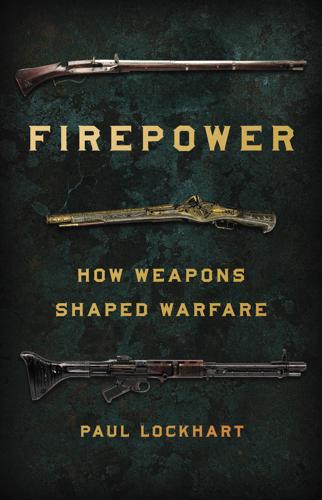
Firepower: How Weapons Shaped Warfare
by
Paul Lockhart
Published 15 Mar 2021
President James Monroe inspected the ship before its departure for England; the tsar of Russia and the king of Sweden, plus untold numbers of foreign dignitaries and naval officers, visited the ship as it toured northern European ports after its reception in Liverpool. The excitement it generated was no less intense than the fascination that gripped Europe when Charles Lindbergh flew the Spirit of St. Louis across the ocean little more than a century later. The advantages of steam-powered sea travel were probably more apparent in 1819 than the advantages of long-distance air travel in 1927. Savannah showed the world that a ship could make a voyage of several thousand miles without danger of being set back or left stranded by wind.
…
Most of the major European states had viable aircraft manufacturers, but the leaders were Britain and, above all, the United States. Very few Americans could afford to travel by air, but the mere prospect of air travel was so glamorous and thrilling that it caught the popular imagination. Aviation pioneers such as Amelia Earhart and Charles Lindbergh became national heroes, and Americans followed their exploits with rapt attention. Lindbergh’s famous 1927 transatlantic flight in his Spirit of St. Louis, which demonstrated that even vast oceans could now be bridged by air, excited ordinary folk as much as it did the most zealous advocates of airpower.
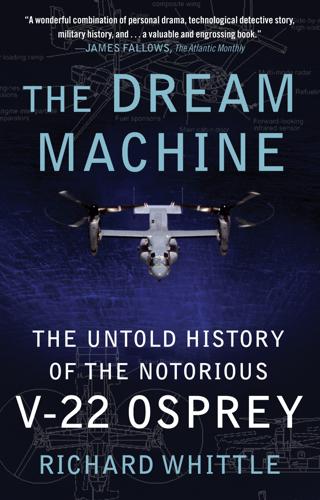
The Dream Machine: The Untold History of the Notorious V-22 Osprey
by
Richard Whittle
Published 26 Apr 2010
Burke Wilford, organized the meeting, which would prove a seminal event for what became the rotary wing aircraft industry. An engineer and manufacturer by profession, and a wealthy man, Wilford was another free-thinker and aviation entrepreneur who bubbled with enthusiasm for the idea of rotary wing aircraft. He had been drawn to aviation by a contest to develop safer aircraft in 1927, the year Charles Lindbergh became the first to fly across the Atlantic solo in his Spirit of St. Louis. Since then, Wilford had built a gyroplane, a machine similar to an Autogiro, based on a design he had bought during a visit to Germany in the 1920s. Now Germany’s Fw 61 helicopter was causing a sensation among the rotary wing crowd.
…
Lichten had seen it first, of course, but as Wernicke led Bell’s engineers in designing and building the XV-15, he became utterly convinced the tiltrotor was going to change the world. It just had to be, Wernicke thought. He was so sure of it, sometimes he’d look around and think, “Why build helicopters anymore? Why aren’t they all building tiltrotors?” When the XV-15 stole the Paris Air Show in 1981—on the very airfield where Charles Lindbergh had changed aviation history, and the world, by completing the first nonstop transatlantic flight in 1927—Wernicke thought that was the turning point. Now, he was sure, Bell would get a chance to build a real production tiltrotor, a chance to prove to the world that the tiltrotor really was the dream machine.
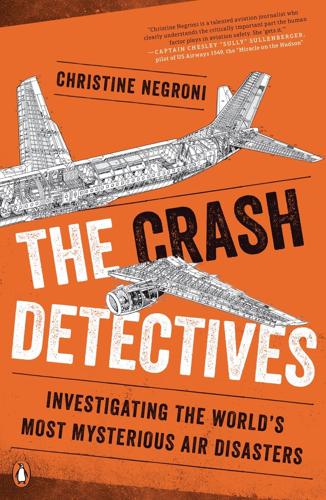
The Crash Detectives: Investigating the World's Most Mysterious Air Disasters
by
Christine Negroni
Published 26 Sep 2016
Because of the seriousness of loss of pressurization in flight, the modern airliner has a belt-and-suspenders approach to the hazard. The oxygen mask is the belt, and emergency descent is the suspenders. They are equally important, two routes to the same destination: clearheadedness. In his book Of Flight and Life, Charles Lindbergh tells of testing an unpressurized fighter plane at thirty-six thousand feet in 1943 when his oxygen supply abruptly stopped. “I know from altitude-chamber experience that I have about 15 seconds of consciousness left at this altitude—neither time nor clearness of mind to check hoses and connections.
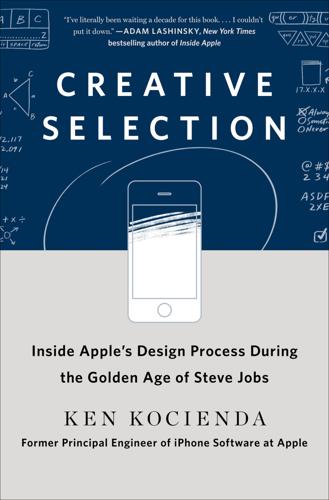
Creative Selection: Inside Apple's Design Process During the Golden Age of Steve Jobs
by
Ken Kocienda
Published 3 Sep 2018
Steven Johnson, Where Good Ideas Come From: The Natural History of Innovation (New York: Riverhead Books, 2010). 5. Paul Israel, Edison: A Life of Invention (New York: John Wiley & Sons, 1998). Of particular interest is the text on pages 168, 188, and 217. 6. James Newton, Uncommon Friends: Life with Thomas Edison, Henry Ford, Harvey Firestone, Alexis Carrel & Charles Lindbergh (New York : Harcourt, 1987), p. 24. Apparently, the author, James Newton, was on the scene when Edison made this statement about inspiration and perspiration. However, the quotation I cite is part of a lengthy back-and-forth with a reporter who was questioning Edison on the occasion of his birthday in 1929, and I doubt the author had a notebook to take down what Edison said.

Longshot
by
David Heath
Published 18 Jan 2022
For years, Graham had been growing more confident he could create a vaccine fast enough to stop a pandemic. That is a feat many of his colleagues might have thought absurd. But in Graham’s mind, he just needed the right virus to prove it. History was not on his side. Typically, it takes years and even decades to bring a successful vaccine to market. Graham’s quest seemed akin to Charles Lindbergh dreaming of flying to Paris at supersonic speeds. But Graham had a unique vantage point. He sat at the command center at the Vaccine Research Center for combating emerging disease. In fact, that was his precise job. The center’s primary mission from the start had been to develop an HIV vaccine.

Mexico - Mexico City
by
Rough Guides
Rooms are comfortable if unspectacular, with cable TV and mini-bars, but the facilities are excellent, and include the lovely Salon Jardín with its stained glass and iron roof, a restaurant, gym, spa and on-site Sanborns restaurant. The lobby has interesting exhibits on the hotel’s history and past clients, who have included Marlon Brando, William Randolph Hearst and Charles Lindbergh. Breakfast included. M$1580 Hotel Del Principado Londres 42 55 5533 2944 or 800 830 6040, hoteldelprincipado.com.mx; Metro Insurgentes; map. The double rooms (with two double beds) are rather more spacious and get rather more light than the one-bed rooms (in which it’s worth asking for a king-size bed, as these cost no extra), but all have a TV and phone, and there’s free wi-fi, parking facilities and a laundry service.
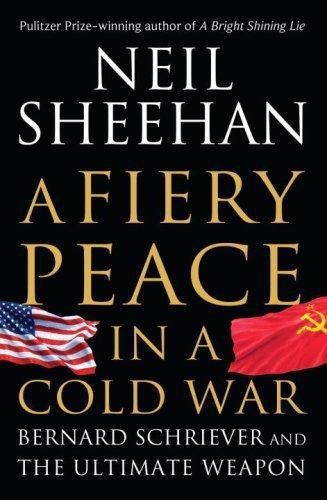
A Fiery Peace in a Cold War: Bernard Schriever and the Ultimate Weapon
by
Neil Sheehan
Published 21 Sep 2009
And so on this opening morning of the meeting he stood on the step before the altar rail, where the students had knelt to receive the Communion wafer, and updated his prestigious audience on what had transpired since the formation of the new committee by Gardner and its initial meeting in Washington in April. Johnny von Neumann, Kistiakowsky, Wiesner, Norris Bradbury, and Charles Lindbergh sat on the pews in front of him with the other members new and old. Running down the walls on both sides of the chapel were windows of stained glass with portraits of saints and depictions of religious scenes. These were subsequently covered with plasterboard when the pews were ripped out and replaced by seats.
…
The senator flew out to California for briefings by Bennie and his team at the Schoolhouse in Inglewood and then by McNarney and Lanphier and their Atlas team at Convair headquarters in San Diego. After his return to Washington, Symington indicated he was going to start making trouble over the way the ICBM program was being handled. Schriever and Gardner took the initiative and confronted him together in order, as Bennie put it in his diary, to “lay cards on table with Symington.” Charles Lindbergh also intervened, persuading Talbott to call the senator. The counterattack seems to have been effective. Symington apparently decided he did not want to get involved. He did nothing. At the end of November, McNarney and Lanphier convened a meeting in San Diego to present what they apparently regarded as a compromise.
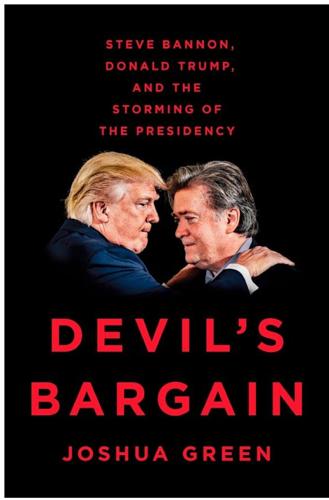
Devil's Bargain: Steve Bannon, Donald Trump, and the Storming of the Presidency
by
Joshua Green
Published 17 Jul 2017
When I give speeches, sometimes I’ll sign autographs and I’ll get to talk to people and learn a lot about the party.” The problem, he’d concluded, was lousy marketing. Having absorbed the shortcomings of the Republican message, Trump had developed a better one: “America first.” He waved off complaints that the slogan was redolent of the anti-Semitism of Charles Lindbergh’s America First Committee during World War II. “I don’t care,” he said. “When you look at the voters, you see they want hope. There’s no hope. No hope. We’re taking care of everybody else. I’m for making America first.” Under Trump, things would be different. “Five, ten years from now—different party,” he said.
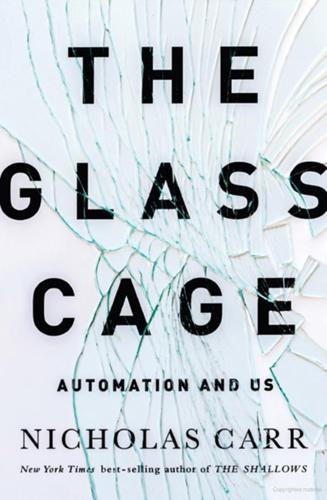
The Glass Cage: Automation and Us
by
Nicholas Carr
Published 28 Sep 2014
To the novice mower, a scythe may feel like a foreign object in the hands; to the accomplished mower, hands and scythe become one thing. Talent tightens the bond between an instrument and its user. This feeling of physical and ethical entanglement doesn’t have to go away as technologies become more complex. In reporting on his historic solo flight across the Atlantic in 1927, Charles Lindbergh spoke of his plane and himself as if they were a single being: “We have made this flight across the ocean, not I or it.”24 The airplane was a complicated system encompassing many components, but to a skilled pilot it still had the intimate quality of a hand tool. The love that lays the swale in rows is also the love that parts the clouds for the stick-and-rudder man.

How Democracies Die
by
Steven Levitsky
and
Daniel Ziblatt
Published 16 Jan 2018
For decades, both parties succeeded in keeping these figures out of the mainstream. Until, of course, 2016. 2 Gatekeeping in America In The Plot Against America, American novelist Philip Roth builds on real historical events to imagine what fascism might have looked like in prewar America. An early American mass-media hero, Charles Lindbergh, is the novel’s central figure: He skyrockets to fame with his 1927 solo flight across the Atlantic and later becomes a vocal isolationist and Nazi sympathizer. But here is where history takes a fantastic turn in Roth’s hands: Rather than fading into obscurity, Lindbergh arrives by plane at the 1940 Republican Party convention in Philadelphia at 3:14 A.M., as a packed hall finds itself deadlocked on the twentieth ballot.

The Socialist Manifesto: The Case for Radical Politics in an Era of Extreme Inequality
by
Bhaskar Sunkara
Published 1 Feb 2019
The Communists had recovered from the events of 1927 and had beaten back several nationalist offensives; they now ruled a territory of three million people that was larger in area than France. But the Kuomintang forces were still superior. They were reinforced by foreign support. American and British loans to the KMT allowed them to pay for US-built airplanes, and they also benefited from the services of military advisors, including Charles Lindbergh and hundreds of Wehrmacht officers, who formulated a strategy to slowly strangle the CPC positions. In response, Mao continued to advocate hit-and-run attacks and guerrilla warfare, while his future deputy Zhou Enlai favored “protracted warfare” with mass formations. The Communists had their own German military advisor in Comintern agent Otto Braun.
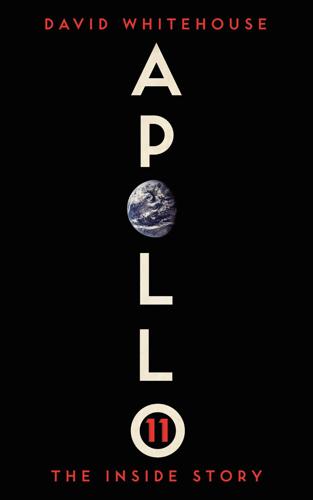
Apollo 11: The Inside Story
by
David Whitehouse
Published 7 Mar 2019
In his biography Armstrong said, ‘In my mind the important thing was that we got four aluminium legs safely down on the surface of the moon while we were still inside the craft. But it could technically have been Buzz. Just move before you put the backpacks on.’ Later Chris Kraft explained NASA’s thinking. He said that they knew damn well that the first guy on the Moon was going to be a modern-day Charles Lindbergh (the pioneering intercontinental aviator). Neil was calm, quiet and had absolute confidence. We knew he was the Lindbergh type. He had no ego. The most he ever said about walking on the Moon was that it might have been that he wanted to be the first test pilot to walk upon the Moon. If you would have said to him, you are going to be the most famous human being on Earth for the rest of your life, he would have answered that he didn’t want to be the first man on the Moon.
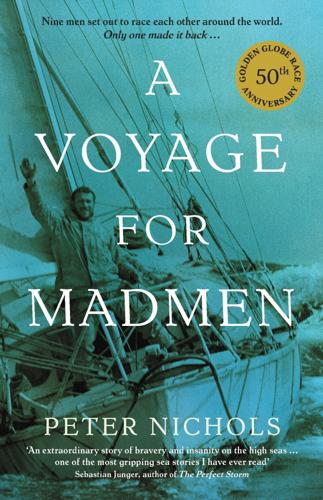
Voyage for Madmen
by
Peter Nichols
Published 1 May 2011
So is the movie cowboy: a romantic, socially unstable character who appears at the fringes of town, throwing men and women into turmoil before satisfying an underlying social need and then disappearing. His motives are entirely personal; he acts selfishly in his own interest, but his actions have a profound effect on the society around him. Polar explorers Peary, Scott, and Amundsen; Charles Lindbergh, who made the first transatlantic solo flights, mountain climbers and single-handed sailors – they are all archetypes of the lone hero. Part of the attraction of these loners is that they invariably look and sound normal: they look like us. They’re usually modest when asked how they survived their terrible ordeals, they readily admit their fear, and in so doing they fool the rest of us into thinking that they are like us – or more accurately, that we could be like them.

Restarting the Future: How to Fix the Intangible Economy
by
Jonathan Haskel
and
Stian Westlake
Published 4 Apr 2022
First, we should cautiously weaken IP rights, rolling back patents in areas where their remit has grown—for example, by ending patents on software and straightforward business processes, reducing patent lengths in selected industries, requiring genuine disclosure of what makes underlying technologies work, and introducing prizes or patent buyouts for certain socially desirable inventions, such as antibiotics.32 When the world was racing to develop a COVID-19 vaccination, the economist Joshua Gans suggested using a prize for a COVID-19 vaccine to solve the commitment problem—namely, that the successful development of a COVID-19 vaccine runs the risk of having governments take control of the vaccine for less than the market price, a question that ended up being hotly debated in 2021.33 A precommitment to purchase such an important innovation may be optimal from the government’s point of view because a vaccine would not only save lives but also save the rest of the economy; but the government has to find a way of committing to rewarding the vaccine company for its sunk costs. That said, it’s important not to apply the experience of vaccine development to government innovation policy generally. A prize works if the innovation is easy to specify: for example, Charles Lindbergh won the Orteig Prize for flying nonstop from New York to Paris, and the winners of the $10 million Ansari X Prize for carrying three people one hundred kilometres above the Earth’s surface won twice within two weeks. The requirement for winning a prize for a vaccine may be relatively easy to specify (for example, a particular effectiveness rate), but not all innovations are so easily pinned down.

Hawaii Travel Guide
by
Lonely Planet
Today, mixed among modest homes, organic farms and back-to-the-landers living off the grid are a scattering of exclusive estates, including the former home of famed aviator Charles Lindbergh. 1Sights Wailua FallsWATERFALL ( MAP GOOGLE MAP ) Before you reach Kipahulu, you’ll see orchids growing out of the rocks, and jungles of breadfruit and coconut trees. Around 0.3 miles after the 45-mile marker, you’ll come upon the spectacular Wailua Falls, which plunge a mighty 100ft just beyond the road. There’s usually plenty of people lined up snapping photos. Charles Lindbergh’s GraveCEMETERY ( MAP GOOGLE MAP ) Charles Lindbergh, the first man to fly across the Atlantic Ocean, moved to remote Kipahulu in 1968.
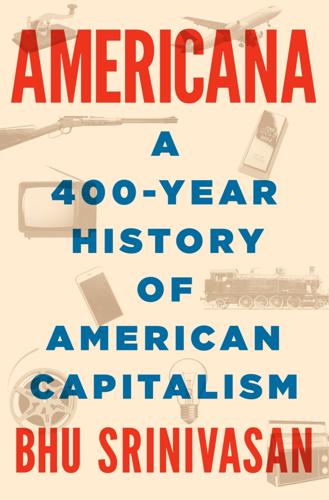
Americana: A 400-Year History of American Capitalism
by
Bhu Srinivasan
Published 25 Sep 2017
The twenty million electrified American homes had new appliances such as washing machines and vacuum cleaners. The war efforts had made way for the rise of commercial aviation, with thousands of small aircraft operating scheduled service. And Americans continued to push the boundaries of their own breakthroughs: Charles Lindbergh crossed the Atlantic and became an international hero. American ingenuity was even putting radio into cars. Despite the loss of alcohol taxes due to Prohibition, the income tax had led to years of postwar budget surpluses. During the eight years of Republican presidencies under Warren Harding and Coolidge, the country had paid down vast amounts of debt incurred during the war.
…
As long as the Atlantic and Pacific oceans remained vast and filled with water, America was going to be tough to invade. This conception of warfare left America with old ships, old guns, old planes, and a small standing army. In the late thirties, to one American living in England, the fate of Europe seemed sealed. Charles Lindbergh had done more than any living person to shorten the time and space separating Europe from North America. His 1927 crossing of the Atlantic Ocean had made him an American hero and international sensation, with President Coolidge dispatching a warship to retrieve both Lindbergh and his plane. But celebrity had crushed Lindbergh.

Americana
by
Bhu Srinivasan
The twenty million electrified American homes had new appliances such as washing machines and vacuum cleaners. The war efforts had made way for the rise of commercial aviation, with thousands of small aircraft operating scheduled service. And Americans continued to push the boundaries of their own breakthroughs: Charles Lindbergh crossed the Atlantic and became an international hero. American ingenuity was even putting radio into cars. Despite the loss of alcohol taxes due to Prohibition, the income tax had led to years of postwar budget surpluses. During the eight years of Republican presidencies under Warren Harding and Coolidge, the country had paid down vast amounts of debt incurred during the war.
…
As long as the Atlantic and Pacific oceans remained vast and filled with water, America was going to be tough to invade. This conception of warfare left America with old ships, old guns, old planes, and a small standing army. In the late thirties, to one American living in England, the fate of Europe seemed sealed. Charles Lindbergh had done more than any living person to shorten the time and space separating Europe from North America. His 1927 crossing of the Atlantic Ocean had made him an American hero and international sensation, with President Coolidge dispatching a warship to retrieve both Lindbergh and his plane. But celebrity had crushed Lindbergh.
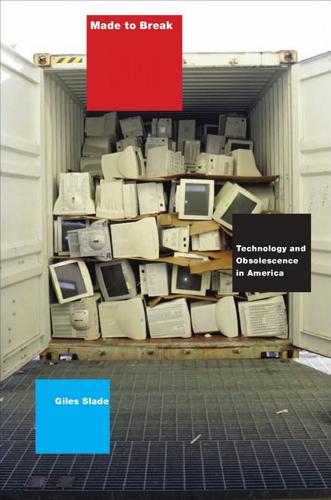
Made to Break: Technology and Obsolescence in America
by
Giles Slade
Published 14 Apr 2006
Since Alfred Sloan was not yet a household name, the New York Times described what was happening as “the fi ht for the national automobile championship between Henry Ford and General Motors.”23 When Ford’s new car was revealed on November 30 of that year, the American press swooped down on Dearborn, Michigan, to watch Charles Lindbergh, the nation’s most recent hero, demonstrate the Model A’s modern features. Publicity photographs of the event depict a youthful, clear-eyed Lindbergh sitting tall behind the wheel of the new Ford Tudor with an elegant older woman smiling graciously beside him. She is Gertrude Ederle, Queen of Romania.
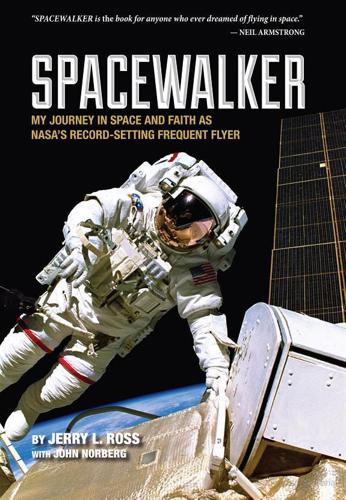
Spacewalker: My Journey in Space and Faith as NASA's Record-Setting Frequent Flyer
by
Jerry Lynn Ross
and
John Norberg
Published 31 Jan 2013
At school we all gathered around a little black-and-white TV to watch. We cheered him on as his rocket lifted off the launch pad. He went up and came down. It was all over in fifteen minutes. Al was born in 1923, just five years after the end of World War I. He was born only twenty years after the Wright brothers flew at Kitty Hawk and four years before Charles Lindbergh flew solo across the Atlantic Ocean. This man, who was born in the shadows of the first days of flight, became not only the first American in space, but also the fifth person to walk on the Moon. I would meet this space icon several times in my life, always in group settings. He spoke to our astronaut class, and I saw him at astronaut reunions.

Here Comes Everybody: The Power of Organizing Without Organizations
by
Clay Shirky
Published 28 Feb 2008
Weblogs won’t destroy the one-way mirror of fame, and “interactive TV” is an oxymoron, because gathering an audience at TV scale defeats anything more interactive than voting for someone on American Idol. The surprise held out by social tools like weblogs is that scale alone, even in a medium that allows for two-way connections, is enough to create and sustain the imbalance of fame. The mere technological possibility of reply isn’t enough to overcome the human limits on attention. Charles Lindbergh couldn’t bear to let anyone else answer his fan mail, promising himself he would get around to it eventually (which, of course, he never did). Egalitarianism is possible only in small social systems. Once a medium gets past a certain size, fame is a forced move. Early reports of the death of traditional media portrayed the Web as a kind of anti-TV—two-way where TV is one-way, interactive where TV is passive, and (implicitly) good where TV is bad.

The Second Machine Age: Work, Progress, and Prosperity in a Time of Brilliant Technologies
by
Erik Brynjolfsson
and
Andrew McAfee
Published 20 Jan 2014
A series of prizes totaling over one hundred thousand British pounds motivated major advances throughout the 1700s in the measurement of longitude. In 1919, the twenty-five-thousand-dollar Orteig Prize for a nonstop transatlantic flight motivated a series of aviation innovations, culminating in Charles Lindbergh’s successful flight in 1927. “Work saves a man from three great evils: boredom, vice, and need.” —Voltaire THE RECOMMENDATIONS WE MADE in the previous chapter will help boost the bounty and reduce or reverse the spread. But as we move deeper into the second machine age and the second half of the chessboard, will the Econ 101 playbook be enough to maintain healthy wage and job prospects?
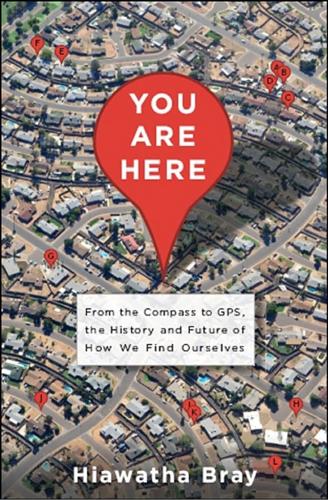
You Are Here: From the Compass to GPS, the History and Future of How We Find Ourselves
by
Hiawatha Bray
Published 31 Mar 2014
The incomplete GPS network provided only limited coverage, so the aircraft landed in Vermont, Newfoundland, Iceland, and the United Kingdom when the satellites passed out of range. As a result, the trip took four days. But when the Sabreliner jet parked at Le Bourget airport—the same field where Charles Lindbergh had set down after flying the Atlantic alone in 1927—its nosewheel rested within twenty feet of its intended parking space.19 It is notable that this first Atlantic crossing was made by a private jet. Even though GPS was a military program, it had always been intended for civilian use. “Contrary to some versions of GPS history, from the very beginning, GPS was configured to be a dual-use system,” wrote codevelopers Bradford Parkinson and Stephen Powers.20 Some lost sight of this fact in the aftermath of a Cold War tragedy.
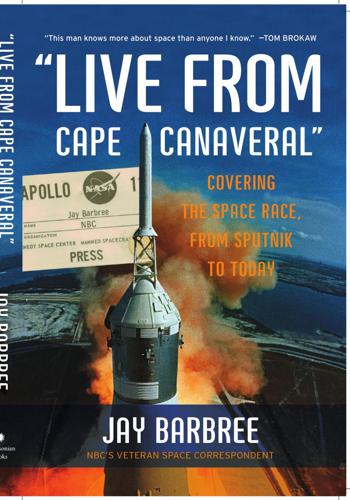
"Live From Cape Canaveral": Covering the Space Race, From Sputnik to Today
by
Jay Barbree
Published 18 Aug 2008
he muttered to himself, reaching for the switch to override his automatics and deploy the drogue chute early. He was at 55,000 feet and stabilization was important. From that point on, Friendship Seven had a perfect splashdown. The first American to orbit Earth dropped into the water near his recovery ship, Noa. John Glenn arrived in the nation’s capital a hero of Charles Lindbergh’s stature. He had lassoed the Russian lead, and the White House gave him a parade. A quarter of a million people braved heavy rain to watch the astronaut pass. He was then jetted off to New York City, where four million screaming, cheering people greeted him with a tumultuous ovation and a ticker-tape parade.
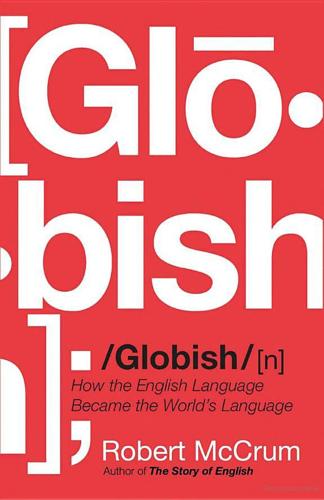
Globish: How the English Language Became the World's Language
by
Robert McCrum
Published 24 May 2010
These new Hollywood movie legends – men like John Wayne and Errol Flynn – would speak in American English, and inspire a new fascination with a language and a culture that, in the final decades of British imperialism, was sometimes as much a source of hostility as admiration. Fittingly, the great American superstar of this new interconnected world was the first man to fly the Atlantic single-handed, Charles Lindbergh. Now that the Atlantic could be shrunk to ever-shorter aeroplane journeys, Great Britain and the United States would move closer together in culture and language. This American century is the essential precursor to the Globish millennium. It was a two-stage process. First, there was the worldwide development of a common print culture, in which American language and cultural values became widely available.

QI: The Second Book of General Ignorance
by
Lloyd, John
and
Mitchinson, John
Published 7 Oct 2010
It wasn’t Steamboat Willie, released on 18 November 1928 – even though the Walt Disney Company still celebrates this date as Mickey’s official birthday. There were two Mickey Mouse cartoons made earlier that year. The first was Plane Crazy. In it, Mickey tries to emulate the American aviator Charles Lindbergh (1902–74) by building a plane. He spends much of his first flight trying to force a kiss on Minnie Mouse, eventually causing the plane to crash-land. The second, The Gallopin’ Gaucho, was a topical parody of The Gaucho (1927), starring matinée idol Douglas Fairbanks Junior (1909– 2000). The film was set in a bar in the Argentine pampas, where Mickey smokes, drinks, dances a tango and fights the evil outlaw Black Pete to win the affections of the saucy barmaid, Minnie.
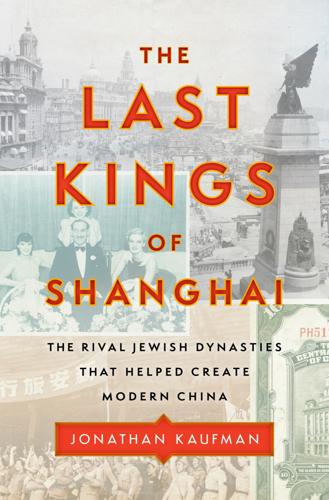
The Last Kings of Shanghai: The Rival Jewish Dynasties That Helped Create Modern China
by
Jonathan Kaufman
Published 14 Sep 2020
Unlike the parties at the stuffy Shanghai British Club and other British residences that were staid and predictable, those at Marble Hall burst with the energy of the Jazz Age that was sweeping the United States and Europe. The home linked Shanghai to London, but also to Paris and New York. The Kadoories hosted Charles Lindbergh at a party when he was flying around the world, then welcomed Katherine Stinson as the first woman to fly to Shanghai from England. A group of American pilots flying around the world landed one day at four in the afternoon. A film was made of the landing and shown in the ballroom of Marble Hall at nine the same night.
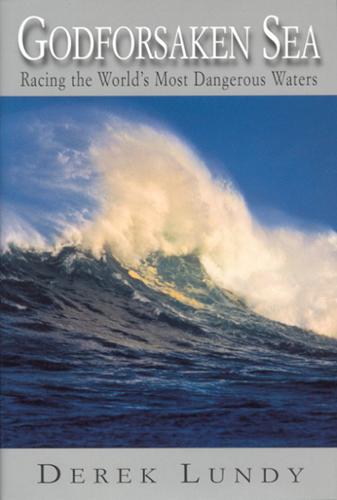
Godforsaken Sea
by
Derek Lundy
Published 15 Feb 1998
She would rejoin the race after her boat had been repaired, “not to win, but as a way of being faithful to my commitments. The Vendée Globe is a hard race. No one can say they’re sure of finishing. But for me, in my mind, the race will go on until I get back to Les Sables-d’Olonne.” IN MAY 1932, Amelia Earhart flew solo across the Atlantic Ocean, the first person to do so since Charles Lindbergh five years earlier and, needless to say, the first woman to make the flight alone. (She had been a passenger on a plane that made the crossing in 1928.) She took off from Harbour Grace, Newfoundland, in her red single-engine Lockheed Vega and flew into bad weather almost right away. For most of the fourteen-hour-long flight, she was socked-in, flying blind.

Falter: Has the Human Game Begun to Play Itself Out?
by
Bill McKibben
Published 15 Apr 2019
Using that plant as a rough yardstick, Solomon calculates that America needs 295 solar factories of a similar size to defeat climate change (roughly six per state), plus a similar effort for wind turbines. We’ve mobilized at this scale once before, and it was the last time we faced what seemed like an existential enemy. After the attack on Pearl Harbor, the world’s largest industrial plant under a single roof went up in six months, near Ypsilanti, Michigan; Charles Lindbergh called it the “Grand Canyon of the mechanized world.” Within months, it was churning out a B-24 Liberator bomber every hour. Bombers! Huge, complicated planes, endlessly more intricate than solar panels or turbine blades—each one 1,225,000 parts, with 313,237 rivets. Nearby, in Warren, Michigan, the U.S.
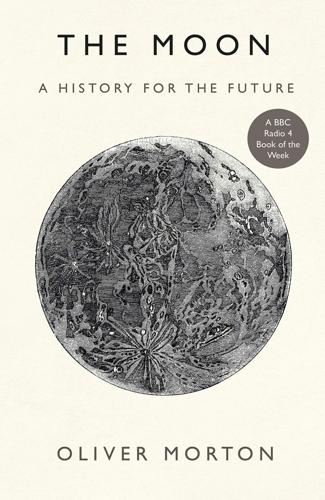
The Moon: A History for the Future
by
Oliver Morton
Published 1 May 2019
Oberth looked at me with the smile which old-fashioned pedagogues reserve for people whom they call “my dear young friend” and said after a while: “There will be need for rockets which carry a thousand pounds of dynamite.” And this was, indeed, the killer app. Goddard’s project was not obviously military; he attracted money from various sources, including the Smithsonian Institution and the Guggenheim family. Goddard was introduced to the Guggenheims by Charles Lindbergh, the aviator and fascist sympathiser who had become fascinated by talk of a rocket that could reach the Moon.1 But during the 1930s the armed forces were his biggest sponsor. At the same time, with the rise of the Nazi Party, the VfR saw many of its leading lights transfer themselves to the Wehrmacht.
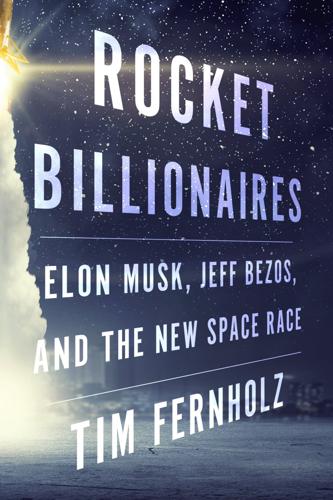
Rocket Billionaires: Elon Musk, Jeff Bezos, and the New Space Race
by
Tim Fernholz
Published 20 Mar 2018
At the time, there existed only one privately funded, flight-proven vehicle that could take humans up to space. It was called SpaceShipOne, and in 2004 it won the Ansari X Prize by flying a human out of the atmosphere twice in two weeks. The prize had been created in the spirit of the great aviation challenges of the 1930s. Just as Charles Lindbergh flew across the Atlantic, spurred by a big cash prize, before paying passengers existed, so, too, did the donors behind this prize hope to goose space commerce. To fund the prize, the prize’s organizer, Peter Diamandis, called on the Ansaris, a wealthy Iranian family that had fled to the United States during the revolution.
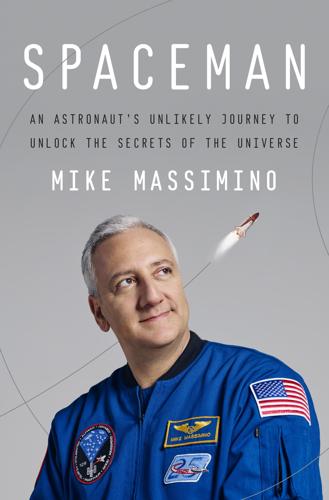
Spaceman: An Astronaut's Unlikely Journey to Unlock the Secrets of the Universe
by
Mike Massimino
Published 3 Oct 2016
Getting to space isn’t something you can do on your own, and I was on my own. I had lots of friends, but I didn’t have any space friends. I needed space friends. Out in Garden City, Long Island, not far from Franklin Square, they have the Cradle of Aviation Museum. It’s built on Roosevelt Field, where Charles Lindbergh took off for his flight across the Atlantic Ocean. The weekend after I talked to Jim, they were putting on a fair to celebrate space flight. My mom clipped an article from Newsday about it and saved it for me. I decided to go and see if I might meet anybody. One of the booths at the fair was for the Civil Air Patrol, the civilian auxiliary of the Air Force.

Fodor's Hawaii 2012
by
Fodor's Travel Publications
Published 15 Nov 2011
If you enjoy hiking, go up the stream on the 2-mi hike to Waimoku Falls. The trail crosses a spectacular gorge, then turns into a boardwalk that takes you through an amazing bamboo forest. You can pitch a tent in the grassy campground down by the sea. Grave of Charles Lindbergh. Many people travel the mile past ‘Ohe‘o Gulch to see the Grave of Charles Lindbergh. The world-renowned aviator chose to be buried here because he and his wife, writer Anne Morrow Lindbergh, spent a lot of time living in the area in a home they’d built. He was buried here in 1974, next to Palapala Ho‘omau Congregational Church. The simple one-room church sits on a bluff over the sea, with the small graveyard on the ocean side.
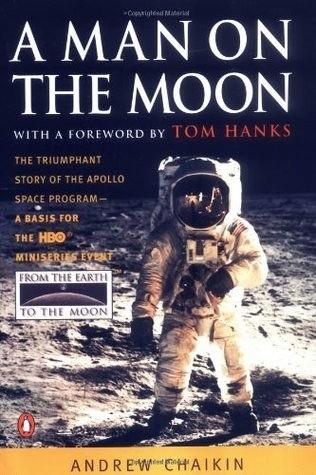
A Man on the Moon
by
Andrew Chaikin
Published 1 Jan 1994
But to the world, the only real astronauts were the Original 7. One of Conrad's first assignments was to accompany John Glenn on visits to Apollo contractors around the country. Glenn was likable enough, and Conrad could see that as the first American to orbit the earth he had risen to a hero status no pilot had attained since Charles Lindbergh. At every airport an excited crowd would quickly surround Glenn, asking for autographs, and Glenn would smile and put down his bag and oblige them. In order to keep moving, Conrad ended up carrying Glenn's bags as well as his own. A few weeks of this were enough to shatter any illusions Conrad may have had about his status as one of the nation's astronauts.
…
And above all, there were the daily sessions in the simulator; at times, Apollo 8 seemed to be an exercise in switches and valves and maneuvers, not the first flight away from the earth. But on December 20, the day before launch, Borman’s crew had a visitor who brought home the historic impact of what they were about to attempt. Charles Lindbergh, one of the most enigmatic figures of the twentieth century, emerged from his retreat to visit Borman, Lovell, and Anders in the crew quarters. Forty-one years after flying solo across the Atlantic, Lindbergh appeared tall, tanned, and surprisingly fit for his sixty-six years. Accompanied by his wife, Anne, herself an accomplished pilot and author, Lindbergh arrived to have lunch with three fellow fliers about to navigate an ocean far more vast and untraveled.

Higher: A Historic Race to the Sky and the Making of a City
by
Neal Bascomb
Published 2 Jan 2003
Scott Fitzgerald, the poster boy for the decade to come, gave words to what everyone felt: “A fresh picture of life in America began to form before my eyes—America was going on the greatest, gaudiest spree in history and there was going to be plenty to tell about it. The golden boom was in the air.” While Europe was forced to tend its wounds, America accelerated at a dizzying pace into the 1920s. The decade saw the first pilot to cross the Atlantic in a solo flight and declare in France, “I am Charles Lindbergh.” It saw the spread of mass production, mass marketing, and mass consumption. It brought us flappers, short skirts, the Harlem Renaissance, a woman’s right to vote, the martini, celebrity scandals, the cult of youth, talkies, mobsters, the great Babe Ruth, speakeasies, 104 words for “intoxicated,” Dorothy Parker’s Round Table, the fast-step, and lots of cigarettes and sex.
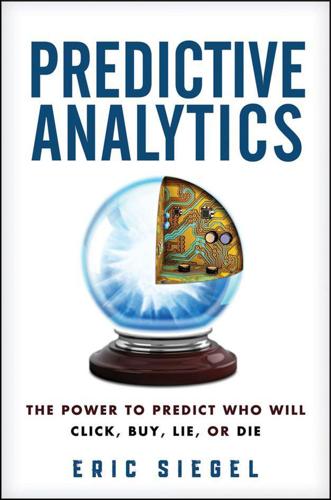
Predictive Analytics: The Power to Predict Who Will Click, Buy, Lie, or Die
by
Eric Siegel
Published 19 Feb 2013
broadcast pitted man against machine just as publicly, and with a renewed, healthy dose of bravado. A national audience of Jeopardy! viewers awaited on the horizon. As with all grand challenges, success was not a certainty. No precedent or principle had ensured it would be possible to fly across the Atlantic (Charles Lindbergh did so to win $25,000 in 1927); walk on the moon (NASA’s Apollo 11 brought people there in 1969, achieving the goal John F. Kennedy’s set for that decade); beat a chess grandmaster with a computer (IBM’s Deep Blue in 1997); or even improve Netflix’s movie recommendation system by 10 percent (2009, as detailed in the previous chapter).

Utopia Is Creepy: And Other Provocations
by
Nicholas Carr
Published 5 Sep 2016
To the novice mower, a scythe may feel like a foreign object in the hands; to the accomplished mower, hands and scythe become one thing. Talent tightens the bond between an instrument and its user. This feeling of physical and ethical entanglement doesn’t have to go away as technologies become more complex. In reporting on his historic solo flight across the Atlantic in 1927, Charles Lindbergh spoke of his plane and himself as if they were a single being: “We have made this flight across the ocean, not I or it.” The airplane was a complicated system encompassing many components, but to a skilled pilot it still had the intimate quality of a hand tool. The love that lays the swale in rows is also the love that parts the clouds for the stick-and-rudder man.
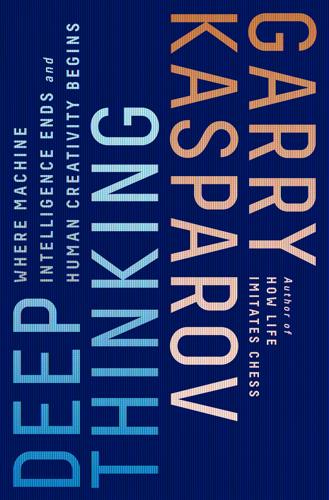
Deep Thinking: Where Machine Intelligence Ends and Human Creativity Begins
by
Garry Kasparov
Published 1 May 2017
I want to get all this out of the way because my attitude about losing inevitably comes up in any discussion of my match with the IBM supercomputer Deep Blue. To be more precise, my rematch with Deep Blue in 1997. I am resigned to the fact that almost no one remembers I beat Deep Blue in our first match in 1996. “This Day in History” calendars don’t have entries for all the failed attempts to fly across the Atlantic before Charles Lindbergh succeeded in 1927. When the 1996 match is remembered at all, it’s because my loss in game one was the first time a machine had beaten the world champion in a classical time control game. Prior to that, I had played quite a few games against machines at faster time controls and lost a number of them.
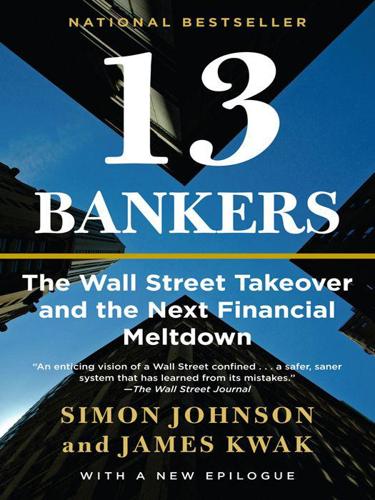
13 Bankers: The Wall Street Takeover and the Next Financial Meltdown
by
Simon Johnson
and
James Kwak
Published 29 Mar 2010
This fear was likely exaggerated, but there is no doubt that Wall Street banks played a critical role in creating the industrial trusts. In 1912, the House of Representatives, then controlled by the Democratic Party, commissioned an investigation of the “money trust” and its economic influence. (The investigation was proposed by Representative Charles Lindbergh Sr., who called the Aldrich plan a “wonderfully devised plan specifically fitted for Wall Street securing control of the world.”67) The Pujo Committee concluded that control of credit was concentrated in the hands of a small group of Wall Street bankers, who had used their central place in the financial system to amass considerable economic power.68 The committee report provided ammunition to Louis Brandeis, a prominent lawyer and future Supreme Court justice.
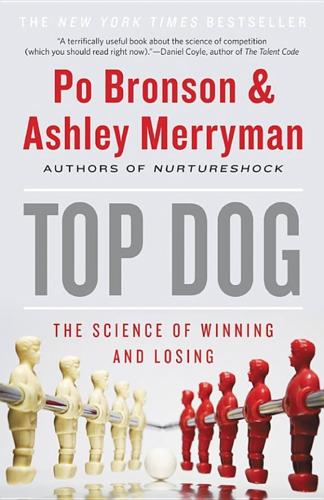
Top Dog: The Science of Winning and Losing
by
Po Bronson
and
Ashley Merryman
Published 19 Feb 2013
Chemical fire extinguishers are based on Ambrose Godfrey’s 1761 prize-winning entry for a contest to come up with ideas for putting out fires. Hyppolyte Mège-Mouriés’s margarine was the winning entry for Napoleon III’s competition for a butter-substitute that could be sent to the troops in the field. (Napoleon I’s contest to feed the troops was the catalyst for Nicholas Appert’s 1809 innovation in bottling food.) Charles Lindbergh’s 1927 transcontinental flight was for a contest sponsored by Raymond Orteig, a French hotel owner who hoped to spur the French tourism and hotel industries. In 2006, an Apple user started publicly asking for donations to sponsor a competition for software that would translate PC software for Macs.

Lonely Planet's Best of USA
by
Lonely Planet
Same-day tickets for a timed entrance are available at the kiosk (Map; 15th St, btwn Madison Dr NW & Jefferson Dr SW; hfrom 8:30am) by the monument. Arrive early. (www.nps.gov/wamo; 2 15th St NW; h9am-5pm, to 10pm Jun-Aug; gCirculator, mSmithsonian) F National Air & Space Museum Museum The Air and Space Museum is one of the most popular Smithsonian museums. Everyone flocks to see the Wright brothers’ flyer, Chuck Yeager’s Bell X-1, Charles Lindbergh’s Spirit of St Louis, Amelia Earhart’s natty red plane and the Apollo Lunar Module. (www.airandspace.si.edu; cnr 6th St & Independence Ave SW; h10am-5:30pm, to 7:30pm mid-Mar–early Sep; Wc; gCirculator, mL’Enfant Plaza) F National Gallery of Art Museum Map Google Map The staggering collection spans the Middle Ages to the present.
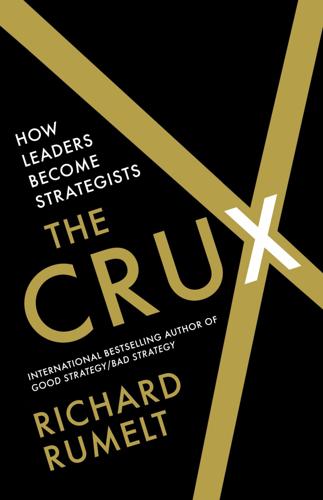
The Crux
by
Richard Rumelt
Published 27 Apr 2022
He was the first to fly an airplane on a takeoff from a naval ship (1910). During World War I, Curtiss supplied thousands of easy-to-fly “Jennys” and N-9 seaplanes to the military. Wright Aeronautical had been created by the Wright brothers and became an engine manufacturer. On its nonstop flight from New York to Paris, Charles Lindbergh’s Spirit of Saint Louis was powered by a Wright Whirlwind engine. Two years later, in 1929, Curtiss-Wright was formed as a merger of the Wright and Curtiss interests. Curtiss-Wright became a major manufacturer of aircraft engines and propellers during World War II and in the 1950s. The rise of jet engines in the 1960s almost eliminated that business, and Curtiss-Wright diversified into other aircraft components, nuclear control equipment, and components for the automobile and construction equipment industries.

Through the Glass Ceiling to the Stars: The Story of the First American Woman to Command a Space Mission
by
Eileen M. Collins
and
Jonathan H. Ward
Published 13 Sep 2021
As I grew older, I was captivated by any story of a faraway land or travel to unusual places. By eighth and ninth grade, I chanced upon the library’s aircraft section. The more I learned about planes, the more my curiosity kept me coming back. I couldn’t read enough about flying. I studied how airplanes fly. I read everything I could about civilian pilot explorers like Charles Lindbergh, Amelia Earhart, Jackie Cochran, and Nancy Love. I idolized the daring military aviators from the world wars. My mom sowed the seeds for my lifelong passion for flight just by taking me to the library. I attended summer camp for seven weeks annually from age seven to twelve. Camp was a lifesaver for me and my siblings—a safe place where we could just be ourselves.
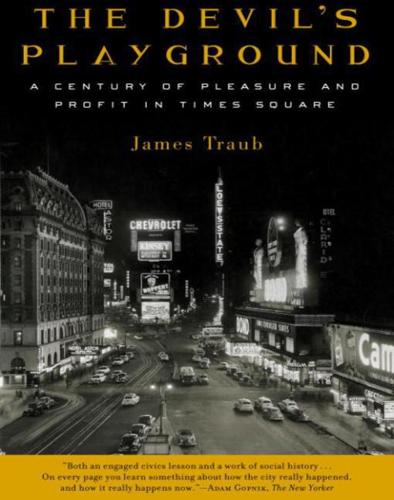
The Devil's Playground: A Century of Pleasure and Profit in Times Square
by
James Traub
Published 1 Jan 2004
Nineteen twenty-seven was an astonishing year. Broadway theaters staged an average of 225 shows a year during the decade; in 1927 the figure reached 264, a figure never equaled before or since. It was not only one of the greatest seasons in the history of Broadway, but the year of Babe Ruth’s sixty home runs and Charles Lindbergh’s successful transatlantic flight, a year of heroes and parades and headlines. The stock market was making everybody rich, elevator boys as well as bankers. “The uncertainties of 1920 were drowned out in a steady golden roar,” Fitzgerald later wrote. “The parties were bigger . . . the shows were broader, the buildings were higher, the morals were looser and the liquor was cheaper.”
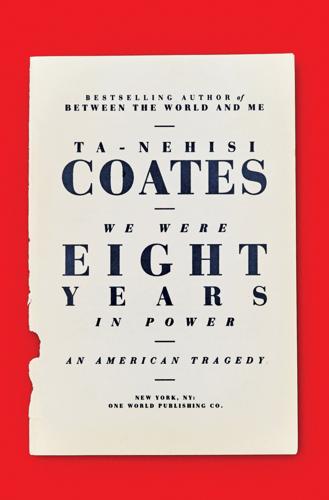
We Were Eight Years in Power: An American Tragedy
by
Ta-Nehisi Coates
Published 2 Oct 2017
A slight, energetic man with a gray mustache, he stepped into the car wearing a blue Obama/Biden hat, and we were off. For three hours, we followed the map of his memories across the South Side, down Cottage Grove, across Hyde Park Boulevard, down through Michelle’s old neighborhood of South Shore. Black was seven when he saw Charles Lindbergh parading down Grand Boulevard, later rechristened Martin Luther King Jr. Drive. He pointed out Joe Louis’s home, and black Chicago’s old commercial district, the Stroll, where he’d seen all the jazz acts. The South Side’s sheer mass and its shifting character astonished me. Bungalows would give way to mansions, mansions to burned-out lots, and at every gas station, panhandlers waited in search of change.
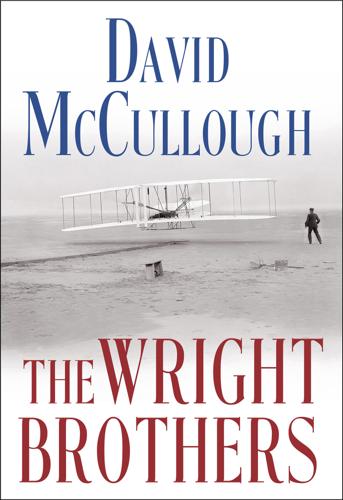
The Wright Brothers
by
David McCullough
Published 4 May 2015
Strangely, the story still draws attention, despite the fact that there is still no proof. Advances in aviation all the while had been accelerating faster than Orville or anyone of his generation had thought possible, and starting with World War I to a form of weaponry like nothing before in human experience. In 1927 young Charles Lindbergh flew the Atlantic to land in Paris, a feat once thought impossible by the Wrights. On his return to America, Lindbergh made a point of coming to Dayton to pay his respects to Orville at Hawthorn Hill, an event that caused excitement in Dayton of a kind not seen since the brothers had made their celebrated return from Europe eighteen years before.

The Ultimate Engineer: The Remarkable Life of NASA's Visionary Leader George M. Low
by
Richard Jurek
Published 2 Dec 2019
At a dinner for the American Institute of Aeronautics and Astronautics in June 1973, his keynote speech focused on the key economic benefits of space exploration. “When the Wright brothers first flew in 1903, many people asked, ‘Why?’” he told the crowd. “They said the same thing again when Charles Lindbergh flew nonstop across the Atlantic in 1927. People now ask about the moon landings in the same, skeptical tone, ‘Why?’” He named some of the recent practical applications in science and medicine that were currently providing major benefits, before he centered on the field of communications. “Breakthroughs are already being made.

The Future Is Faster Than You Think: How Converging Technologies Are Transforming Business, Industries, and Our Lives
by
Peter H. Diamandis
and
Steven Kotler
Published 28 Jan 2020
I dedicate this book to all who have mentored and coached me during my life: Harry P. Diamandis, Tula Diamandis, Frank Price, David C. Webb, Paul E. Gray, David E. Wine, Gregg E. Maryniak, Ayn Rand, Art Dula, Robert Heinlein, Byron K. Lichtenberg, Sylvia Earle, Gerard K. O’Neill, Arthur C. Clarke, John T. Chirban, Laurence R. Young, Martine Rothblatt, Charles Lindbergh, Tom Velez, Stuart O. Witt, S. Pete Worden, Robert K. Weiss, Alfred H. Kerth, Burt Rutan, Anousheh Ansari, Tony Robbins, Ray Kurzweil, and Dan Sullivan. —Peter This one is for the late Joe Lefler and the crew from Pandora’s Box. Thanks for so much magic. Thanks for believing in me long before anyone else did.
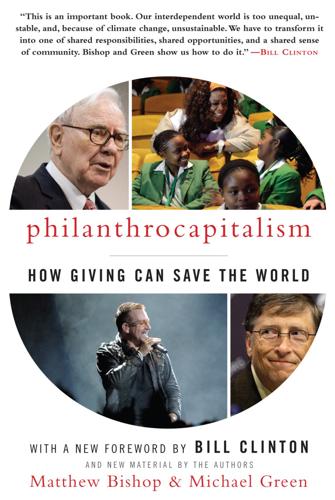
Philanthrocapitalism
by
Matthew Bishop
,
Michael Green
and
Bill Clinton
Published 29 Sep 2008
The race to win a £20,000 prize offered by the British Parliament in the eighteenth century for a solution to how to measure longitude, and the struggle of clockmaker John Harrison to convince the government-appointed panel that he had won, is described in Dava Sobel’s 1995 bestseller, Longitude. Charles Lindbergh flew the Atlantic in 1927 to win a $25,000 prize offered by Raymond Orteig, a hotelier. Now they are back in fashion. The breakthrough moment came when SpaceShipOne won the $10 million X Prize, created by Peter Diamandis, for the first privately funded space flight. In October 2006, the X Prize Foundation launched its second prize, for genomics: $10 million to the first inventor able to sequence a hundred human genomes in ten days.
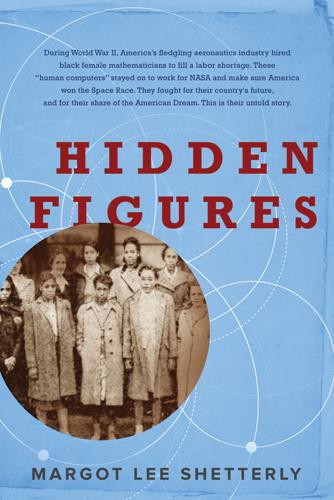
Hidden Figures
by
Margot Lee Shetterly
Published 11 Aug 2016
But even if they wanted to share the particulars of the day’s toil, finding someone outside of Langley who understood what they were talking about would have been well nigh impossible. In the twenty-four years since the Langley laboratory had started operation, the glitterati of the aeronautical world had made pilgrimages to Hampton. Orville Wright and Charles Lindbergh served on the NACA’s executive committee. Amelia Earhart nearly lost her raccoon coat to a wind tunnel’s giant turbine while touring the lab. Tycoon Howard Hughes made an appearance at the lab’s 1934 research conference, and Hollywood showed up at the airfield to shoot the 1938 movie Test Pilot, starring Clark Gable, Spencer Tracey, and Myrna Loy.
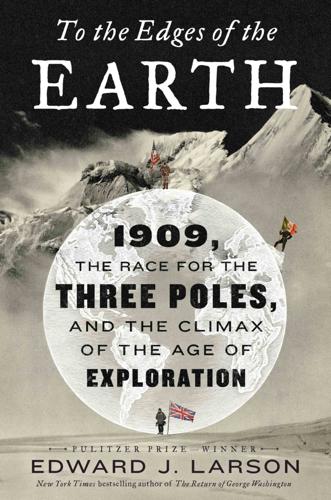
To the Edges of the Earth: 1909, the Race for the Three Poles, and the Climax of the Age of Exploration
by
Edward J. Larson
Published 13 Mar 2018
Aviation, of course, offered a place for heroics before 1909, but it literally took off with improvements in aircraft during and after World War I. Amundsen quickly adopted it as a means for Arctic exploration, ending in his death during a rescue flight in 1928. The American Richard Byrd became a national hero for his pioneering flights toward the North and South Poles during the late 1920s, while Charles Lindbergh attained the status of a living legend for completing the first solo flight across the Atlantic Ocean on May 21, 1927. With the refinement of jet and rocket engines following World War II, test pilots like Chuck Yeager set altitude and speed records beginning in the late 1940s, while Soviet cosmonaut Yuri Gagarin and American astronaut John Glenn gained worldwide acclaim for orbiting the earth during the early 1960s.
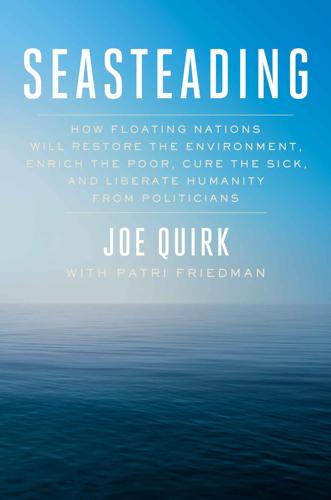
Seasteading: How Floating Nations Will Restore the Environment, Enrich the Poor, Cure the Sick, and Liberate Humanity From Politicians
by
Joe Quirk
and
Patri Friedman
Published 21 Mar 2017
We can blame the Great Depression of the 1930s. In 1915 engineer and inventor Edward Robert Armstrong designed “seadromes,” floating airports anchored to the ocean floor that would allow planes to refuel for transatlantic flights. After more than a decade of tests, Armstrong built a working scale model close to shore in 1926. When Charles Lindbergh completed the first transatlantic flight a year later, flying from Long Island to Paris in the Spirit of St. Louis, newspapers featured Armstrong’s vision, and investors backed his plan. The Depression postponed Armstrong’s ambitions until World War II, when aircraft carriers rendered his concept obsolete.

Time of the Magicians: Wittgenstein, Benjamin, Cassirer, Heidegger, and the Decade That Reinvented Philosophy
by
Wolfram Eilenberger
Published 14 Sep 2020
The automobile, now mass-produced, began to determine the shape of cities; radio became a global medium of communication in the public sphere, the telephone in the private; cinema became an art form; the first commercial airlines were launched; now not only steamships but soon also zeppelins and even airplanes crossed the oceans, with Charles Lindbergh paving the way. The twenties witnessed the birth of an age of global communication facilitated by and in turn facilitating leaps in technical innovation. It persists into our own time. No individual and no individual discipline could keep interpretative pace. Not even philosophy. Precisely in the German-speaking world it saw itself as being propelled forward by progress; it wanted at best to act as its critical brake, not its driving engine.
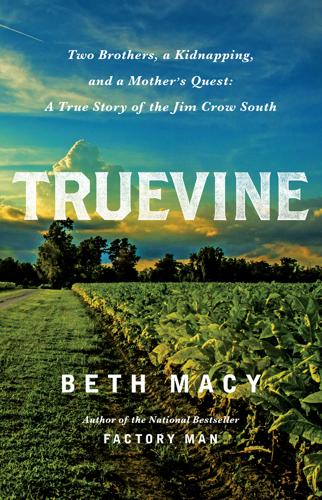
Truevine: Two Brothers, a Kidnapping, and a Mother's Quest: A True Story of the Jim Crow South
by
Beth Macy
Published 17 Oct 2016
“It came to her as she was sleeping,” Dot told me in a 2001 interview. “She saw it all in a dream: ‘Go to the circus.’” The New York Yankees had just won the World Series, slaughtering Pittsburgh in four straight games. Babe Ruth had just come off his record-setting season of sixty homers, and Lou Gehrig had led the charge. Aviator Charles Lindbergh was touring the nation in the Spirit of St. Louis, the single-seat monoplane he’d flown from New York to Paris a few months before. The first nonstop transatlantic flight, his feat was another in a long string of firsts for Americans in the 1920s. From modernized plumbing and electricity to movie theaters, cosmetics, bobbed haircuts, and radio—so much about the Roaring Twenties was brand-new.
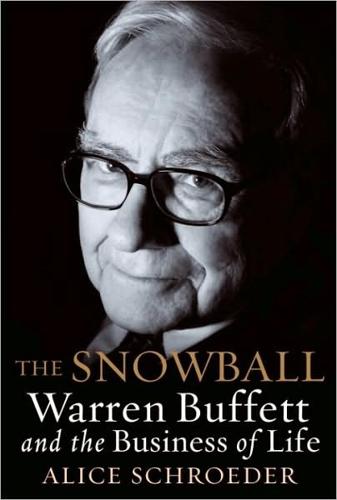
The Snowball: Warren Buffett and the Business of Life
by
Alice Schroeder
Published 1 Sep 2008
In the firm’s first month of operation, as financial panic spread around the world, he produced $400 of commissions and the firm was profitable.14 Through the ensuing months, even as people’s savings evaporated and faith in banks disappeared, Howard stuck to the same kind of conservative investments that had gotten him started, steadily adding customers and growing his business.15 The family’s fortunes had turned around. Then, shortly before Warren’s second birthday, twenty-month-old Charles Lindbergh Jr. was kidnapped and murdered in March 1932. The snatching of the “Lone Eagle’s” baby was “the biggest story since the Resurrection,” according to pundit H. L. Mencken. The country flew into a kidnapping paranoia in which parents conveyed their terror of abduction to their children, the Buffetts being no exception.16 Around then, Howard suffered some kind of attack serious enough for Leila to call an ambulance.
…
, which captured the spirit of the times in its name, was now valued at $115 billion. As 1999 spun to a close, there was no doubt who was important and influential at the turn of the millennium, and even less doubt who was not. Time magazine crowned Amazon.com’s Jeff Bezos as its person of the year, comparing him in importance to Queen Elizabeth, Charles Lindbergh, and Martin Luther King Jr. Buffett’s personal ranking had dropped on the annual taking-stock lists, which multiplied a thousandfold that year with the millennial summings-up and retrospectives. He had just fallen from being the second-richest to the fourth-richest man in the world. Technophiles reveled in pointing out the great investor’s feet of clay, saying that “if Buffett headed a mutual fund, he’d be looking at a second career.”38 Barron’s, a weekly must-read on Wall Street, put him on its cover with the accompanying headline “Warren, What’s Wrong?”
…
Although its return on revenues was low, the firm by then was consistently profitable and would remain so, with the exception of a couple of months. 15. By the end of 1932, Howard Buffett was averaging 40–50% more in commissions than in 1931, based on financial statements of Buffett, Sklenicka & Co. 16. Charles Lindbergh Jr., “The Little Eaglet,” was kidnapped on March 1, 1932. His body was found on May 12, 1932. Many parents in the 1920s and 1930s were preoccupied with kidnapping, a fear that actually began with the Leopold and Loeb case in 1924 but peaked with the Lindbergh baby. An Omaha country-club groundskeeper claimed he was kidnapped and robbed of $7.
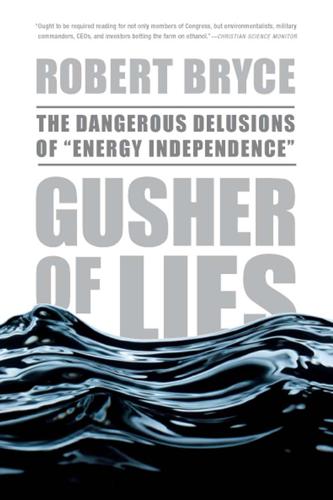
Gusher of Lies: The Dangerous Delusions of Energy Independence
by
Robert Bryce
Published 16 Mar 2011
Department of Energy or, better yet, a consortium of private foundations. There is plenty of precedent for using prize money to drive innovation. In 1919, a hotelier named Raymond Orteig offered $25,000 to the 278 GUSHER OF LIES first pilot who could fly nonstop between New York and Paris. Eight years later, a previously unknown American named Charles Lindbergh collected that prize.67 More recently, aviation whiz Burt Rutan, backed by billionaire Paul Allen, collected the $10-million Ansari X Prize, which was offered to the first privately built vehicle that could fly to the edge of space, return to earth, and repeat the feat within two weeks. In 2004, their creation, SpaceShipOne, made two trips into low-earth orbit, and Rutan and Allen claimed the $10-million prize.
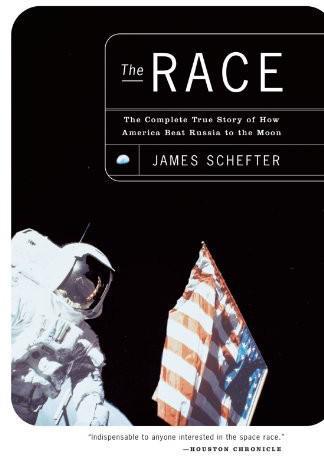
The Race: The Complete True Story of How America Beat Russia to the Moon
by
James Schefter
Published 2 Jan 2000
Langley Field was home to an airport, a small squadron of Army airplanes, and a collection of buildings, most of them wood- or metal-sided, that housed a research organization called the National Advisory Committee on Aeronautics (NACA). The committee itself was a pantheon of aviation legends. Orville Wright was still active. The youngest committee member was Charles Lindbergh. Others included Joe Ames, Harry Guggenheim, and Gus Robins, all pioneers in flight. Bob Gilruth had a job waiting at NACA. He arrived with impressive credentials for a fellow reporting to his first real job. At Minnesota, he’d been a graduate assistant under Dr. Jean Piccard, the famed balloonist, and Piccard’s equally famous and possibly smarter wife, Dr.
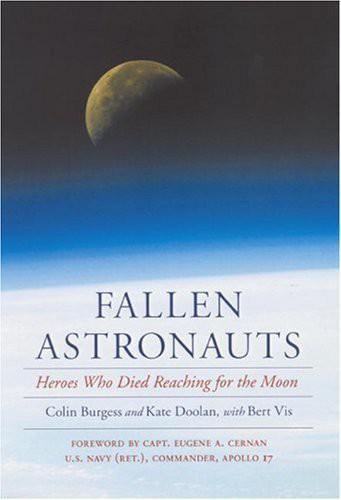
Fallen Astronauts: Heroes Who Died Reaching for the Moon
by
Colin Burgess
and
Kate Doolan
Published 14 Apr 2003
After half a day of ground school and another half day's flying, the instructor asked Hall and Dellorto if they would like to attend a meeting that night of the Quiet Birdmen, to be held in the Skylane Motel in Pearland. Each year these aviation enthusiasts, pilots, and other special guests would gather to salute fallen comrades and discuss their part in the world of aviation. Hall was familiar with the Birdmen and had always wanted to join the organization, founded by Charles Lindbergh many years before. Each local area chapter of the Quiet Birdmen held a monthly meeting, and prospective members had to be invited to, and attend, twelve meetings before consideration could be given for full membership. Hall had been to one other meeting, which he had enjoyed a great deal, so he jumped at the opportunity to attend another.

Beggars in Spain
by
Nancy Kress
Published 23 Nov 2004
We have, as a people, tended to label these things “cold.” We have, as a people, tended to admire feeling and action. We exalt in our stories and our memorials—not the creation of the Constitution but its defense at Iwo Jima; not the intellectual achievements of a Linus Pauling but the heroic passion of a Charles Lindbergh; not the inventors of the mono-rails and computers that unite us but the composers of the angry songs of rebellion that divide us. A peculiar aspect of this phenomenon is that it grows stronger in times of prosperity. The better off our citizenry, the greater their contempt for the calm reasoning that got them there, and the more passionate their indulgence in emotion.
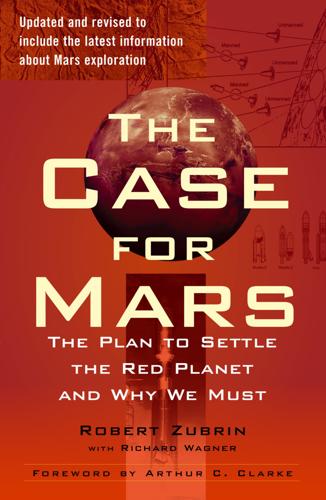
Case for Mars
by
Robert Zubrin
Published 27 Jun 2011
The tactic not only guarantees economic results, but it also promotes quick results and smart results. When people have their own money at stake, it’s a lot easier to find and settle on practical, no-nonsense solutions to engineering problems than is ever the case in the complex and endless deliberations of a government bureaucracy. Readers may recall that when Charles Lindbergh flew the Atlantic, he did not do it as part of a government-funded program, but in pursuit of a privately posted prize. There were many such prizes offered for breakthrough technical accomplishments in aviation’s early years, and collectively they played a major role in raising the art of flight from its infancy to a globe-spanning transportation network.
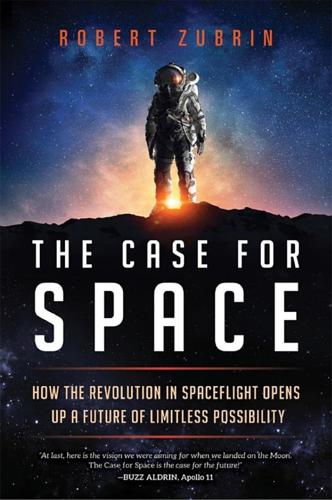
The Case for Space: How the Revolution in Spaceflight Opens Up a Future of Limitless Possibility
by
Robert Zubrin
Published 30 Apr 2019
Later, working with others, he created the International Space University, a notable institution with a substantial endowment that now has a campus in Strasbourg, France. In the 1990s, he decided to take on the central challenge of opening the space frontier—the creation of reusable space launch systems. After reading a biography of Charles Lindbergh, Diamandis had been impressed by the fact that Lindbergh had flown the Atlantic—and eight others had been motivated to try—for the possibility of winning a prize. Furthermore, the estimated $400,000 (in 1920s money) collectively spent to win the Orteig Prize was much greater than the $25,000 prize fund itself.
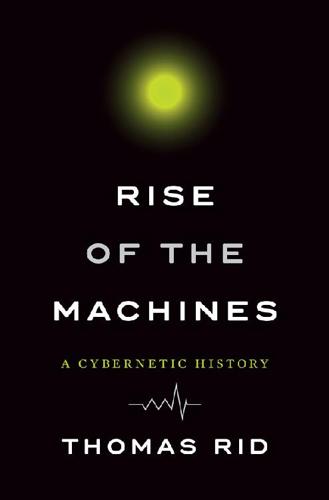
Rise of the Machines: A Cybernetic History
by
Thomas Rid
Published 27 Jun 2016
In 1936, the US Army General Staff had cut half of its research-and-development budget, believing that America’s weaponry was adequate and that the money would be better spent on maintenance, repair, and more ordnance.7 After making inquiries, Bush was dismayed to find a military leadership clueless about how science could be useful in war—and scientists clueless about what the military might need in the event of war. Bush’s service on the National Advisory Committee for Aeronautics (NACA), the organization that preceded NASA, gave him unique insights into cutting-edge aeronautical developments: in 1938, he heard a fellow member, Charles Lindbergh, give a talk after his return from a privileged tour of German munitions and aircraft factories. Lindbergh was impressed by the mighty German war machine, especially by the displays of the seemingly invincible Luftwaffe. And few people understood the power of the flying machines as well as Lindbergh did.
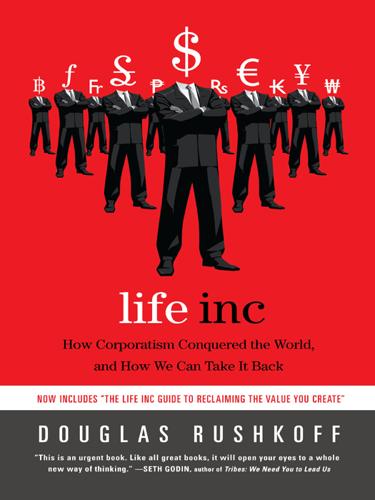
Life Inc.: How the World Became a Corporation and How to Take It Back
by
Douglas Rushkoff
Published 1 Jun 2009
Lippincott & Co., 1865), 476. 13 “The defendant corporations are persons” Thom Hartmann, Unequal Protection: The Rise of Corporate Dominance and the Theft of Human Rights (New York: Rodale Books, 2002), 105. 15 The anti-Semitic diatribes Ford published Adolf Hitler, Mein Kampf translated by Ralph Manheim (Boston: Houghton Mifflin Company, 1939), 639, and Steven Watts, The People’s Tycoon: Henry Ford and the American 15 (New York: Knopf, 2005). 15 American corporations from General Electric Graeme Howard, America and the New World Order (New York: Charles Scribner’s Sons, 1940), and Max Wallace, The American Axis: Henry Ford, Charles Lindbergh, and the Rise of the Third Reich (New York: St. Martin’s Press, 2003). 16 Although he had run for reelection Edward L. Bernays, “The Marketing of National Policies: A Study of War Propaganda,” Journal of Marketing, Vol. 6, No. 3 (1942). 16 Instead of letting them rule themselves Edward L. Bernays, Crystallizing Public Opinion (New York: Kessinger Publishing, 2004), 19. 16 Consumers are easier to please Edward L.
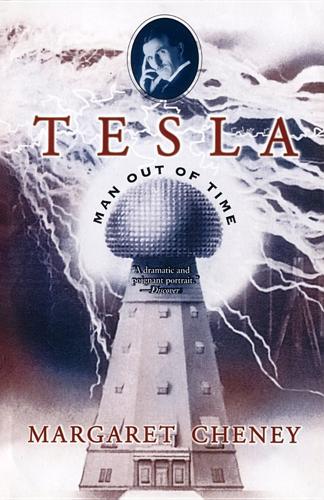
Tesla: Man Out of Time
by
Margaret Cheney
Published 1 Jan 1981
It came as something of an anticlimax, therefore, when Admiral Cervera, who was himself on the launch, took the Americans to a Spanish fortress where he treated them with great courtesy and soon exchanged them for Spanish prisoners. When this feat of derring-do hit American newspapers, they carried little else for days. Hobson was lionized almost to the same degree that Charles Lindbergh would be much later, after flying the Atlantic. Tesla was filled with pride for his friend and delighted when Hobson was sent home for a round of public appearances across the country to rally greater enthusiasm for the war. Tesla and Johnson took the young officer to Delmonico’s for a promised celebration and referred to him frequently as “the hero.”
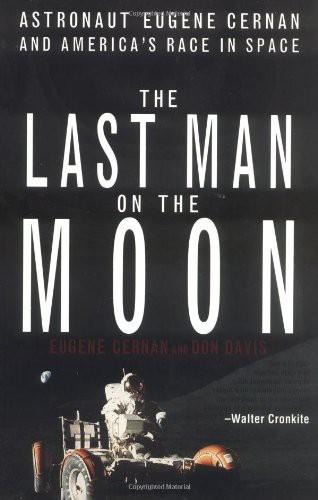
The Last Man on the Moon: Astronaut Eugene Cernan and America's Race in Space
by
Eugene Cernan
and
Donald A. Davis
Published 1 Jan 1998
Other babies, however, did make the news that year. In May, five famous little girls, the Dionne quintuplets, filled a little farm house in Callender, Ontario, Canada. A few months later, an immigrant carpenter named Bruno Richard Haupt-mann was arrested for kidnapping and murdering the infant child of aviation pioneer Charles Lindbergh. And I certainly wasn’t the biggest event that summer in my hometown, since my birth certificate didn’t state that the last man who would walk on the Moon had just been born. No, the headlines went to gangster John Dillinger, who was betrayed by the Woman in Red and shot by g-men as he left a downtown movie theater.

The Wizard of Menlo Park: How Thomas Alva Edison Invented the Modern World
by
Randall E. Stross
Published 13 Mar 2007
Each of the forty-eight states and the District of Columbia were to name a top scholarship designate, and these finalists would answer a questionnaire addressing moral fitness as well as general knowledge, with questions composed not just by Edison, but also by the other judges, who included Henry Ford and Charles Lindbergh. This elaborate nationwide selection apparatus would lead to the selection of a single winner who would receive a four-year scholarship to the Massachusetts Institute of Technology. In his business and research projects, Edison became more timid as he became older. While in his thirties, he had had the energy to tackle a problem that had seemed to many to be insoluble: the “subdivision” of the electric light that would make indoor use technically and economically feasible.
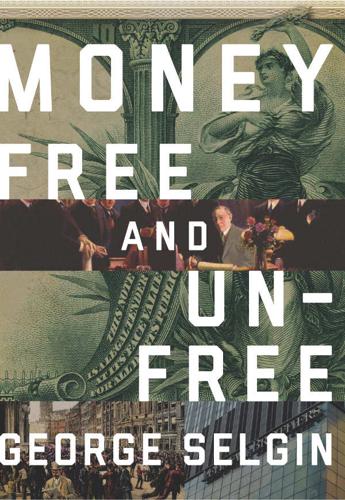
Money Free and Unfree
by
George A. Selgin
Published 14 Jun 2017
Robert La Follette (R-WI), who detected excessive Wall Street influence. As the November election approached, even Taft himself gave the plan the cold shoulder. Nor did the Jekyll Island gathering’s cloak of secrecy prevent many from concluding that Aldrich’s plan was, in fact, a Wall Street concoction. A month before it was finally submitted to Congress, Charles Lindbergh Sr. assailed the plan as a scheme to preserve, and even enhance, the “Money Trust’s” share of the nation’s bank reserves, by requiring state as well as national banks subscribing to the proposed National Reserve Association to conform to the National Bank Act’s reserve requirements (U.S. Congress 1911: 46–47).

Predator: The Secret Origins of the Drone Revolution
by
Richard Whittle
Published 15 Sep 2014
First staged in the city’s magnificent Grand Palais des Beaux-Arts as L’Exposition Internationale de la Locomotion Aérienne, since 1953 the renamed Salon International de l’Aéronautique et de l’Espace has been held four miles north of Paris, at Le Bourget, the city’s first airport, where on May 21, 1927, ecstatic crowds swarmed the Spirit of St. Louis as exhausted American pilot Charles Lindbergh completed the first nonstop transatlantic flight. Now held only in odd-numbered years, the Paris Air Show, as it’s commonly known, attracts aircraft manufacturers, aviation vendors, airline executives, military officers, political leaders, media representatives, and passionate fans of flying from around the globe.
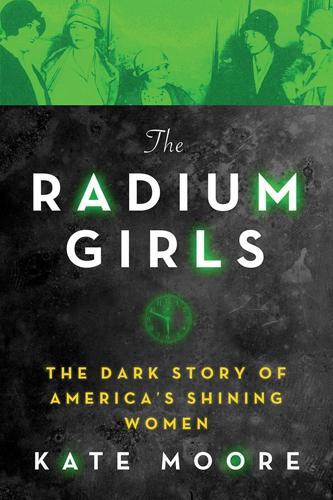
The Radium Girls
by
Moore, Kate
Published 17 Apr 2017
At the turn of the year, Katherine was still in hospital, though her tumor was shrinking thanks to Humphries’s attentions; it currently measured 45 centimeters. Come February, she was still unable to do much in the way of walking, but it seemed she had beaten the worst of it. The spring of 1931 found Grace Fryer in good spirits too—partly because she had made a new friend at her hospital appointments. By chance, the famous aviator Charles Lindbergh was working on the floor above, and once in a while he would visit her. “My impression,” said Grace’s brother Art, who drove her to her appointments, “was that these occasional visits made her feel many times better, even if it was only for a short while. Seeing Grace’s spirits higher was perhaps one of the greatest feelings I’ve ever had.”10 Grace was still determined to be as positive as she could.
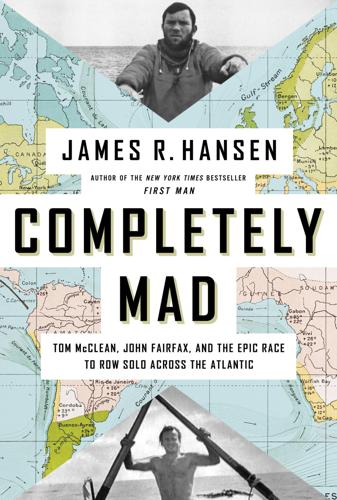
Completely Mad: Tom McClean, John Fairfax, and the Epic of the Race to Row Solo Across the Atlantic
by
James R. Hansen
Published 4 Jul 2023
McClean’s achievement stands on the line below.I To the victor go the spoils, as the saying goes. The problem for Fairfax—and more so for second-place finisher McClean—was that there really were no rich spoils. There was no prize or reward for being the first across alone in a rowboat like there had been for aviator Charles Lindbergh (the $25,000 Orteig Prize, equivalent to $375,000 in 2020 dollars) when he became the first to fly the Atlantic nonstop. Besides the congratulatory telegram that John received from the Apollo 11 astronauts and a flurry of tabloid items mostly in British and Florida papers, news of Fairfax’s achievement was largely subsumed by the comprehensive coverage given to the first Moon landing, a globally momentous event that occurred barely 24 hours after John came ashore on Hollywood Beach.
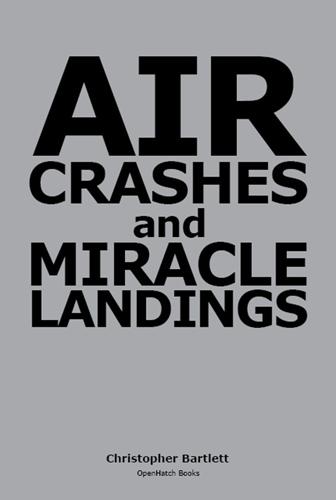
Air Crashes and Miracle Landings: 60 Narratives
by
Christopher Bartlett
Published 11 Apr 2010
Finally, she could not be sure the Electra could withstand another takeoff at 1.5 times its normal maximum takeoff weight. On her other flights towards large landmasses, having ample reserves of fuel was not so critical—for instance on her trans-Atlantic solo flight she was said to have been hoping to emulate Charles Lindbergh’s 1927 historic flight from New York's Long Island to Le Bourget Field in Paris, and yet ended up in Ireland, both large landmasses. Her, some might say, forgotten navigator, the recently married Noonan, must also have had considerable courage to embark on the venture. What were he and Earhart arguing about on Lae?

Moon Mexico City: Neighborhood Walks, Food & Culture, Beloved Local Spots
by
Julie Meade
Published 7 Aug 2023
A light-rail track connects the terminals in case you end up on the incorrect side of the airport, though they are fairly distant; before leaving for the airport, check with your carrier to see which terminal your airline operates from. Ecotaxi in Mexico City Though it rarely gets much attention, inside the “Sala B” in Terminal 1, there is a mural by Mexican artist Juan O’Gorman illustrating the history of flight, from a Mexica nobleman eyeing the wings of a bat with curiosity to the Wright brothers and Charles Lindbergh. AEROPUERTO INTERNACIONAL FELIPE ÁNGELES (AIFA) In 2022, President Andrés Manuel López Obrador inaugurated a new airport 20 kilometers from the city center in the community of Santa Lucía in the state of Mexico, with the intent to reduce the congestion at AICM, which has long been running at maximum capacity.
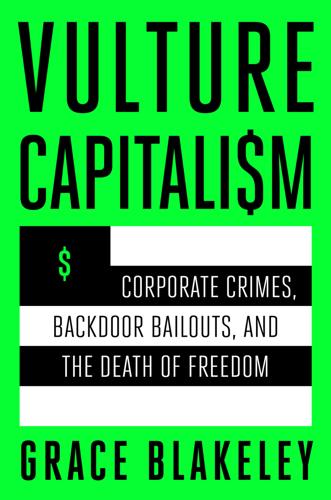
Vulture Capitalism: Corporate Crimes, Backdoor Bailouts, and the Death of Freedom
by
Grace Blakeley
Published 11 Mar 2024
Frederic Jameson, Postmodernism, or The Cultural Logic of Late Capitalism (London: Verso, 1982). 77. Hudson and Oncu, Absentee Ownership and Its Discontents. 78. Ferreras, Firms as Political Entities. CHAPTER 2: THE UNITED STATES OF FORDLâNDIA 1. Antonio Gramsci, Prison Notebooks (New York: Columbia University Press, 2011). 2. Max Wallace, The American Axis: Henry Ford, Charles Lindbergh, and the Rise of the Third Reich (New York: St. Martin’s Press, 2003). 3. Ken Silverstein, “Ford and the Führer,” The Nation, January 6, 2000, https://www.thenation.com/article/archive/ford-and-fuhrer/. 4. Wallace, The American Axis. 5. Gramsci, Prison Notebooks. 6. Joseph A. Buttigieg, “Introduction,” in Gramsci, Prison Notebooks. 7.

USA Travel Guide
by
Lonely, Planet
All museums are open daily (except Christmas Day) 10am to 5:30pm unless noted. Some have extended hours in summer. Be prepared for lines and bag checks. National Air & Space Museum MUSEUM (cnr 6th St & Independence Ave SW) The Air & Space Museum is the most popular Smithsonian museum; everyone flocks to see the Wright brothers’ flyer, Chuck Yeager’s Bell X-1, Charles Lindbergh’s Spirit of St Louis and the Apollo 11 command module. An IMAX theater, planetarium and ride simulator are all here (adult/child $9/7.50 each). More avionic pieces reside in Virginia at the Steven F Udvar-Hazy Center (Click here), an annex to hold this museum’s leftovers. National Museum of Natural History MUSEUM (cnr 10th St & Constitution Ave SW) A favorite of the kids, the Museum of Natural History showcases dinosaur skeletons, an archae- ology/anthropology collection, wonders from the ocean, and unusual gems and minerals, including the 45-carat Hope Diamond.
…
History Fur-trapper Pierre Laclede knew prime real estate when he saw it, so he put down stakes at the junction of the Mississippi and Missouri Rivers in 1764. The hustle picked up considerably when prospectors discovered gold in California in 1848 and St Louis became the jump-off point (aka ‘Gateway to the West’) for get-rich-quick dreamers. St Louis became known as a center of innovation after hosting the 1904 World’s Fair. Aviator Charles Lindbergh furthered the reputation in 1927 when he flew the first nonstop, solo transatlantic flight in the ‘Spirit of St Louis,’ named for the far-sighted town that funded the aircraft. Grand plans have always been part of the city’s self-assurance and you’ll find no chips on local shoulders. Sights & Activities The landmark Gateway Arch rises right along the Mississippi River.
…
The Visitor and Education Center (www.forestparkforever.org; 5595 Grand Dr; 8:30am-7pm Mon-Fri, 9am-4pm Sat & Sun) is in an old streetcar pavilion and has a cafe. Free walking tours leave from here, or you can borrow an iPod audio tour. Missouri History Museum (www.mohistory.org; 5700 Lindell Blvd; 10am-6pm, to 8pm Tue) Presents the story of St Louis, starring such worthies as the World’s Fair, Charles Lindbergh (look for the sales receipt for his first plane – he bought it at a variety store!) and a host of bluesmen. Oral histories from those who fought segregation are moving. St Louis Art Museum (www.slam.org; 1 Fine Arts Dr; 10am-5pm Tue-Sun, to 9pm Fri) A grand beaux-arts palace originally built for the World’s Fair.
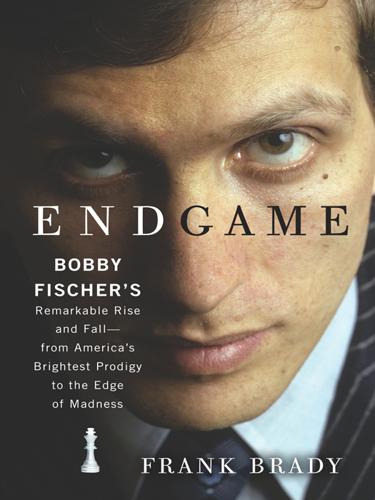
Endgame: Bobby Fischer's Remarkable Rise and Fall - From America's Brightest Prodigy to the Edge of Madness
by
Frank Brady
Published 1 Feb 2011
Bobby’s retinue included his bodyguard Saemi Palsson and Palsson’s wife, as well as Quinteros. “It’s great to be back in America” was Fischer’s only comment to the waiting reporters. The mayor had offered Bobby a ticker-tape parade down the “Canyon of Heroes” on Broadway in lower Manhattan, a rare honor given in the past to such luminaries as Charles Lindbergh, Franklin D. Roosevelt, and the Apollo astronauts, but Bobby wasn’t much excited by the idea. Friends and advisors reminded him that if he accepted, he’d be the only chess player ever to have a ticker-tape parade, and probably there’d never be another chess player receiving the distinction. He was unmoved: “No, I don’t want it,” he decided.
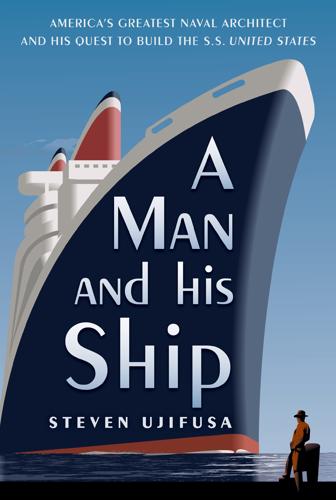
A Man and His Ship: America's Greatest Naval Architect and His Quest to Build the S.S. United States
by
Steven Ujifusa
Published 9 Jul 2012
Aching, scarred, her gutted timbers gape at a pitiless heaven.”23 As Leviathan was reduced to scrap and Normandie and Queen Mary battled for the Blue Riband, propeller-driven airplanes were making their first scheduled flights across the Atlantic. Even Harry Manning, now commodore of the United States Lines, bought himself an airplane. He and millions of others read about Charles Lindbergh’s solo Atlantic flight in 1927, and Manning began to wonder if someday, sea travel and the Blue Riband would be part of history. Soon after he became president of the United States Lines, John Franklin was appointed a director of the fledgling Trans World Airlines. Its president, Juan Trippe, asked all new directors to make a transatlantic trip aboard one of the new Clipper planes to Europe.
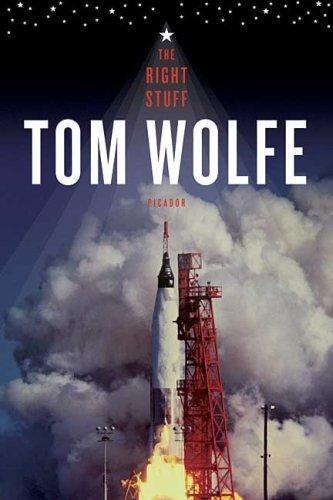
The Right Stuff
by
Tom Wolfe
Published 1 Jan 1979
Sure enough, NASA approved the idea, the White House approved it, and DeOrsey started getting in touch with magazines, setting $500,000 as the floor for bids. The one solid offer—$500,000—came from Life, and DeOrsey closed the deal. Life had an excellent precedent for the decision. Few people remembered, but The New York Times had bought the rights to Charles Lindbergh's personal story before his famous transatlantic flight in 1927. It worked out splendidly for both parties. Having bought an exclusive, the Times devoted its first five pages to Lindbergh the day after his flight and the first sixteen the day after he returned from Paris, and all other major newspapers tried their best to keep up.
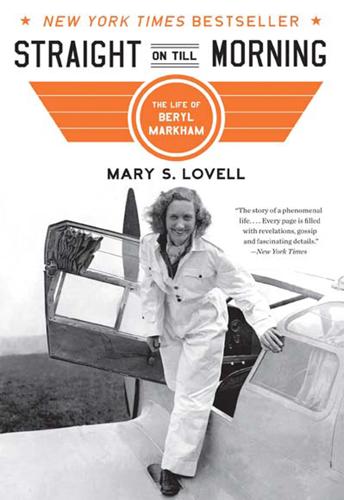
Straight on Till Morning: The Life of Beryl Markham
by
Mary S. Lovell
Published 1 Jan 1983
Paddy Migdoll wrote regularly to me saying that Beryl was in better health than she had been for a long time. As the date of the fiftieth anniversary of her flight drew closer, plans were made by various bodies to celebrate the day. Beryl was almost the last of the great aviation figures in a line which had included Charles Lindbergh, Amelia Earhart, Wiley Post, Amy Johnson and Jim Mollison. At Abingdon, the Royal Air Force particularly wanted to mark the anniversary, and with the help of the original sponsors of Beryl’s flight, Smith’s Industries and Castrol, and surprisingly, the Province of Nova Scotia, they commissioned a bronze model of the Vega Gull.

Atlantic: Great Sea Battles, Heroic Discoveries, Titanic Storms & a Vast Ocean of a Million Stories
by
Simon Winchester
Published 27 Oct 2009
The pair became rich and famous overnight and were knighted by the king only weeks later. Sir John Alcock was killed in a flying accident just a year afterward, and Sir Arthur Whitten Brown lived until 1948. They had crossed the ocean, without stopping, and they had done it in sixteen hours and twenty-seven minutes. When the much more showy and popular Charles Lindbergh single-handedly flew the Spirit of St. Louis from Long Island to Le Bourget in 1927, he gave due credit to the pair: Alcock and Brown, he said, had showed him the way. Amy Johnson and Beryl Markham, who in the 1930s separately became the first of their sex to fly the same ocean westward, were not so generous.
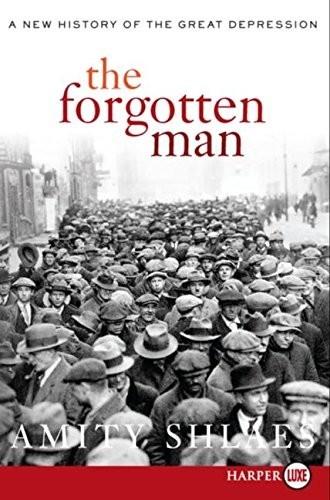
The Forgotten Man
by
Amity Shlaes
Published 25 Jun 2007
The Sutherland opinion fit in with Coolidge’s own general attitude, that the individual should have primacy—“All liberty is individual,” he had said in a speech in 1924. Coolidge’s personal wager about the 1920s was that the private sector would and should take the lead, and that then the possibilities for progress would be boundless. His reserve did not mean that he was not interested in modern technology. He followed Charles Lindbergh’s flights avidly, and the daughter of one of his closest friends, Dwight Morrow of Wall Street, would eventually marry Lindbergh. Citizens had proven their willingness to test Coolidge’s propositions again by voting overwhelmingly for the refrainer in 1924, despite the fact that he had been vice president to Warren Harding, whose short time in office had been clouded by scandal.
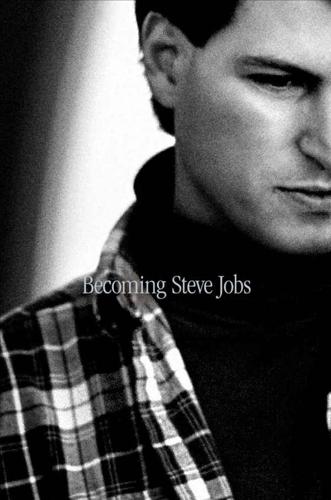
Becoming Steve Jobs: The Evolution of a Reckless Upstart Into a Visionary Leader
by
Brent Schlender
and
Rick Tetzeli
Published 24 Mar 2015
Like Steve, Jackling made a bundle developing his idea, and the Woodside house, designed in Spanish Colonial style, was his personal monument. The rambling 17,000-square-foot structure had fourteen bedrooms, custom-made wrought-iron lamps, and a pipe organ that had been expanded to seventy-one ear-shattering pipes. Charles Lindbergh and Lillian Gish had been feted there at parties that flowed forth from the enormous ballroom. The driveway leading to the mansion showed off its ample landscaped grounds, which had fallen into some disrepair. Some of Steve’s indulgences—a BMW motorcycle and a gray Porsche 911—were parked out front.
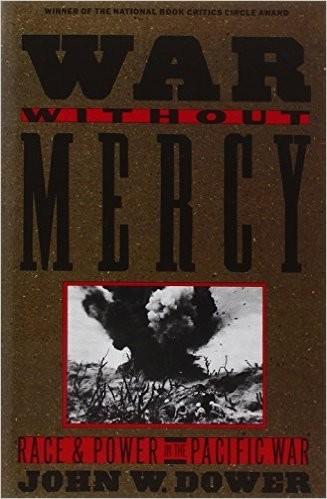
War Without Mercy: PACIFIC WAR
by
John Dower
Published 11 Apr 1986
Stories of this nature frequently emerge in conversations with veterans of the Pacific War, often–like J. Glenn Gray’s veteran–in a tone almost of disbelief concerning the blind savagery of those days. No source, however, captures the war hates and war crimes of this merciless struggle more soberly than Charles Lindbergh’s diary. For over four months in mid-1944, Lindbergh lived and flew as a civilian observer with U.S. forces based in New Guinea, and as the weeks passed he became deeply troubled, not by the willingness to kill on the part of the soldiers, which he accepted as an inherent part of the war, but by the utter contempt in which Allied fighting men held their Japanese adversaries.
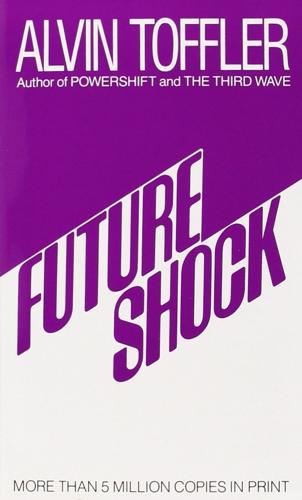
Future Shock
by
Alvin Toffler
Published 1 Jun 1984
"The American youth bag," wrote Speicher, lapsing into hippie jargon, "is overcrowded with heroes." And, he adds, "where heroes are, there are followers, cultists." To the subcult member, its heroes provide what Speicher calls the "crucial existential necessity of psychological identity." This is, of course, hardly new. Earlier generations identified with Charles Lindbergh or Theda Bara. What is new and highly significant, however, is the fabulous proliferation of such heroes and mini-heroes. As subcults multiply and values diversify, we find, in Speicher's words, "a national sense of identity hopelessly fragmented." For the individual, he says, this means greater choice: "There is a wide range of cults available, a wide range of heroes.
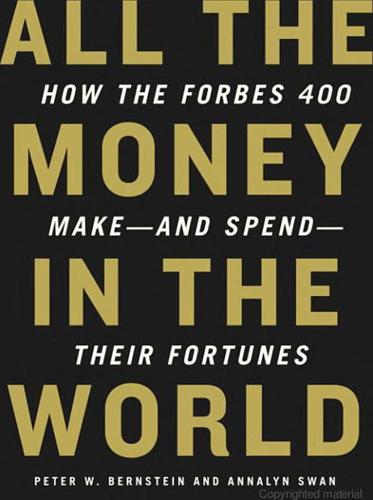
All the Money in the World
by
Peter W. Bernstein
Published 17 Dec 2008
David Gottesman: Ranking 117 on the Forbes 400 in 2006 (net worth: $2.5 billion), Gottesman was an early investor in Berkshire Hathaway because he was a believer in Benjamin Graham, Buffett’s investing mentor. He founded the investment advisory firm First Manhattan Company in New York. Albert Lee Ueltschi: A pilot and associate of Charles Lindbergh, he ranked 258 on the Forbes 400 in 2005 with $1.3 billion. He received 16,256 shares in Berkshire Hathaway in exchange for his pilot training school, Flight Safety International. * * * Consider, for example, Edward S. Lampert, a dapper forty-five-year-old based in Greenwich, Connecticut, who runs one of the biggest hedge funds outside of Wall Street.
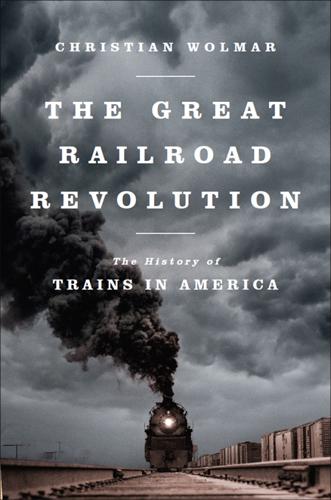
The Great Railroad Revolution
by
Christian Wolmar
Published 9 Jun 2014
By ship and train, the fastest services reached New York just thirteen days after leaving Japan, the principal producer, and in January 1929 a train carrying solely silk covered the route between San Francisco and Chicago in just over two days, a good day and a half faster than the usual passenger services. There was one other famous example showing that, when motivated, the railroad companies could get their act together and provide rapid services. The occasion was, ironically, the return to the United States in June 1927 of aviator Charles Lindbergh following his inaugural transatlantic flight. He arrived in Washington, DC, and most of the newsreel companies, eager to show the footage in the New York news theaters, arranged to fly their film there. However, the International News Reel Company beat all its rivals by using a special train commissioned from the Pennsylvania Railroad equipped with a mobile film laboratory and pulled by a fast steam locomotive.
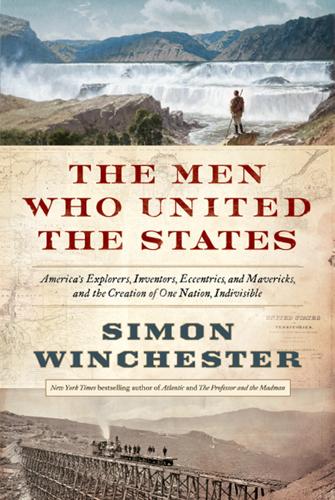
The Men Who United the States: America's Explorers, Inventors, Eccentrics and Mavericks, and the Creation of One Nation, Indivisible
by
Simon Winchester
Published 14 Oct 2013
He had fifty Holiday Inns in 1958; ten years later, a thousand. * Aviation prizes did much to stimulate early flying. Lord Rothermere at the Daily Mail got fliers to cross the Channel and then the Atlantic; the owners of New York’s tony Brevoort Hotel and of the Bulova Watch Company both gave the prizes that were won by Charles Lindbergh when he reached Paris single-handed; and Tokyo’s newspaper Asahi Shimbun offered $50,000 for the first nonstop crossing of the Pacific. American fliers won the contest, but were paid only half because they were not Japanese. * The great French aristocrat who had played such a heroic role in the American War of Independence had returned to America as a distinguished graybeard a half century later to perform what was essentially a yearlong victory lap.

More: The 10,000-Year Rise of the World Economy
by
Philip Coggan
Published 6 Feb 2020
During the First World War, military men saw the potential for aeroplanes for reconnaissance, and the first fighter and bomber planes emerged. A commercial use for airlines wasn’t immediately obvious in the aftermath of the war. Early planes were not robust enough to carry passengers. But an airmail service was created after 1925, and Charles Lindbergh, having been the first man to fly across the Atlantic, piloted PanAm’s first service to South America in 1929. By the late 1930s, the DC-3 was large enough to seat 21 passengers. Shirley Temple, the Hollywood child star, was the first passenger to buy a sleeping ticket on a flight.52 Early airlines realised what Thomas Petzinger dubbed the “first rule of airline economics”: if a plane is going to take off anyway, any extra payload in the form of passengers or goods is almost pure profit.53 In the early years of commercial aviation, flying was seen as a glamorous business.
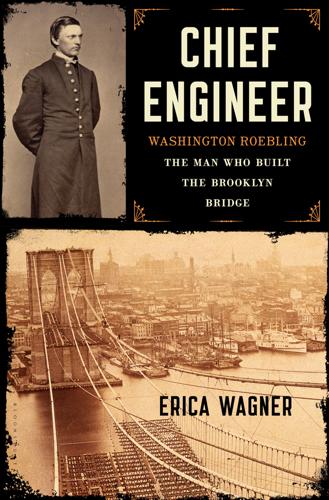
Chief Engineer
by
Erica Wagner
Donald Roebling, John’s youngest son, removed the stained-glass window of the Brooklyn Bridge from the top of the staircase in 1936, and moved it to his estate in Florida; the place was restored in the early years of the twenty-first century, but the window, alas, seems to have disappeared. The year after Washington’s death—just a few days short of what would have been his ninetieth birthday—Charles Lindbergh’s Spirit of St. Louis landed at Le Bourget, in Paris, completing the world’s first solo transatlantic flight. The airplane’s control cables had been manufactured by John A. Roebling’s Sons Company; the plane was braced with Roebling wire, and its lighting and ignition cables had been made by the company, too: it constituted a new kind of bridge, thousands of miles long, stretched across a great ocean.
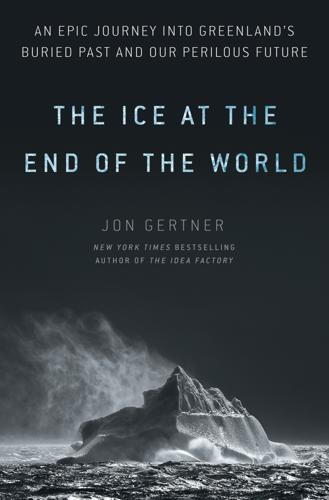
The Ice at the End of the World: An Epic Journey Into Greenland's Buried Past and Our Perilous Future
by
Jon Gertner
Published 10 Jun 2019
Partly he did this by bringing a number of social and physical scientists into his orbit and helping to introduce them to the world of ice and the Arctic. And partly he did this by the magnetic power of his celebrity, which in time prompted a variety of outsiders interested in Greenland—movie directors, U.S. military officers, even the aviator Charles Lindbergh—to seek him out. He did not do it alone, though. In 1908, while on vacation in Bergen, Norway, Rasmussen met a huge, handsome, good-natured man who was nearly a full foot taller and several years younger. Peter Freuchen, with unkempt hair and a full and ragged beard, was on his way back from Greenland, where he had been working for two years as a member of the Danmark expedition.

The Matter of the Heart: A History of the Heart in Eleven Operations
by
Thomas Morris
Published 31 May 2017
The perfusion pump unveiled in 1935 by two researchers in New York was, if anything, less sophisticated, yet it prompted a storm of publicity. Front-page headlines celebrated the invention of a ‘robot heart’, and fanciful claims were made about its likely application in humans. Fuelling this press hysteria was the identity of the pump’s inventor: Charles Lindbergh, revered for his feat in becoming the first solo pilot to fly the Atlantic nonstop. After the abduction and murder of his young son in 1932, Lindbergh had become a virtual recluse, and his sudden return to the public eye caused a sensation. For several years, it emerged, he had been quietly devoting himself to biological research at the Rockefeller Medical Center, assisting Alexis Carrel in his experiments.
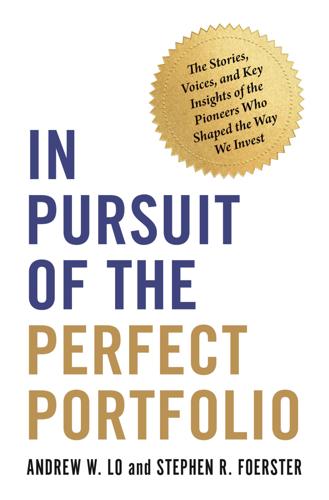
In Pursuit of the Perfect Portfolio: The Stories, Voices, and Key Insights of the Pioneers Who Shaped the Way We Invest
by
Andrew W. Lo
and
Stephen R. Foerster
Published 16 Aug 2021
Charley advanced Yale’s interests in a manner that mattered immediately and resonated more deeply as time passed.”56 According to Ellis, “I’ve had the rare privilege of sitting in the front row and watching one of the most beautiful players of one of the most difficult games that there may ever have been. It’s a little bit like being the copilot sitting right behind Charles Lindbergh as he flies across the Atlantic.”57 What is Swensen like? “He’s a lot like my mother. My mother was one of the best cooks I ever knew, and she was very clear that in her kitchen the corner in between the stove and the sink was her corner. If you ever got in the way, you were volunteering to do the dishes.

Soldier, Sailor, Frogman, Spy, Airman, Gangster, Kill or Die: How the Allies Won on D-Day
by
Giles Milton
Published 25 Jan 2019
He had spent more than eighteen months training for precisely this sort of mid-air drama and felt ready for anything. Just twenty-two years of age – and decked in leather cap and flying goggles – Rice looked every inch the professional pilot. Indeed there was a sense in which he’d been awaiting this moment all his life. At the age of seven, he had watched Charles Lindbergh take off from a Panama airfield in his famous monoplane, Spirit of St Louis. The young Rice had vowed that one day he, too, would become a pilot. Now, his moment had come. The drama unfolding in the night sky above Sainte-Mère-Église had begun earlier that evening when he and his fellow pilot, Larue Wells, had been summoned to a packed operations room at Cottesmore airfield in Rutland.

Fodor's Essential Belgium
by
Fodor's Travel Guides
Published 23 Aug 2022
Airspace Indoor Skydiving OTHER ATTRACTION | FAMILY | Where else would you find an indoor skydiving center but out near the airport? If you want to experience the joys of skydiving without the effort of ascending to 14,000 feet, this is a good option. Basic packages include two “flights” on the freefall simulator. EBrussels South Charleroi Airport, Rue Charles Lindbergh 26, Charleroi P071/919–100 wwww.airspaceindoorskydive.be A€59 CClosed Mon. and Tues. mBus: Airport Shuttle, 68. Art Nouveau Walk HISTORIC DISTRICT | For a city famed for its ugliness, you can find some rather pretty examples of turn-of-the-century architecture. These date back to when Charleroi first expanded, as the fortress walls were torn down in 1870 and avenues were built atop the old ramparts.
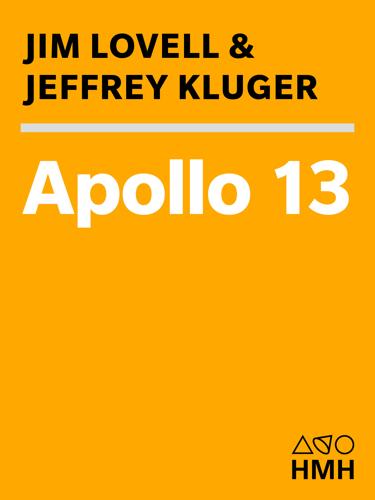
Apollo 13
by
Jim Lovell
and
Jeffrey Kluger
Published 14 Jun 2000
There are no Harmon Trophies for missions that did not achieve their primary objectives; no Collier Awards for spaceships that blew up before they got where they were going. Besides the heat shield plug, all that was here to commemorate the flight of Apollo 13 was a framed letter of congratulation from Charles Lindbergh and, on a nearby windowsill, two of the last artifacts collected from the long-ago incinerated lunar module Aquarius: the crew’s optical sight and the commemorative plaque intended for its forward leg. Leaving these mementos, Lovell carried Allie to the kitchen of his comfortable home in Horseshoe Bay, Texas, where he found Marilyn talking to Jeffrey and his wife, Annie.
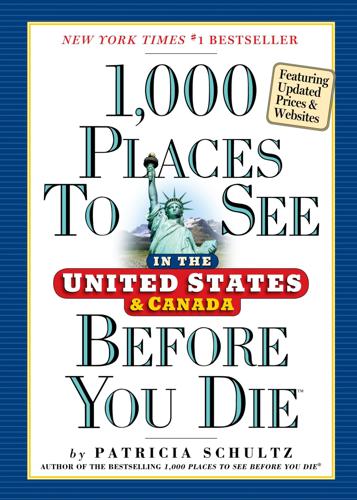
1,000 Places to See in the United States and Canada Before You Die, Updated Ed.
by
Patricia Schultz
Published 13 May 2007
Highlights include a Concorde supersonic airliner; the Enola Gay, which dropped the atomic bomb on Hiroshima; and the only surviving Boeing 307 Stratoliner. There’s also a collection of 45 aircraft engines and more than 1,500 smaller artifacts such as uniforms, models, aerial cameras, and displays on famous aviators, including Charles Lindbergh and Amelia Earhart. Off to one side, the 53,000-square-foot James S. McDonnell Space Hangar houses the museum’s space collection, centered around the space shuttle Enterprise, the original test vehicle that initiated the shuttle program in 1976–77. It was originally to be named Constitution in honor of the U.S.
…
BEST TIMES: Wed noon for free talks in the American Treasures gallery; evenings at the Madison Building’s Mary Pickford Theater for showings of films from the museum’s collection. The Final Frontier THE NATIONAL AIR AND SPACE MUSEUM Washington, D.C. For those in thrall with the notion of flight, this is your place. Under one roof you’ll find Charles Lindbergh’s Spirit of St. Louis, Chuck Yeager’s Glamorous Glennis Bell X-1, the Apollo 11 command module, the Skylab space station, and some moon rocks collected by Apollo 17. Orville and Wilbur Wright made history’s first manned flight in 1903, but the Smithsonian’s aeronautical collection actually predates that by 17 years, beginning with its 1876 acquisition of a group of Chinese kites.
…
Designed in 1929 by noted local architect Albert Kahn, the home has interior paneling and furniture imported from old English manors; Cotswold roofers were brought in to split and lay the imported stone shingles. Evident throughout is the Fords’ love of art, though copies stand in for the originals now hanging in the Detroit Institute of the Arts (see p. 525). Much of this rich estate remains as it was when the Fords lived here, down to the framed photos of family and friends like Charles Lindbergh. Surprisingly, the least ostentatious home belonged to Henry Ford himself. Fair Lane, the 1914 estate of Henry and his wife, Clara, is remarkable for how well it reflects the inventive, detail-oriented mind of its owner. It is filled with technical innovations, including the powerhouse, designed with mentor Thomas Edison, which made the estate completely self-sufficient for heating, lighting, and refrigeration.

Frommer's San Diego 2011
by
Mark Hiss
Published 2 Jan 2007
With the onset of World War I in 1917, the government purchased North Island, which by then had already been in use by the Army, Navy, and Marines. The Navy relocated its Pacific Fleet to San Diego in 1919. North Island’s aviation activity continued after the war, too, most famously when a young pilot named Charles Lindbergh hired San Diego’s Ryan Aeronautical Company to manufacture a special plane of his own design, called the Spirit of St. Louis. On May 10, 1927, Lindbergh left North Island for New York on a test flight, setting a transcontinental record in the process. Ten days later, he flew from New York to Paris, becoming the first pilot to make a solo nonstop flight across the Atlantic.

The Relentless Revolution: A History of Capitalism
by
Joyce Appleby
Published 22 Dec 2009
Once again, commerce showed its power to shape institutions in unexpected ways. Another newcomer to postwar American consumers was air travel. The U.S. government had promoted aeronautic research after the Wright brothers’ successful flight in 1903 but ceased to do so after World War I. The original airlines like American and United emerged from aircraft companies. Charles Lindbergh drew world attention in 1927, when he flew from New York to Paris in a single-engine monoplane. Lindbergh then became a pilot for Pan American, which, like the other pioneering, commercial airlines, relied on income from carrying the mail, especially to the countries of Latin America. During the 1930s fear and expense curbed commercial flying.

MacroWikinomics: Rebooting Business and the World
by
Don Tapscott
and
Anthony D. Williams
Published 28 Sep 2010
“If we do this right,” says Diamandis, “we’re going to draw a line in the sand and say all the cars we drove before this date are relegated to the history museums.” Contests as an Innovation Model It’s not the first time high-profile contests have been used to motivate creative solutions to grand challenges. In 1927, Charles Lindbergh won the $25,000 Orteig Prize for flying nonstop from New York to Paris—a seminal event that helped launch the modern aviation industry. After Lindbergh’s nonstop solo flight across the Atlantic, the number of people who bought airplane tickets in the United States went from about 6,000 to 180,000 in eighteen months: a thirty-fold increase.18 The first X Prize, modeled after the Orteig Prize, captured the public’s attention in 2004, when the contest awarded $10 million to designer Burt Rutan and Microsoft cofounder Paul Allen for building the first privately funded spaceship that traveled 100 kilometers above the surface of the Earth.
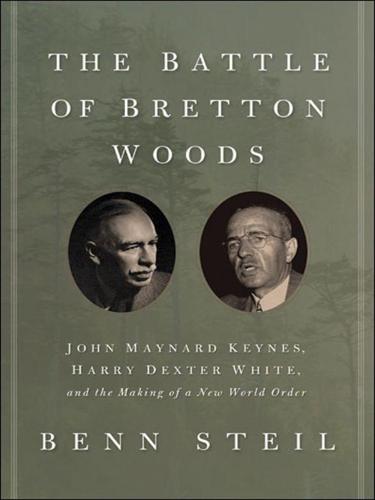
The Battle of Bretton Woods: John Maynard Keynes, Harry Dexter White, and the Making of a New World Order
by
Benn Steil
Published 14 May 2013
Treasury Secretary, armed with figures prepared by White, testifying on the depths of British penury and speculating on what little might remain to be picked off the empire’s carcass in return for American support. Resistance to the plan was bolstered by the forced resignation of the U.S. ambassador to Britain, Joseph Kennedy, a hated figure in Downing Street, who admonished Congress that this was “not our war.” Charismatic aviation hero Charles Lindbergh also took up the opposition cause. “We are in danger of war today, not because Europeans attempted to interfere in our internal affairs,” Lindbergh insisted, “but because Americans attempted to interfere in the internal affairs of Europe.… If we desire peace, we need only stop asking for war.”11 Lend-Lease was widely painted as a measure likely to bankrupt America and drag it into a hopeless conflict remote from the nation’s vital interests.

A Generation of Sociopaths: How the Baby Boomers Betrayed America
by
Bruce Cannon Gibney
Published 7 Mar 2017
In American cities, lectures on scientific topics, demonstrations of new inventions, and even public dissections were must-see events. The newspapers closely followed Thomas Edison, the “Wizard of Menlo Park,” and Americans prided themselves on his ingenuity. The Wright brothers, who invented the heavier-than-air plane, and Charles Lindbergh, the first person to fly solo across the Atlantic, also became celebrities and heroes (in the case of Lindbergh, notwithstanding his repellent personal views). There was not one Elon Musk, there were dozens. The stature of science and technology peaked in the two decades following World War II.
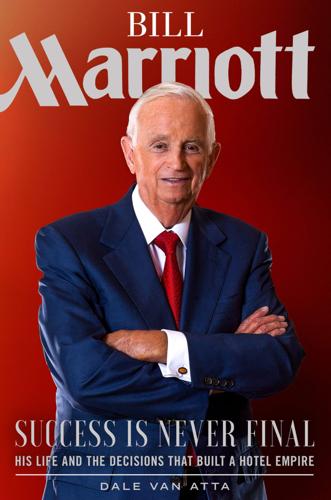
Bill Marriott: Success Is Never Final--His Life and the Decisions That Built a Hotel Empire
by
Dale van Atta
Published 14 Aug 2019
When Billy strode through the doors into the grand lobby with its twenty-one-foot-high colonnade of marble and gold, the Hotel Astor was the most popular meeting place on Broadway. In the center of the lobby was an ornate clock under which couples often met, and which was featured in a Judy Garland movie, The Clock. At the time of the Marriotts’ visit, the hotel was the temporary residence of several of the rich and famous, including Charles Lindbergh, Will Rogers, and Arturo Toscanini. Times Square never lost its allure for Bill, who returned two decades later in 1960 in the hope of opening a hotel there. At the time, he was chief of Marriott’s “Hotel Division,” overseeing a grand total of two hotels. He was thinking about buying the historic twenty-five-story Times Tower, built in 1904 as the headquarters of the fledgling New York Times.
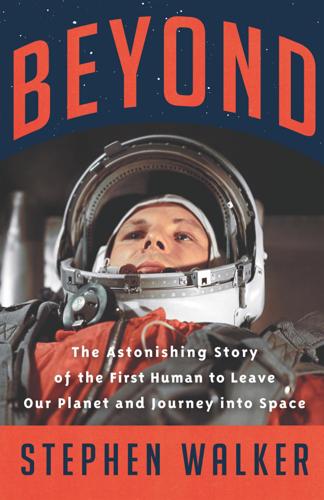
Beyond: The Astonishing Story of the First Human to Leave Our Planet and Journey Into Space
by
Stephen Walker
Published 12 Apr 2021
While he was resting, walking, playing billiards with his fellow cosmonauts and disclosing truths about his flight behind closed doors to the state commission – many of which he would never be allowed to reveal in public – the world’s media were busily turning the story into one of the biggest events of the century; indeed, the biggest event of the century according to London’s mass-circulation Daily Mirror, whose April 13 front-page headline was exactly that: ‘THE GREATEST STORY OF OUR LIFETIME, THE GREATEST STORY OF THE CENTURY’. And the paper added: ‘Today the Mirror salutes the Russians.’ The same mantra was repeated everywhere, as were the inevitable parallels with Columbus and Charles Lindbergh, whose own sensational 1927 first solo flight across the Atlantic had aroused similar passions. Gagarin’s orbital odyssey was ‘The Number One Event of the Twentieth Century’, it was ‘a Universal Good’, it was ‘the Greatest Feat of Science in Man’s History’. The excitement spread like a forest fire.
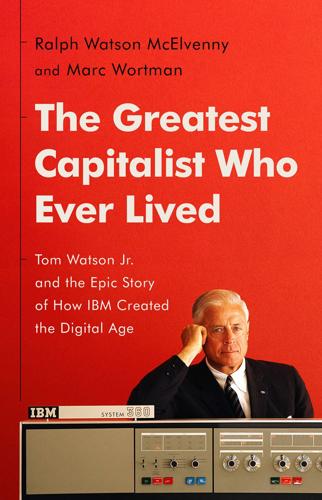
The Greatest Capitalist Who Ever Lived: Tom Watson Jr. And the Epic Story of How IBM Created the Digital Age
by
Ralph Watson McElvenny
and
Marc Wortman
Published 14 Oct 2023
“Father,” said Tom, “wanted to know everyone important in New York, and eventually he succeeded.”36 To that end, he became president of the Merchants’ Association of New York, a director on the New York Federal Reserve Bank board, chair of the American delegation to the International Chamber of Commerce and later president of the global ICC, and an officer on a plethora of other corporate, nonprofit, civic, and charitable boards.37 Watson came to know virtually all the Wall Street and political grandees of his times and courted leaders in many other fields. Among his associates were John D. Rockefeller Jr., Henry Luce, Charles Lindbergh, polar explorer Richard Byrd, Columbia University president Nicholas Murray Butler, and President Herbert Hoover.38 Despite his small “d” democratic touch when it came to his employees, T.J. Watson coveted the company of the highborn and the mighty. His house became a stop for European royalty in town.
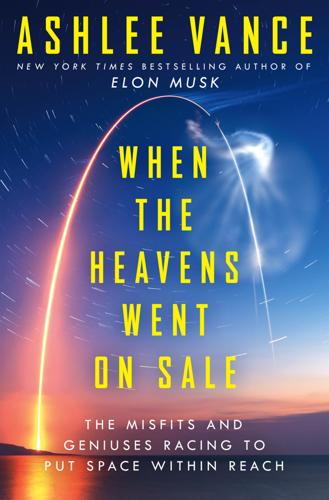
When the Heavens Went on Sale: The Misfits and Geniuses Racing to Put Space Within Reach
by
Ashlee Vance
Published 8 May 2023
There are multistory flight simulators, quantum computing centers, and all manner of giant metallic orbs used to store fluids and gases for experiments. Viewed from above in its entirety, Ames appears to have a split personality where a stodgy government compound meets a Bond villain’s evil lair. The history of Ames dates back to the late 1930s, when Charles Lindbergh advised the US government to set up a new national aeronautics research center on the West Coast. At the time, the south Bay Area was concentrated far more on agriculture than on technology. It was known as the Valley of Heart’s Delight for all of its fruit and nut orchards. “There were strawberry fields for miles and miles and miles,” said Jack Boyd, an aeronautical engineer, who arrived at Ames in 1947 at a starting salary of $2,644 per year.

Fodor's California 2014
by
Fodor's
Published 5 Nov 2013
The city’s fate was sealed in 1908, when President Theodore Roosevelt’s Great White Fleet sailed into the bay. The U.S. Navy, impressed by the city’s excellent harbor and temperate climate, decided to build a destroyer base on San Diego Bay in the 1920s. The newly developed aircraft industry soon followed (Charles Lindbergh’s plane, Spirit of St. Louis, was built here). The military, which operates many bases and installations throughout the county (which, added together, form the largest military base in the world), continues to contribute to the local economy. Top Reasons to Go Beautiful beaches: San Diego’s shore shimmers with crystalline Pacific waters rolling up to some of the prettiest stretches of sand on the West Coast.
…
Coronado As if freeze-framed in the 1950s, Coronado’s quaint appeal is captured in its old-fashioned storefronts, well-manicured gardens, and charming Ferry Landing Marketplace. The streets of Coronado are wide, quiet, and friendly, and many of today’s residents live in grand Victorian homes handed down for generations. Naval Air Station North Island was established in 1911 on Coronado’s north end, across from Point Loma, and was the site of Charles Lindbergh’s departure on the transcontinental flight that preceded his famous solo flight across the Atlantic. Coronado’s long relationship with the U.S. Navy and its desirable real estate have made it an enclave for military personnel; it’s said to have more retired admirals per capita than anywhere else in the United States.
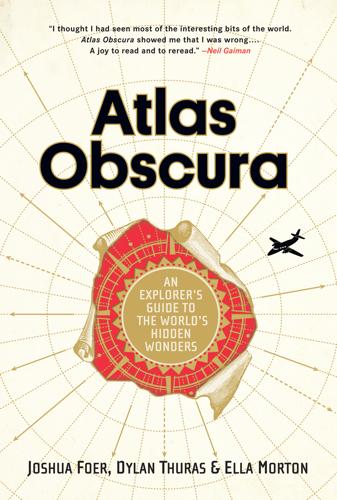
Atlas Obscura: An Explorer's Guide to the World's Hidden Wonders
by
Joshua Foer
,
Dylan Thuras
and
Ella Morton
Published 19 Sep 2016
When it came time to furnish the house, Stenman continued the newspaper theme, rolling papers into tiny logs, stacking them to form chairs, bookcases, and desks, and sloshing varnish on top for a lacquered wood effect. Stenman spent summers in his newspaper house until 1930, after which the place opened to the public as a museum. Look through the layers of shellac and you’ll see headlines and tales from the 1920s, including, on one desk, accounts of Charles Lindbergh’s pioneering transatlantic flight. 52 Pigeon Hill Street, Rockport. The house is around 40 miles (64 km) northeast of Boston, in the coastal town of Rockport. It’s open from spring through fall. 42.672947 70.634617 Even the furniture is made of rolled-up newspapers. NEW HAMPSHIRE America’s Stonehenge SALEM The name of this place sets you up for disappointment—it’s nothing like the original.
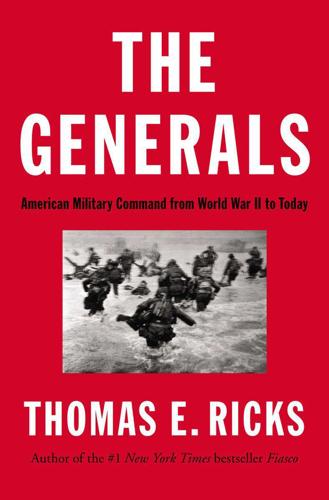
The Generals: American Military Command From World War II to Today
by
Thomas E. Ricks
Published 14 Oct 2012
Truman, for his part, later said that there were times when MacArthur was “out of his head and didn’t know what he was doing.” MacArthur returned home to the welcome of a conquering hero. He was given one parade in Honolulu, two each in San Francisco and Washington, and a final triumph in New York City, bigger than that given for Charles Lindbergh. He addressed a joint session of Congress and used it to accuse the Truman Administration of appeasement of Communism and “defeatism.” It was time to take on China, he said, though he pulled his punches a bit and did not call for bombing of its air bases, as he had recommended internally. If the United States did not prevent a Communist takeover of Taiwan, he added, then it might well start think about defending itself “on the coast of California, Oregon, and Washington.”
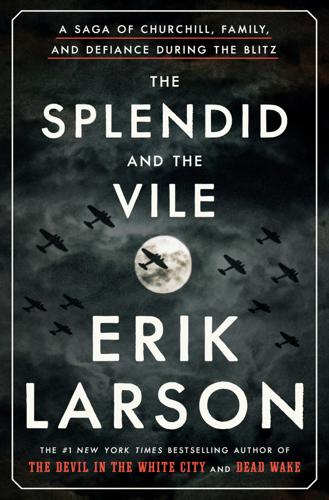
The Splendid and the Vile: A Saga of Churchill, Family, and Defiance During the Blitz
by
Erik Larson
Published 14 Jun 2020
Given margins of error in polling, the two candidates were running neck and neck. But in America, the tilt toward isolationism was gaining momentum and intensity. On September 4, a group of Yale Law students founded the America First Committee to oppose involvement in the war. The organization grew quickly, winning the energetic support of no less a celebrity than Charles Lindbergh, a national hero ever since his 1927 flight across the Atlantic. And Willkie, urged by Republican leaders to do whatever he could to pull ahead in the presidential election, was about to change strategy and make the war—and fear—the central issue in the campaign. CHAPTER 41 He Is Coming ON WEDNESDAY, SEPTEMBER 4, HITLER stepped to the rostrum at the Berlin Sportpalast, where some years earlier he had made his first speech as chancellor of Germany.
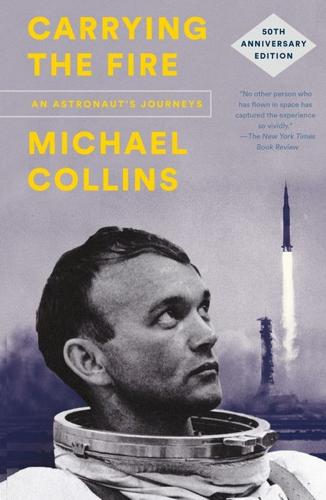
Carrying the Fire: An Astronaut's Journeys: 50th Anniversary Edition
by
Michael Collins
and
Charles A. Lindbergh
Published 15 Apr 2019
Walking on the moon was commonplace to us at Maple Avenue in Bala-Cynwyd, Pennsylvania, but it was a thrill and exciting to all of us to watch your flight into space, Buck Rogers finally coming to life. Our Best Wishes, the children of Phillip Nowland.” Most impressive of all is the letter from Charles Lindbergh, written on Pan American Flight 841 from Honolulu to Manila, and postmarked in Manila on July 28. Dear Colonel Collins, My congratulations to you on your fascinating, extraordinary, and beautifully executed mission; and my sincere thanks for the part you took in issuing the invitation that permitted me to watch your Apollo 11 launching from the location assigned to Astronauts.
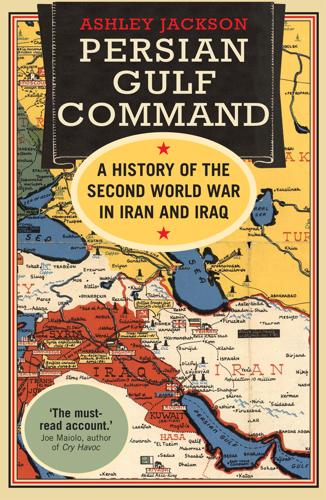
Persian Gulf Command: A History of the Second World War in Iran and Iraq
by
Ashley Jackson
Published 15 May 2018
The Iranian prime minister ‘stated he wishes to have a complete American military mission to reorganize and train the Army which is demoralized, inefficient, depleted in materials and almost disintegrated as a result of the invasion of the country’.26 American experts also advised on police administration, irrigation, agricultural education and public health. By far the most successful mission was that of Colonel H. Norman Schwarzkopf, a former chief of the New Jersey State Police who had led the investigation into the kidnapping of Charles Lindbergh’s son, and who was the father of ‘Stormin’ Norman, of later Gulf War fame. Renowned as ‘a gang-smasher’, Schwarzkopf was sent to Iran to reorganize the gendarmerie and improve security on the all-important road network, reorganizing and retraining a force of 20,000 men under a US Army mandate.27 The force trained by Schwarzkopf would later be instrumental in suppressing autonomous movements in Azerbaijan and Kurdistan.28 The main American mission was undoubtedly that responsible for financial reconstruction.
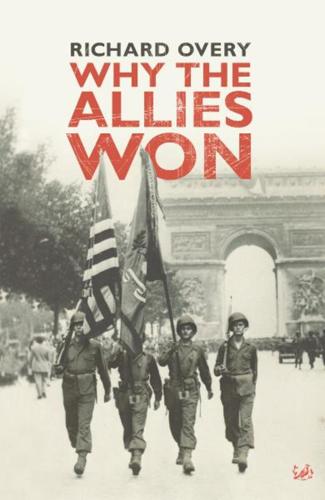
Why the Allies Won
by
Richard Overy
Published 29 Feb 2012
The glare of the machinery and polished aluminium and the clouds of dust made it impossible to see its whole length. At one end four moving lines carried the core of the aircraft; the four merged to two as the aircraft took shape; 1 mile from the start there was just one line of completed bombers, fed out through a cavernous opening on to the airfield beyond. It was, observed the aviation hero, Charles Lindbergh, ‘the Grand Canyon of the mechanised world’.45 Long before Willow Run redeemed its author’s ambitions the rest of American industry turned to modern methods. Productivity in the aircraft industry doubled between 1941 and 1944. By 1944 each American aircraft worker produced more than twice his German counterpart, four times the output of a Japanese worker.

Frommer's California 2007
by
Harry Basch
,
Mark Hiss
,
Erika Lenkert
and
Matthew Richard Poole
Published 6 Dec 2006
The Hollywood crowd would take Hearst’s private railway car from Los Angeles to San Luis Obispo, where a fleet of limousines waited to transport them to San Simeon. Those who didn’t come by train were treated to a flight on Hearst’s private plane from the Burbank airport (MGM head Irving Thalberg and his wife, Norma Shearer, preferred this mode of transportation). Hearst, an avid aviator, had a landing strip built; Charles Lindbergh used it when he flew up for a visit in the summer of 1928. Oh, if the walls could talk. Atop one of the castle towers are the hexagonal Celestial Suites. One was a favorite of Clark Gable and Carole Lombard, who would be startled out of their romantic slumber by the clamor of 18 carillon bells overhead.
…
Willed to California in 1944, the 168-acre estate is now a park and historic site, supervised by the Department of Parks and Recreation. Visitors may explore the grounds, the former stables, and the 31-room house with original furnishings, including a porch swing in the living room and Native American rugs and baskets. Charles Lindbergh and his wife, Anne Morrow Lindbergh, hid here in the 1930s during the craze that followed the kidnap and murder of their first son. There are picnic tables, but no food is sold. Who’s Will Rogers, you ask? He was born in Oklahoma in 1879 and became a cowboy in the Texas Panhandle before drifting into a Wild West show as a folksy, speechifying roper.

Future Crimes: Everything Is Connected, Everyone Is Vulnerable and What We Can Do About It
by
Marc Goodman
Published 24 Feb 2015
The incentive prize inspired John Harrison, a self-educated working-class clock maker, to invent the marine chronometer, a clocklike device that solved the problem. Two hundred years later, another incentive prize was launched, this time to stimulate advances in the nascent field of aviation. Charles Lindbergh became the first man to fly across the Atlantic, not just because of his sense of adventure, but because a seldom-recalled hotel magnate named Raymond Orteig offered $25,000 of his own money in 1919 as a prize to “the first aviator of any Allied Country crossing the Atlantic in one flight, from Paris to New York or New York to Paris.”
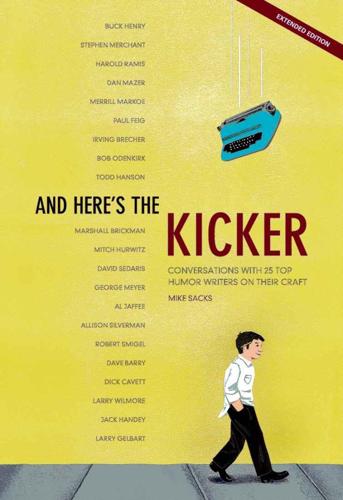
And Here's the Kicker: Conversations with 21 Top Humor Writers on Their Craft
by
Mike Sacks
Published 8 Jul 2009
Most of the SNL cast members came from that background. You played one of the more bizarre and lecherous characters on the show, Uncle Roy, the middle-aged pedophile babysitter. I wonder how many guest hosts today would ever play such a role. He wasn't the only creepy character I played. I played Charles Lindbergh crossing the Atlantic and jerking off to a pornographic magazine. I welcomed the weirdness of that sketch and others. I don't think you could do a sketch like “Uncle Roy” these days. I think one of the reasons why it worked was because the two little-girl characters, played by Gilda and Laraine Newman, love their Uncle Roy in the nicest possible way.
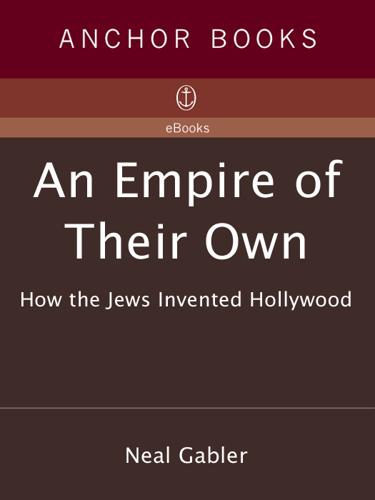
An Empire of Their Own: How the Jews Invented Hollywood
by
Neal Gabler
Published 17 Nov 2010
Late that summer Wheeler, who headed the Senate’s Interstate Commerce Commission, appointed a subcommittee to investigate whether the movie industry had encouraged America to end its neutrality. Though Wheeler and the other Senate isolationists insisted they had no animus against Jews, the new subcommittee was strongly supported and assisted by a rabid isolationist group called America First, which obviously did. (America First’s most prominent spokesman was Colonel Charles Lindbergh, who had warned an audience in Des Moines that the Jews’ “greatest danger to this country lies in their large ownership and influence in our motion pictures, our press, our radio, and our government,” and one of the leaders of the group, a myopic reactionary named John T. Flynn, had actually drafted the resolution that called for an investigation.)
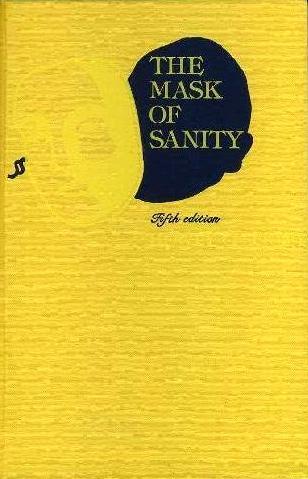
The Mask of Sanity: An Attempt to Clarify Some Issues About the So Called Psychopathic Personality
by
Hervey Cleckley
Published 1 Jan 1955
Telephone calls from newspapermen and from people connected with the American embassy, his parents report, confirm this and indicate that Stanley must have created a remarkable stir and a great deal of confusion. His own report, which can hardly be counted upon as accurate or trustworthy, pictures him as being hailed and feted in Brussels in a style and on a scale almost comparable to the welcome Charles Lindbergh received in New York after his historic solo first airplane flight across the Atlantic ocean. This account of Stanley began with headlines from a newspaper. It seems to me appropriate to close the report with another small item of news that appeared in 1975 in a local paper. “PREACHER” BLESSES AUGUSTAN’S WALLET, COLLECTS $175 FEE An agreeable young man who identified himself as a “preacher” blessed an Augusta man’s wallet Tuesday and collected a $175 fee.
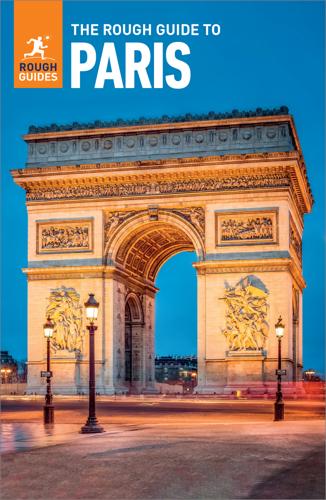
The Rough Guide to Paris
by
Rough Guides
Published 1 May 2023
Le Bourget airport 7km east of St-Denis • Museum Charge depending on how many interactive experiences you choose • http://museeairespace.fr • MLa Courneuve/RER Le Bourget (from Gare du Nord); from either métro or RER station, take bus No. 152 to the museum Until the development of Orly in the 1950s, Le Bourget airport, was Paris’s principal gateway, and is closely associated with the exploits of pioneering aviators – Charles Lindbergh landed here after his first flight across the Atlantic. Today Le Bourget is used only for domestic flights, with a museum of powered flight, the Musée de l’Air et de l’Espace. Day-trips from Paris In the further reaches of – and beyond – the boundaries of Île-de-France lie a number of exceptional towns and sights that are easily accessible as day-trips from the capital.

Frommer's Los Angeles 2010
by
Matthew Richard Poole
Published 28 Sep 2009
W H AT TO S E E & D O I N LO S A N G E L E S 188 Will Rogers State Historic Park Will Rogers willed his private ranch and grounds to the state of California in 1944, and the 168-acr e estate is no w both a par k and a historic site. Visitors may explor e the grounds, the former stables, and the 31-r oom house filled with the original furnishings, including a porch swing in the living room and many Native American rugs and baskets. Charles Lindbergh and his wife, Anne M orrow Lindbergh, hid out her e in the 1930s during part of the craze that followed the kidnapping and murder of their first son. There are picnic tables, but no food is sold. Who’s Will Rogers, you ask? He was born in Oklahoma in 1879 and became a cowboy in the Texas Panhandle before drifting into a Wild West show as a folksy , speechifying roper.
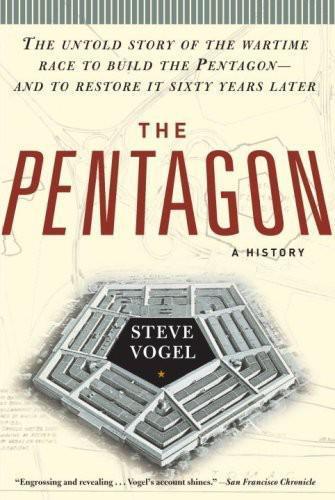
The Pentagon: A History
by
Steve Vogel
Published 26 May 2008
“His appearance upset the work of hundreds of War Department women workers who swarmed out of their offices, ignored the shouts of federal policemen to ‘keep moving,’ and sighed as the former actor hurried through the halls,” The New York Times reported. Famous faces—Bob Hope, Cary Grant, and Charles Lindbergh among them—were spotted coming through the River entrance. Eleanor Roosevelt had a special pass allowing her to enter without challenge, but Vienna-born Supreme Court Justice Felix Frankfurter, late for an appointment with Stimson, was given the treatment by a suspicious receptionist. “That man was born in Austria,” the receptionist remarked to the next visitor.

Tools of Titans: The Tactics, Routines, and Habits of Billionaires, Icons, and World-Class Performers
by
Timothy Ferriss
Published 6 Dec 2016
Lewis), Cancer as a Metabolic Disease: On the Origin, Management, and Prevention of Cancer (Thomas Seyfried), Ketogenic Diabetes Diet: Type 2 Diabetes (Ellen Davis, MS, and Keith Runyan, MD), Fight Cancer with a Ketogenic Diet (Ellen Davis, MS) de Botton, Alain: The Unbearable Lightness of Being (Milan Kundera), The Complete Essays (Michel de Montaigne), In Search of Lost Time (Marcel Proust) De Sena, Joe: A Message to Garcia (Elbert Hubbard), Atlas Shrugged (Ayn Rand), Shōgun (James Clavell), The One Minute Manager (Kenneth H. Blanchard) Diamandis, Peter: The Spirit of St. Louis (Charles Lindbergh), The Man Who Sold the Moon (Robert A. Heinlein), The Singularity Is Near (Ray Kurzweil), Atlas Shrugged (Ayn Rand), Stone Soup story DiNunzio, Tracy: Good to Great: Why Some Companies Make the Leap . . . and Others Don’t (Jim Collins), The Everything Store: Jeff Bezos and the Age of Amazon (Brad Stone) Dubner, Stephen: For adults: Levels of the Game (John McPhee); for kids: The Empty Pot (Demi) Eisen, Jonathan: National Geographic Field Guide to the Birds of North America (Jon L.

Accessory to War: The Unspoken Alliance Between Astrophysics and the Military
by
Neil Degrasse Tyson
and
Avis Lang
Published 10 Sep 2018
Interplanetary space is the next arena where the soft power of technological bravado, augmented by the lure of unlimited resources, urges us to take flight. 9 A TIME TO HEAL On July 21, 1969—the day the New York Times banner headline read “MEN WALK ON MOON: ASTRONAUTS LAND ON PLAIN; COLLECT ROCKS, PLANT FLAG”—the paper also provided space for reactions from several dozen notable individuals: the Dalai Lama, R. Buckminster Fuller, Jesse Jackson, Charles Lindbergh, Arthur Miller, Pablo Picasso. Some were enthusiastic, some were ambivalent, Picasso was completely uninterested. The admired historian of cities and technology Lewis Mumford was disgusted. Five years earlier, Mumford had received the Presidential Medal of Freedom. Now he felt impelled to describe the foremost scientific and technical achievements of the modern era—rockets, computers, nuclear bombs—as “direct products of war,” hyped as research and development for military and political ends that would shrivel under rational examination and candid moral appraisal.
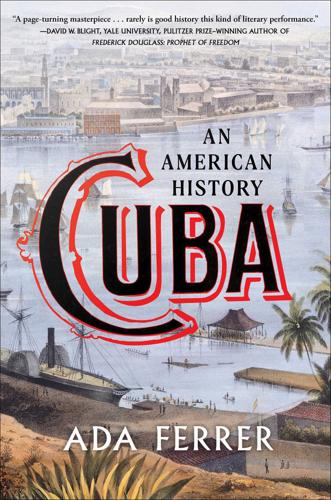
Cuba: An American History
by
Ada Ferrer
Published 6 Sep 2021
Havana, according to one popular travel book, was fast “becoming a second home for that section of the smart set which formerly spent its winters on the Riviera.” The pillars of American aristocracy went there: the Vanderbilts, the Whitneys, the Astors. So did celebrities of all kinds: Amelia Earhart, Irving Berlin, Charles Lindbergh, Gary Cooper, Gloria Swanson, Langston Hughes, Albert Einstein, New York City mayor Jimmy Walker, the presidents of Coca-Cola and Chase National Bank. John Bowman, owner of the Biltmore chain of hotels, who already owned one posh hotel in Havana, built the Havana-Biltmore Yacht and Country Club.
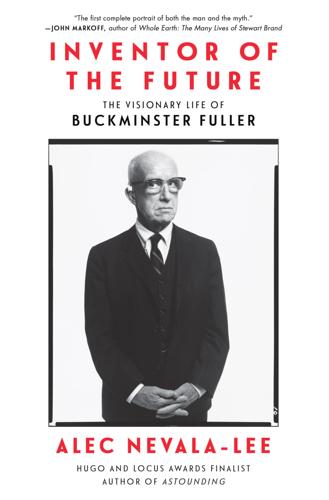
Inventor of the Future: The Visionary Life of Buckminster Fuller
by
Alec Nevala-Lee
Published 1 Aug 2022
Money was a constant concern: Fuller had trouble keeping up his dues for the elite Somerset Club back in Boston, which represented all the establishment values that he felt obliged to maintain, and he was advised to resign. As a fresh start, he considered moving to a California office, but he worked instead with the engineer Martin Chamberlain to overhaul the Joliet plant. While the world marveled at Charles Lindbergh’s solo flight across the Atlantic, which Fuller later said could never have occurred “if he brought along a board of directors,” he brooded over his precarious position at the company. When Leslie married her second husband, John Nelson Borland II, Fuller felt unable to take time off to attend the wedding.
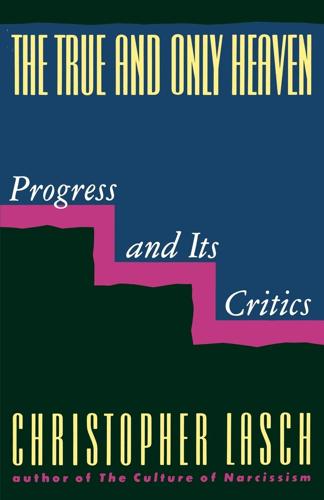
The True and Only Heaven: Progress and Its Critics
by
Christopher Lasch
Published 16 Sep 1991
Ignoring evidence that criticism of the wage system was far more closely identified with the populist tradition than with the twentieth‐ century labor movement, Ferkiss rested his case on inflammatory quotations from Huey Long, Father Charles Coughlin, Gerald L. K. Smith, Ezra Pound, Lawrence Dennis, and Charles Lindbergh. Their pronouncements exposed a "common core of doctrine" and thus relieved the historian of populism of the need to trace their ideas to a specific tradition of thought or to a particular history of political agitation. Torn out of its historical context—the struggle to preserve the moral virtues conferred by property ownership against the combined threat of wage labor and the collectivization of property—"populism" became a makeshift category that included everything that fell outside a liberal or social democratic consensus.

Frommer's California 2009
by
Matthew Poole
,
Harry Basch
,
Mark Hiss
and
Erika Lenkert
Published 2 Jan 2009
The Holly wood cr owd w ould take Hearst’s private railway car from Los Angeles to San Luis Obispo, where a fleet of limousines wait ed to transport them to San Simeon. Those who didn’t come by train w ere treated to a flight on Hearst ’s private plane fr om the Burbank airport (MGM head Irving Thalberg and his wife, Norma Shearer, preferred this mode of transpor tation). Hearst, an a vid aviator, had a landing strip built; Charles Lindbergh used it when he flew up f or a visit in the summer of 1928. Oh, if the walls c ould talk. Atop one of the castle t owers are the hexagonal Celestial Suit es. One was a fa vorite of Clark G able and C arole Lombard, who would be star tled out of their r omantic slumber b y the clamor of 18 carillon bells o verhead.
…
Willed to the state of California in 1944, the 168acre estate is now both a park and a historic site, supervised by the Department of Parks and Recreation. Visitors may explore the grounds, the former stables, and the 31-r oom house filled with the original furnishings, including a porch swing in the living room and many Native American rugs and baskets. Charles Lindbergh and his wife, Anne Morrow Lindbergh, hid out her e in the 1930s during par t of the craz e that followed the kidnap and murder of their first son. There are picnic tables, but no food is sold. Guided Ranch House tours are available as well. Who’s Will Rogers, you ask? He was born in Oklahoma in 1879 and became a cowboy in the Texas Panhandle before drifting into a Wild West show as a folksy , speechifying 559 Value F ree Culture To beef up att endance and g ive indigent f olk like us tra vel writ ers a br eak, almost all of L.A. ’s ar t galleries and museums ar e open fr ee t o the public 1 day of the w eek or month (or both), and sev eral char ge no admission.

Wired for War: The Robotics Revolution and Conflict in the 21st Century
by
P. W. Singer
Published 1 Jan 2010
When asked about his thoughts on the implications of arming robots, for example, Brian Miller, our NASCAR engineer turned roboticist, simply responds, “I stay out of politics.” Likewise, Sebastian Thrun pointedly changes the subject when the topic of the political impact of his research comes up. “I am ignoring all of this to build this vehicle.” He says he just focuses on the path of invention and discovery and compares his work to Charles Lindbergh’s preparations for the first flight across the Atlantic. “He didn’t do it thinking about all the regulations for transatlantic passenger travel it would inspire. He just did it.” It is not that the researchers don’t realize there are big issues at hand; indeed, the idea of having a major impact is what drives many of them to robotics research, as opposed to any of the other scientific fields in which they would thrive.
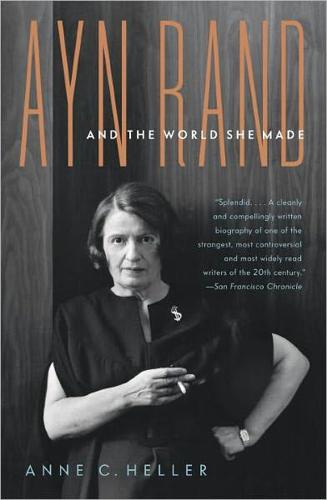
Ayn Rand and the World She Made
by
Anne C. Heller
Published 27 Oct 2009
Although Rand used many of the same ideas and motifs in both narratives, by the 1950s she appeared to be less hopeful that minds can be changed, villains converted, and mankind in general saved; a sealed world became her only answer. It’s remarkable that this story is set aboard an airplane, let alone one that orbits the earth. If Rand’s memory is correct, she wrote it four years before Charles Lindbergh crossed the Atlantic Ocean. The explanation may lie in an influence she never publicly spoke of: the stories and novels of a few then-famous Russian futurist and surrealist writers who lived in St. Petersburg in the early 1920s and made their names by envisioning the utopian, and anti-utopian, potential of the decade’s new machines.
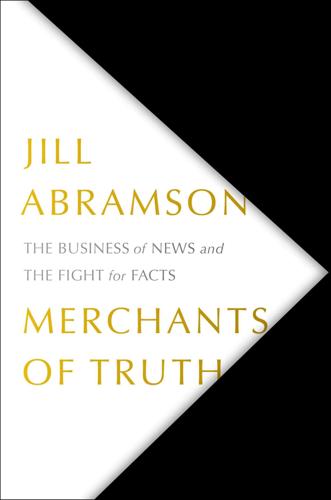
Merchants of Truth: The Business of News and the Fight for Facts
by
Jill Abramson
Published 5 Feb 2019
In that boisterous age, presses roared in the basement of the Times Building (the namesake of Times Square), typewriters clacked, and bookies ran in and out of the newsroom. Next to Sulzberger’s office was the imposing boardroom dominated by a huge mahogany table and walls that were covered with signed portraits of dignitaries who had visited the offices, including several American presidents, Charlie Chaplin, Charles Lindbergh, and an array of foreign leaders. There were so many that there was a special book in the room to identify them. President Hamid Karzai of Afghanistan and Secretary of State Condoleezza Rice had been recent guests at sessions where Sulzberger introduced them, then handed them over for questioning by the journalists on his editorial board.
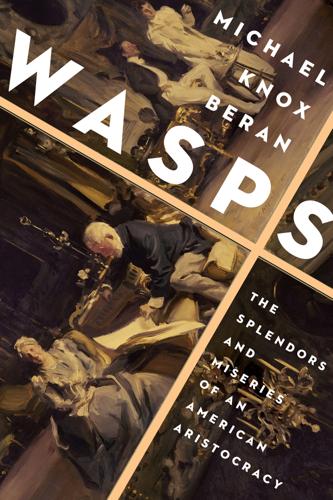
Wasps: The Splendors and Miseries of an American Aristocracy
by
Michael Knox Beran
Published 2 Aug 2021
But one Sunday in November he took time off to join House and Auchincloss for a motor tour of the old lines and battle places. Returning to Paris that night, he dined at Voisin’s with Captain Walter Lippmann, his New Republic employee, and Dwight Morrow, the Morgan partner whose daughter Anne would one day marry Charles Lindbergh. The next morning Straight woke with a chill and kept his bed. Daisy Harriman, forsaking her Red Cross duties, came to sit beside him, and various American military doctors attended him; Sherrard Billings visited daily. Lippmann, too, was by this time suffering from influenza, as were House and Grew.
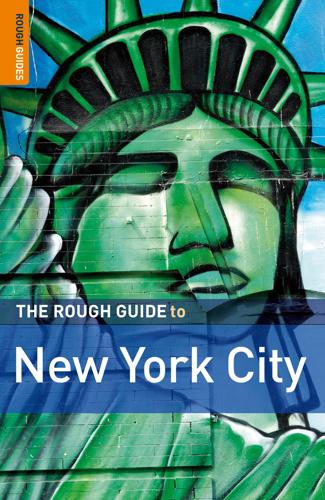
The Rough Guide to New York City
by
Martin Dunford
Published 2 Jan 2009
Its front and sides are gleaming white marble, but the back of the building, which faces north, is dull red sandstone – allegedly because the architects couldn’t imagine anyone peering around behind the structure, which was built when this area was at the farthest north fringe of the city. The building’s first moment of fame came in 1865 when Abraham Lincoln’s body lay in state here for 120,000 sorrowful New Yorkers to file past. In 1927, the city feted aviator Charles Lindbergh, lately returned from Paris, and the building became the traditional finishing point for tickertape parades down Broadway, over time honoring everyone from astronauts to returned hostages to championship-winning teams. An elegant meeting of arrogance and authority, the building, with its sweeping interior spiral staircase and fine collections of nineteenth-century American art and furnishings, has unfortunately been closed to individual visitors since the July 2003 shooting of City Councilman James E.
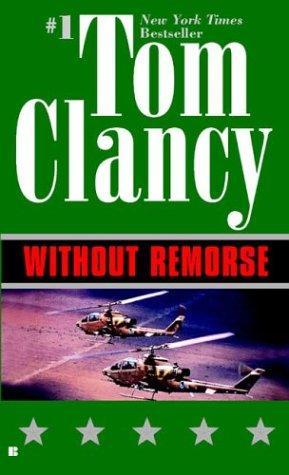
Without Remorse
by
Tom Clancy
Published 2 Jan 1993
The sergeant loved the things as a child will love a particularly entertaining toy. He'd worked with the drone program for ten years, and this particular one he had flown sixty-one times. That was a record for the area. Cody-193 had a distinguished ancestry. Its manufacturers, Teledyne-Ryan of San Diego, California, had built Charles Lindbergh's Spirit of St Louis, but the company had never quite managed to cash in on that bit of aviation history. Struggling from one small contract to another, it had finally achieved financial stability by making targets. Fighter aircraft had to practice shooting at something. The Firebee drone had begun life as just that, a miniature jet aircraft whose mission was to die gloriously at the hands of a fighter pilot - except that the sergeant had never quite seen things that way.

Western USA
by
Lonely Planet
San Diego Automotive Museum MUSEUM ( 619-231-2886; www.sdautomuseum.org; 2080 Pan-American Plaza; adult/child $8/4; 10am-5pm) Buildings around Pan- American Plaza in the park’s southern section date from the 1935 Pacific-California Exposition. It’s all about polished chrome and cool tailfins at this museum. San Diego Air & Space Museum MUSEUM ( 619-234-8291; www.sandiegoairandspace.org; adult/child $16.50/6; 10am-5:30pm Jun-Aug, to 4:30pm Sep-May) Highlights include an original Blackbird SR-71 spy plane and a replica of Charles Lindbergh’s Spirit of St Louis, as well as simulators that require an extra charge. San Diego Museum of Art MUSEUM ( 619-232-7931; www.sdmart.org; 1450 El Prado, Plaza de Panama; adult/child $12/4.50; 10am-5pm Tue-Sat, from noon Sun, to 9pm Thu Jun-Sep) Gets accolades for its European old masters and good collections of American and Asian art.
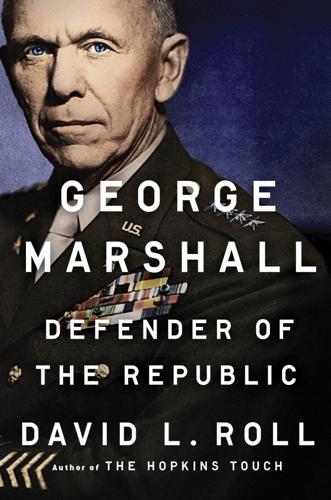
George Marshall: Defender of the Republic
by
David L. Roll
Published 8 Jul 2019
When it was over, Marshall would write an affectionate note to Pershing saying that his years with the great general “will always remain the unique experience of my career.”60 Throughout the summer of 1919, Marshall accompanied Pershing on trips to revisit battlefields, and to be feted at parades, dinners, dances, and gala receptions in France, Italy, and England. In Paris, Marshall was introduced to Pershing’s chief civilian aide, Dwight Morrow, a partner in J.P. Morgan & Co., the largest and most powerful commercial bank in the United States. Morrow, whose daughter Anne would marry Charles Lindbergh, reportedly offered Marshall a job at Morgan at an annual salary of $30,000 (more than $435,000 today). Marshall graciously turned him down. In London, Marshall stood with Pershing and Winston Churchill in Hyde Park, watching an American “victory” regiment march by in review.61 Churchill turned to Marshall and remarked, “What a magnificent body of men never to take a drink.”62 Churchill was, of course, referring to the fact that Prohibition in America was about to go into effect.
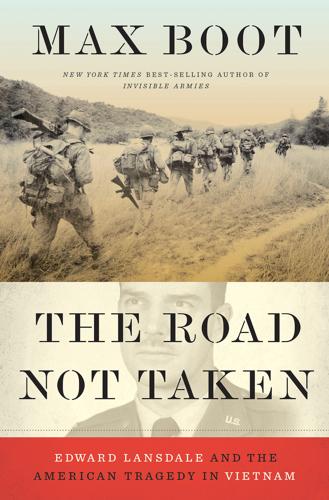
The Road Not Taken: Edward Lansdale and the American Tragedy in Vietnam
by
Max Boot
Published 9 Jan 2018
His greatest achievement was to complete enough extra coursework to graduate a semester early, in December 1926.6 GOING FROM an old institution of learning to a new one, Lansdale entered the University of California at Los Angeles, better known as UCLA, early in 1927—a year that would see Charles Lindbergh’s celebrated solo flight across the Atlantic and the release of the first full-length motion picture with sound. The university was but eight years old and the campus was still located, as it had been since its inception in 1919, on a 25-acre plot on the outskirts of downtown Los Angeles. It would not move to its present location in Westwood—the name bestowed by the real estate developers Harold and Edwin Janss on an empty 383-acre tract near the Pacific Ocean—until Lansdale was a junior.
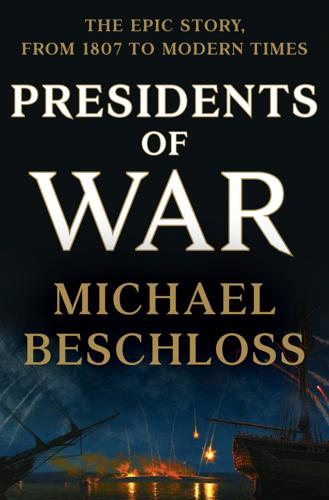
Presidents of War
by
Michael Beschloss
Published 8 Oct 2018
That night, in a fireside chat, Roosevelt (no doubt recalling Wilson’s demand of 1914 that Americans be “impartial in thought, as well as action”) told radio listeners, “This nation will remain a neutral nation, but I cannot ask that every American remain neutral in thought as well.” Still he soon asked the leaders of Congress to call their members back from summer recess to repeal the Neutrality Acts. Outraged by the growing possibility of American involvement in Europe, Charles Lindbergh, an American hero since making the first transatlantic solo aerial crossing, gave his first formal speech since the kidnapping and murder of his infant son in 1932. By radio, Lindbergh warned that the new conflict was “not a question of banding together to defend the white race from invasion” but “simply one of those age-old struggles within our own family of nations, a quarrel rising from the errors of the last war.”

Palo Alto: A History of California, Capitalism, and the World
by
Malcolm Harris
Published 14 Feb 2023
Another pillar in Hoover’s air plan was to spur the industry by awarding lucrative and exclusive mail delivery contracts; Western won the western contract, and when the Daniel and Florence Guggenheim Foundation sought a firm to run the first experiment in passenger travel, they picked Western, too. After Charles Lindbergh survived his 1927 solo flight across the Atlantic, the Guggenheims paid him to barnstorm the United States to promote aviation. This, along with Hoover’s election, was enough for Wall Street, and big finance piled into planes in the spring of 1929. The Lehman and Harriman banking fortunes teamed up with aircraft pioneer Sherman Fairchild (son of an IBM cofounder, as well as a future microchip financier) to buy a controlling interest in over 20 small airlines via a holding company.

The Rise and Fall of American Growth: The U.S. Standard of Living Since the Civil War (The Princeton Economic History of the Western World)
by
Robert J. Gordon
Published 12 Jan 2016
Finally, after 20 minutes of pulling, the engine caught and Cuddeback roared off for Elko.34 So well recorded was that day that a letter addressed to Charles J. Rose, U.S. Air Mail Field, Elko, Nevada, signed by the pilot, has pride of place today in the corporate archives of United Airlines. Now let us flash forward five years to November 19, 1931, in an event involving Charles Lindbergh just four years after his solo transatlantic flight, the first ever, had made him the most famous man in the world. Lindbergh was sitting in an airport lounge with Igor Sikorsky, a Russian immigrant best known for inventing the first viable helicopter in 1939. Together the two men began preliminary sketches on the back of a menu, as they envisaged the plane, to be called the Sikorsky S-42, that four years later would fly the first nonstop service from San Francisco to Honolulu, 2,400 miles away.35 And that same plane would continue onward to Manila in the Philippines, then an American colony.36 Through a curious victory of necessity birthing invention, aircraft designers somehow figured out how to achieve that range at a time when the newly introduced DC-3 carried only twenty-one passengers and could fly only as far as New York to Chicago.
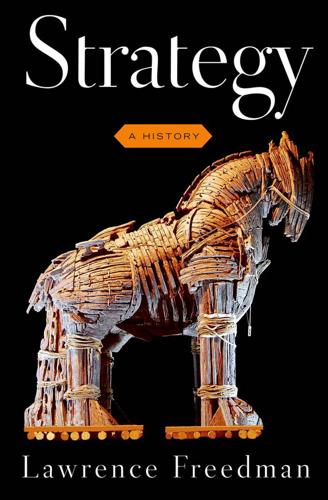
Strategy: A History
by
Lawrence Freedman
Published 31 Oct 2013
Although the first senator to come out for Roosevelt and the New Deal, by 1939 he was known as a vigorous isolationist and for accusations that Jews in Hollywood were using the influence of the movies to stir up prowar fervor. He denied Japan’s hostile intent in the weeks before Pearl Harbor. This background led him to have a later literary incarnation, as Charles Lindbergh’s vice president in Philip Roth’s The Plot Against America (New York: Random House, 2004). 30. Michael Kazin, American Dreamers (see chap. 25, n. 51), 187; Charles Lindblom and John A. Hall, “Frank Capra Meets John Doe: Anti-politics in American National Identity,” in Mette Hjort and Scott Mackenzie, eds., Cinema and Nation (New York: Routledge, 2000).
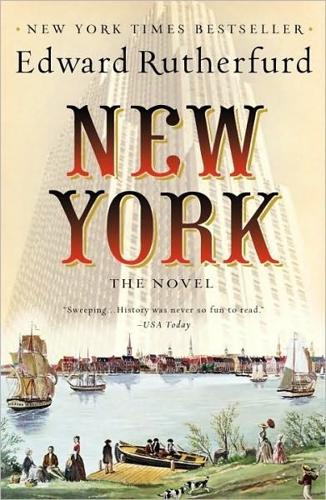
New York
by
Edward Rutherfurd
Published 10 Nov 2009
Louis. By the night of the next day, after flying through rain, wind and fog, sometimes above the clouds and sometimes only feet above the Atlantic waves, the young fellow arrived at Paris’s Le Bourget airport, where a night-time crowd of 150,000 had gathered to meet him. From that moment young Charles Lindbergh became an international sensation. Despite losing two of their own national heroes that month, the French took the young American to their hearts. Breaking all protocol, the Foreign Ministry at the Quai d’Orsay flew the Stars and Stripes from its flagpole. The President of France gave Lindbergh the Légion d’honneur.
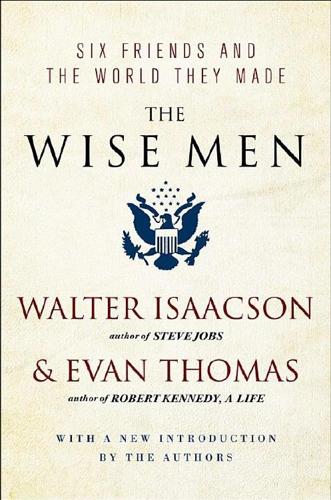
The Wise Men: Six Friends and the World They Made
by
Walter Isaacson
and
Evan Thomas
Published 28 Feb 2012
Germany and Russia, briefly joined in a cynical alliance, carved up Poland between them, plunging Europe into a war that seemed at once both menacing and phony. Congress resisted Roosevelt’s appeals for revisions in the neutrality legislation; the American people seemed surprisingly sympathetic to Charles Lindbergh’s pronouncements that “we must not be misguided by this foreign propaganda that our frontiers lie in Europe.” Perhaps most baffling was a discovery that few in America knew anything about: Niels Bohr, at a meeting of the American Physical Society in Washington that year, reported that his colleagues in Copenhagen had produced 200 million volts of electricity by splitting an atom of uranium.
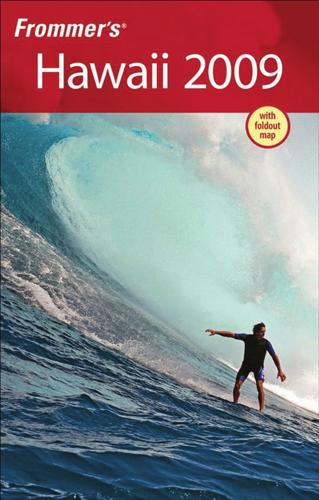
Frommer's Hawaii 2009
by
Jeanette Foster
Published 2 Jan 2008
This little 1876 wood-frame church is one of four Father Damien built “topside” on Molokai. Restored in 1971, the church stands beside a seaside cemetery, where feral cats play under the gaze of a Damien statue amid gravestones decorated with flower leis. King Kamehameha V Hwy. (Hwy. 450), just after mile marker 10. In 1927, Charles Lindbergh soloed across the Atlantic Ocean in a plane called The Spirit of St. Louis and became an American hero. That same year, Ernie Smith and Emory B. Bronte took off from Oakland, California, on July 14, in a single-engine Travelair aircraft named The City of Oakland, headed across the Pacific Ocean for Honolulu, 2,397 miles away.
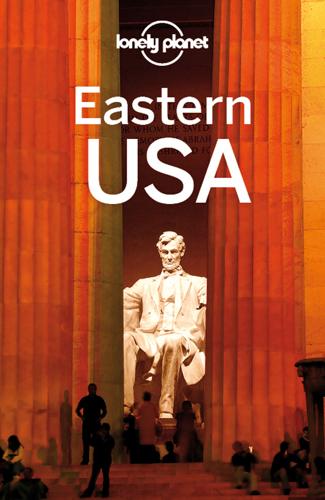
Eastern USA
by
Lonely Planet
All museums are open daily (except Christmas Day) 10am to 5:30pm unless noted. Some have extended hours in summer. Be prepared for lines and bag checks. National Air & Space Museum MUSEUM (cnr 6th St & Independence Ave SW) The Air & Space Museum is the most popular Smithsonian museum; everyone flocks to see the Wright brothers’ flyer, Chuck Yeager’s Bell X-1, Charles Lindbergh’s Spirit of St Louis and the Apollo 11 command module. An IMAX theater, planetarium and ride simulator are all here (adult/child $9/7.50 each). More avionic pieces reside in Virginia at the Steven F Udvar-Hazy Center (Click here), an annex to hold this museum’s leftovers. National Museum of Natural History MUSEUM (cnr 10th St & Constitution Ave SW) A favorite of the kids, the Museum of Natural History showcases dinosaur skeletons, an archae- ology/anthropology collection, wonders from the ocean, and unusual gems and minerals, including the 45-carat Hope Diamond.
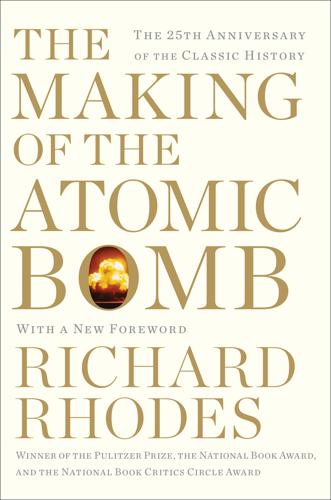
The Making of the Atomic Bomb
by
Richard Rhodes
Published 17 Sep 2012
On August 2 Szilard wrote Einstein hoping “at long last” for a decision “upon whom we should try to get as middle man.”1187 He had seen Sachs in the interim; the economist, who certainly coveted the assignment of representing Albert Einstein to the President, had generously listed the financier Bernard Baruch or Karl T. Compton, the president of MIT, as possible alternates. On the other hand, he had strongly endorsed Charles Lindbergh, though he must have known that Roosevelt despised the famous aviator for his outspoken pro-German isolationism. Szilard wrote that he and Sachs had discussed “a somewhat longer and more extensive version” of the letter Einstein had written with Szilard at their second Peconic meeting; he now enclosed both the longer and shorter versions and asked Einstein to return his favorite along with a letter of introduction to Lindbergh.
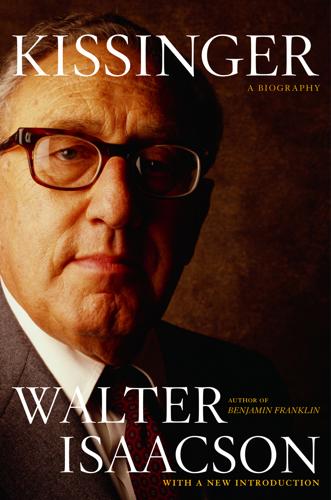
Kissinger: A Biography
by
Walter Isaacson
Published 26 Sep 2005
Nixon remained in Key Biscayne for what he later told David Frost was “the loneliest and saddest Christmas I can ever remember.” As 1972 ended, one final irritant afflicted Nixon: he ended up having to share with Kissinger, rather than enjoy on his own, the designation as Time’s Man of the Year. The distinction was little more than a marketing gimmick begun by Henry Luce as a way to put Charles Lindbergh on the cover at the end of 1927 after having failed to do it when he made his transatlantic flight that May. Yet Nixon became oddly obsessed by it. In one of his daily news summaries in late October, he circled a quote from ABC’s Howard K. Smith suggesting Kissinger as Man of the Year and wrote a note to Kissinger in the margin: “Good!”
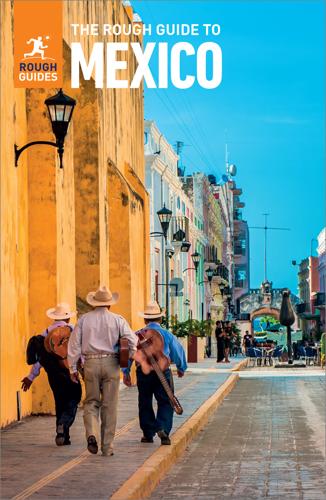
The Rough Guide to Mexico
by
Rough Guides
Published 15 Jan 2022
Rooms are comfortable, if unspectacular, with cable TV and minibars, but the facilities are excellent, and include the lovely Salon Jardín with its stained glass and iron roof, a restaurant, gym, spa and on-site Sanborns restaurant. The lobby has interesting exhibits on the hotel’s history and past clients, who have included Marlon Brando, William Randolph Hearst and Charles Lindbergh. Breakfast included. M$$$ Hotel Del Principado Londres 42; http://hoteldelprincipado.com.mx; Metro Insurgentes. The double rooms (with two double beds) are rather more spacious and get rather more light than the one-bed rooms (in which it’s worth asking for a king-size bed, as these cost no extra), but all have a TV and phone, and there’s free wi-fi, parking facilities and a laundry service.

France (Lonely Planet, 8th Edition)
by
Nicola Williams
Published 14 Oct 2010
It offers excellent value and complimentary breakfast too. Hôtel Lindbergh (Map; 01 45 48 35 53; www.paris-hotel-lindbergh.com; 5 rue Chomel, 7e; Sèvres Babylone; d €98-160, tr €156-180, q €166-190; ) We still haven’t figured out why this 26-room hôtel de charme (charming hotel) is totally kitted out in Charles Lindbergh photos and memorabilia, but it works. We also like the room number plates on the doors with little Paris landmarks, the ample-sized bathrooms and the friendly staff. Hôtel Muguet (Map; 01 47 05 05 93; www.hotelmuguet.com; 11 rue Chevert, 7e; La Tour Maubourg; s/d/tr €103/135/180; ) This hotel strategically placed between Invalides and the Eiffel Tower has 48 generously sized rooms that have been recently renovated.

Lonely Planet France
by
Lonely Planet Publications
Published 31 Mar 2013
Hôtel d’Angleterre HISTORIC HOTEL €€€ Offline map Google map ( 01 42 60 34 72; www.hotel-dangleterre.com; 44 rue Jacob, 6e; s €160, d €220-260; ; St-Germain des Prés) If the walls could talk... The garden of the beautiful 27-room ‘England Hotel’ – a former British Embassy – is where the Treaty of Paris ending the American Revolution was prepared in 1783. Hemingway lodged here in 1921, as did Charles Lindbergh in 1927 after completing the world’s first solo nonstop flight from New York to Paris. Rooms are individually – and exquisitely – decorated; rates include breakfast. Hôtel St-André des Arts HOTEL € Offline map Google map ( 01 43 26 96 16; 66 rue St-André des Arts, 6e; s/d/tr/q incl breakfast €75/95/119/132; ; Odéon) Located on a lively, restaurant-lined thoroughfare, this 31-room hotel is a veritable bargain in the centre of the action.